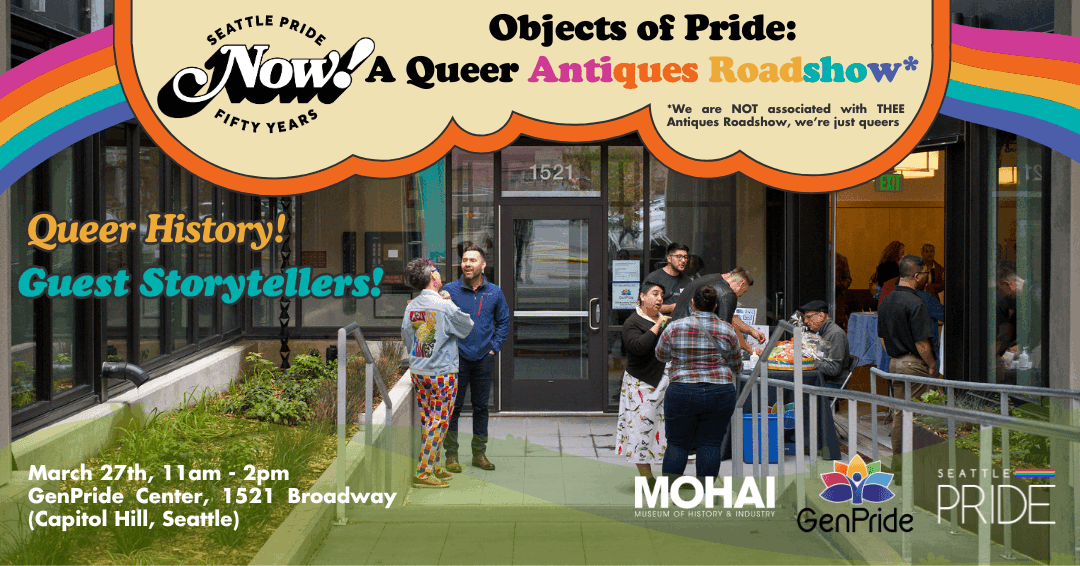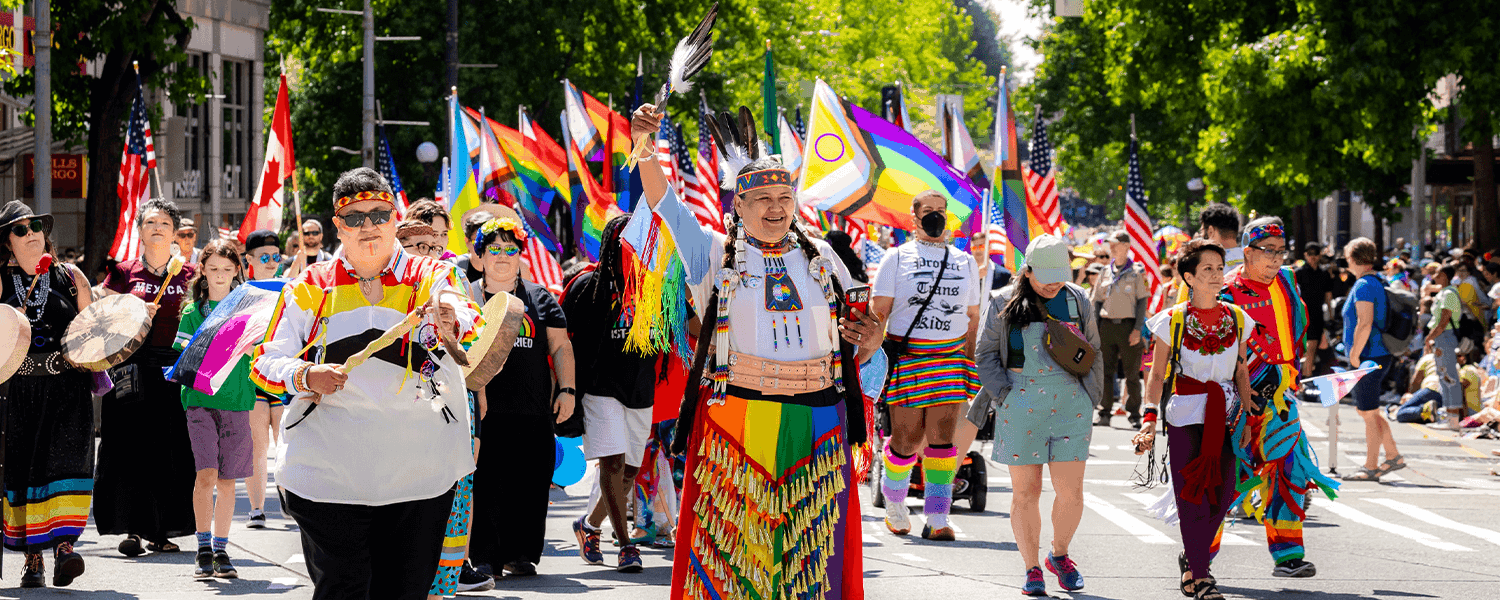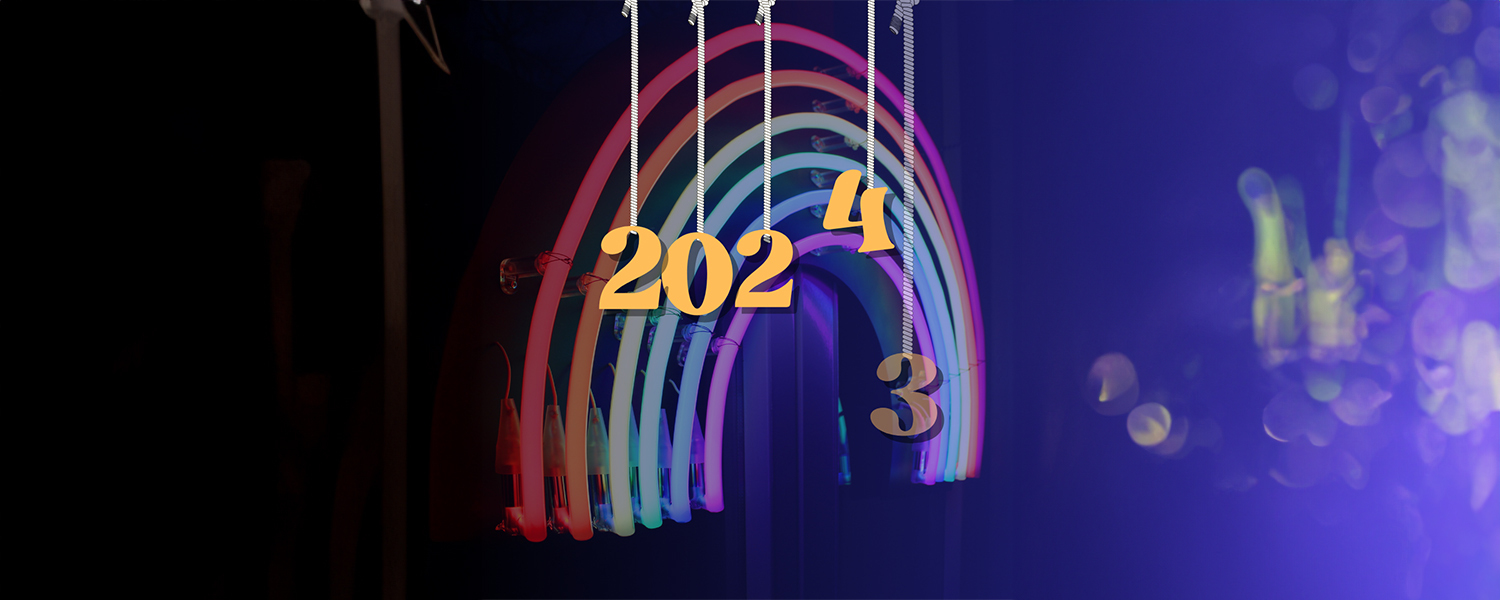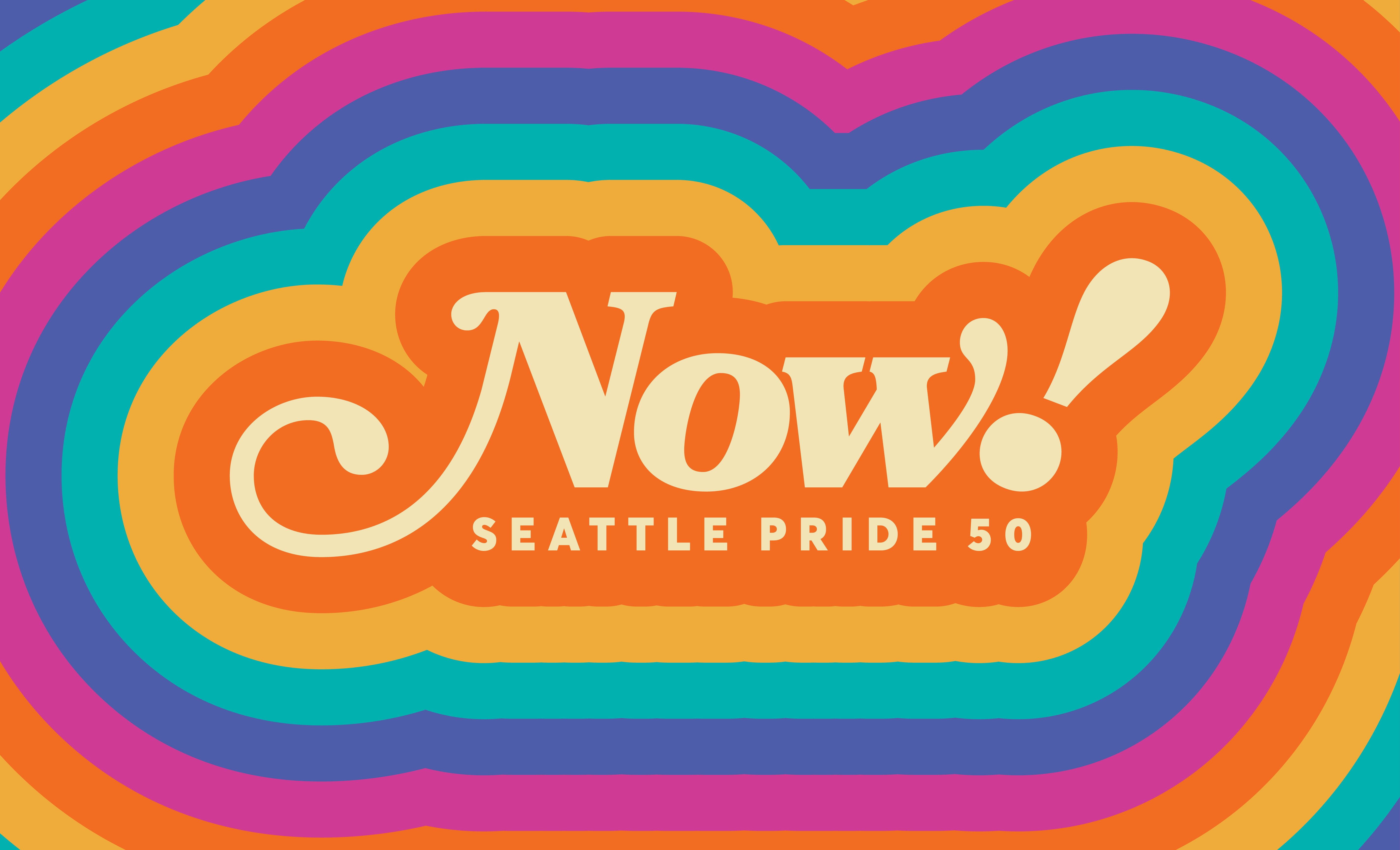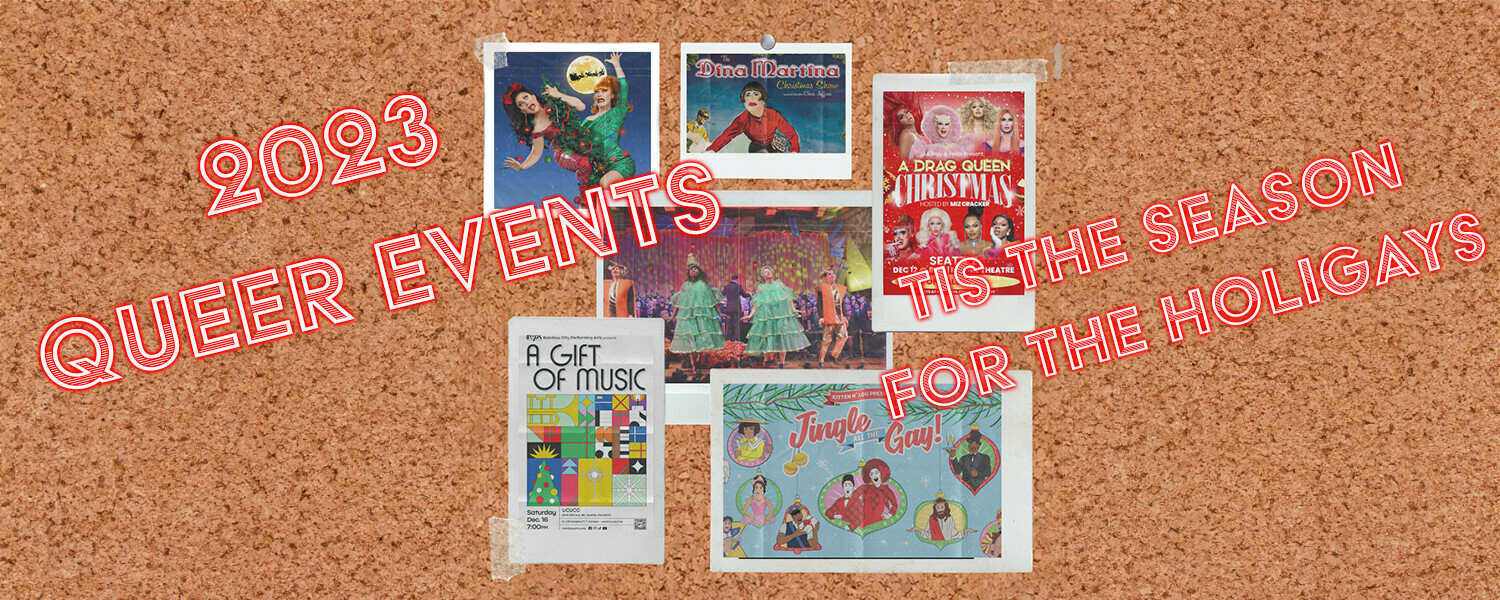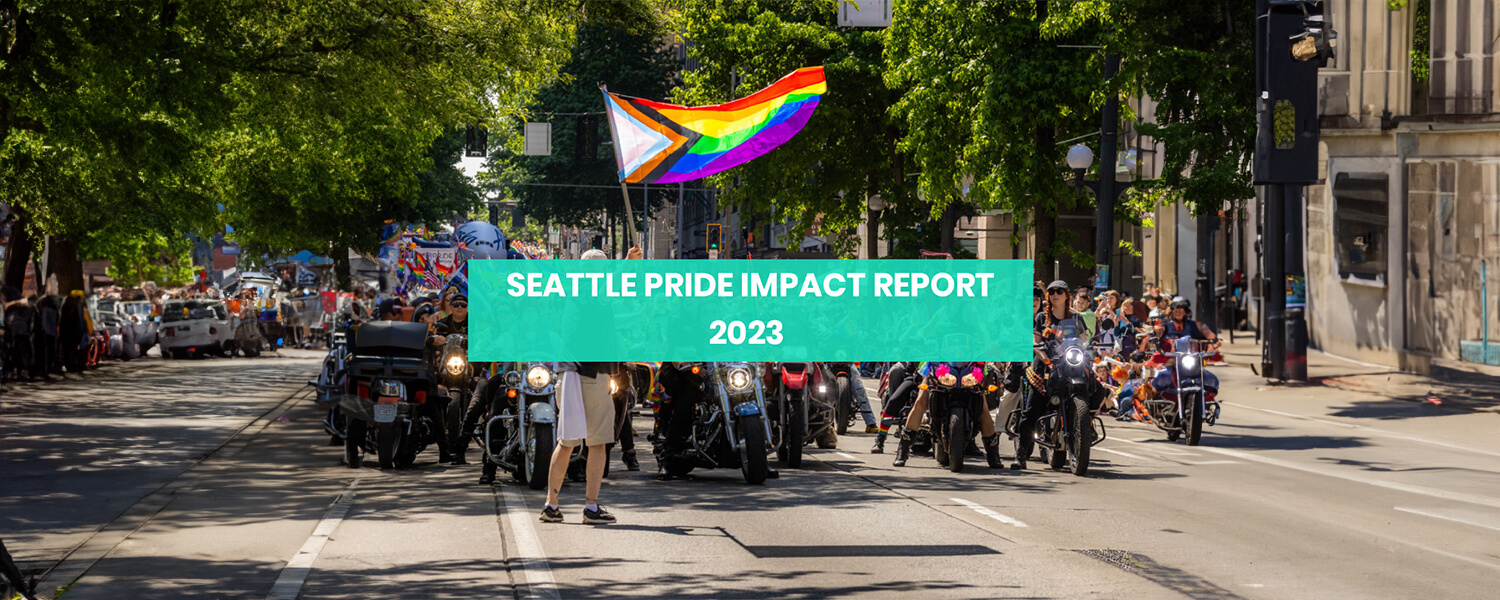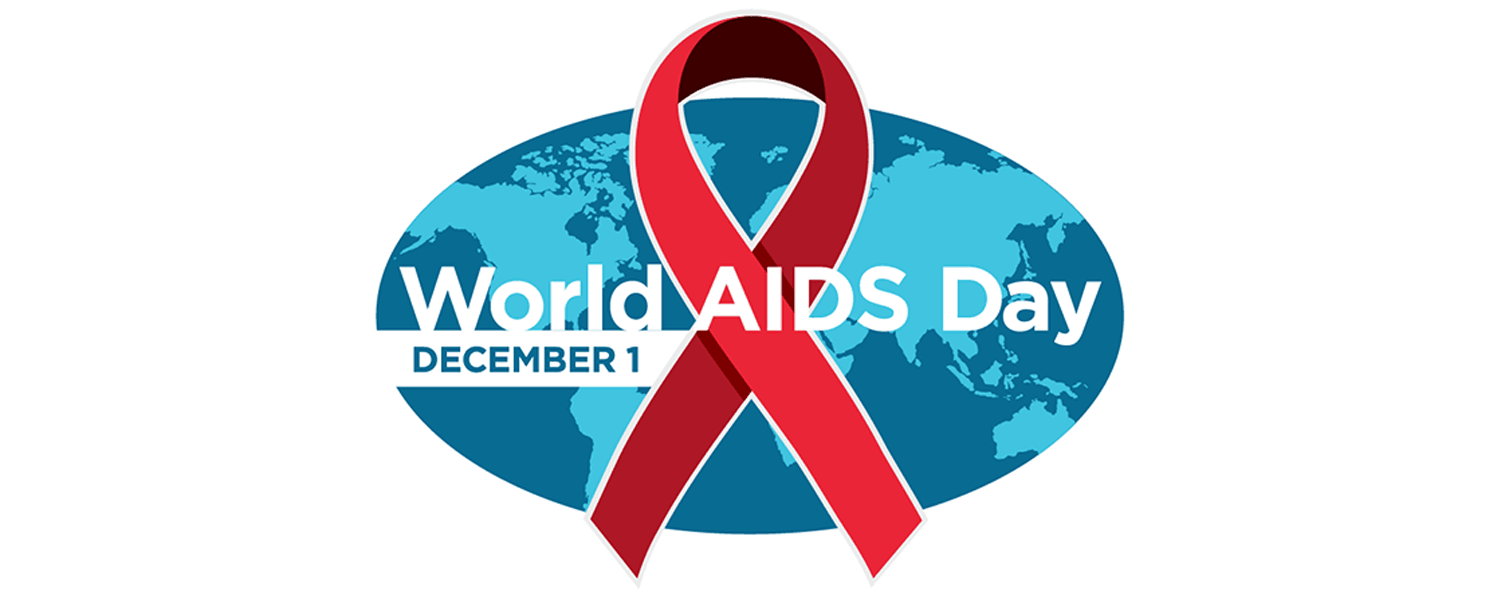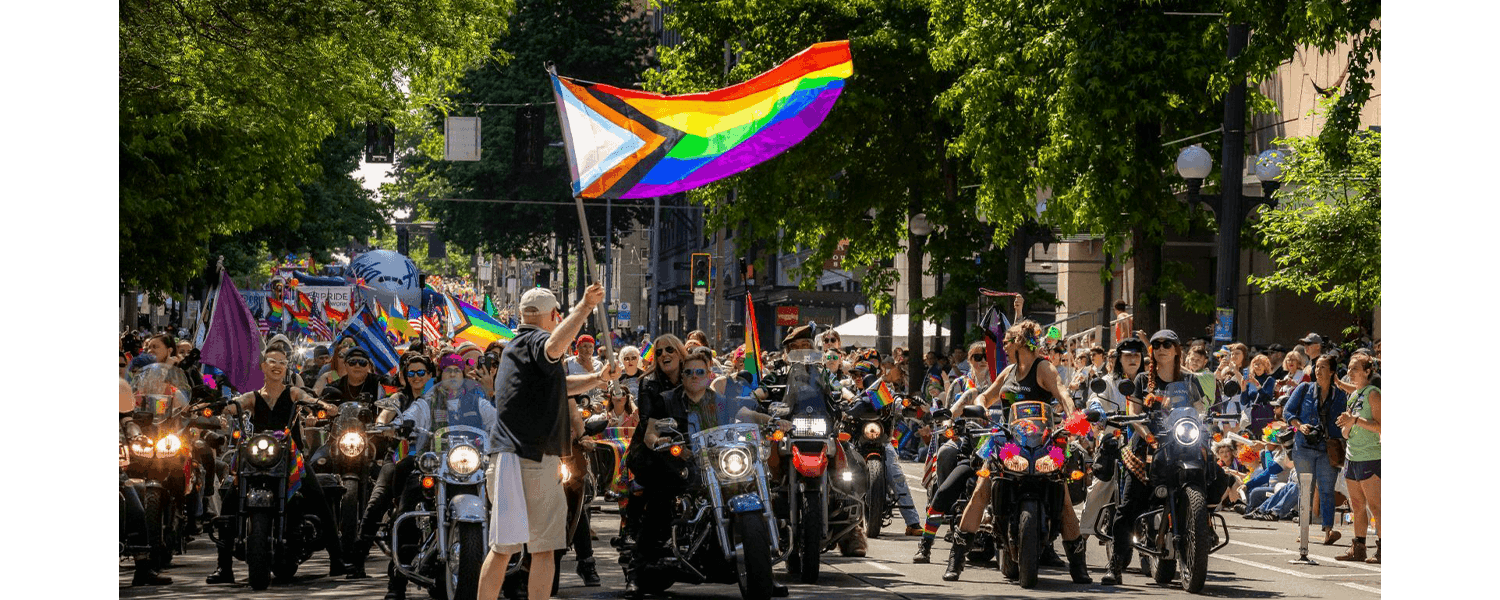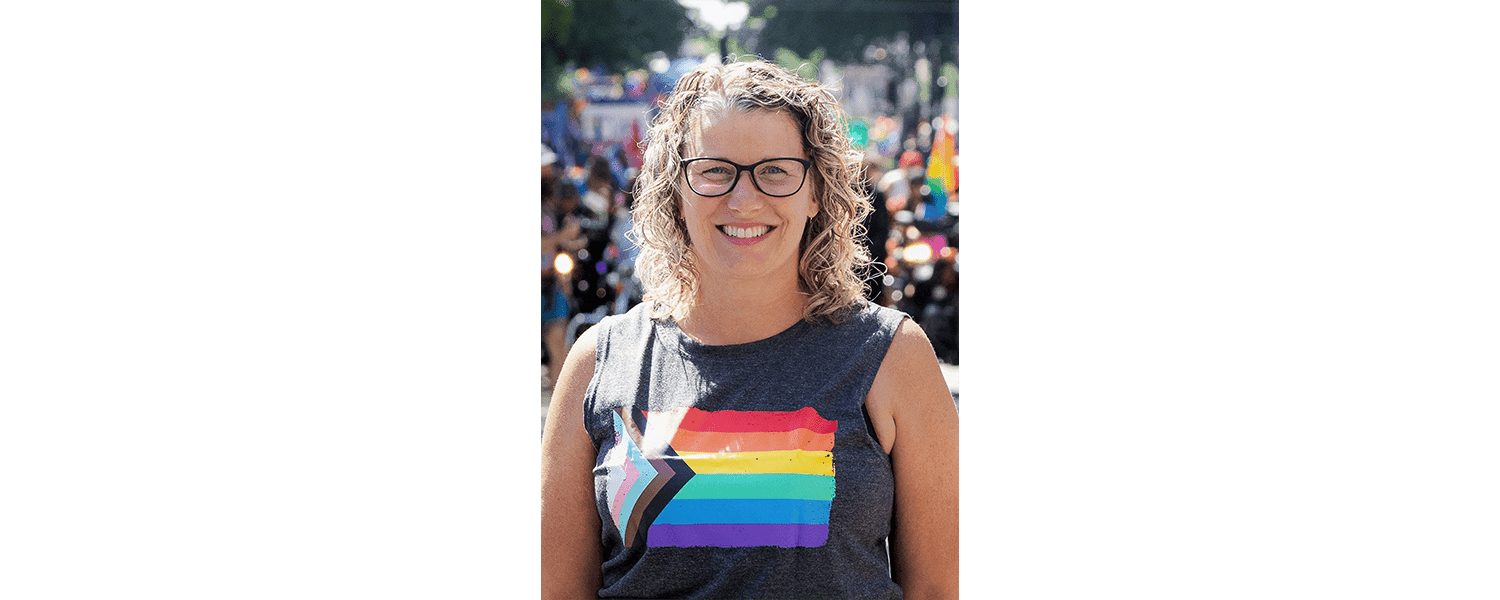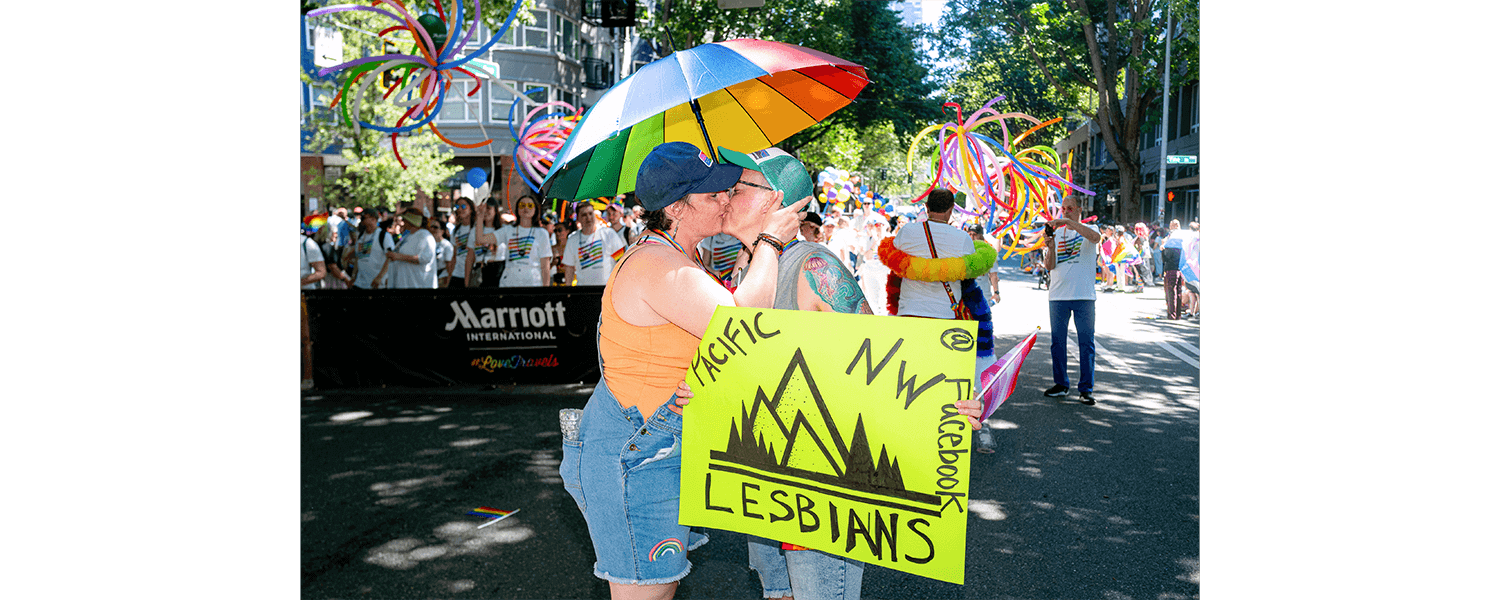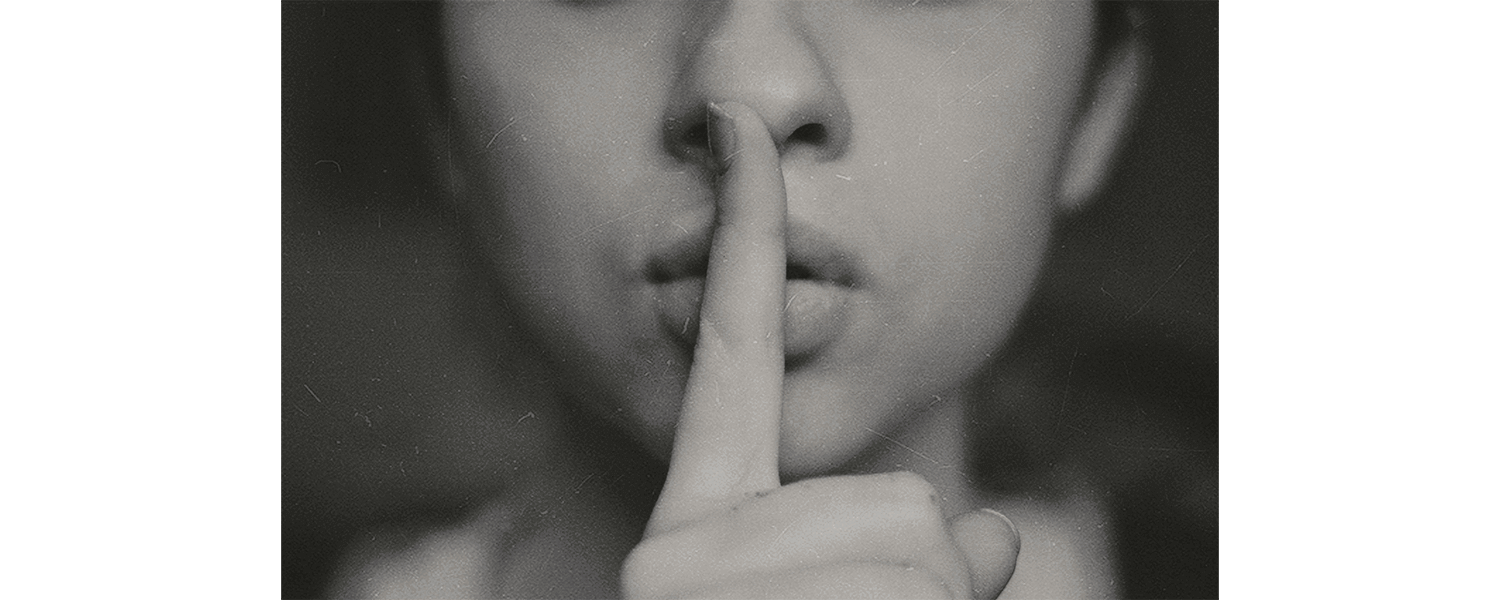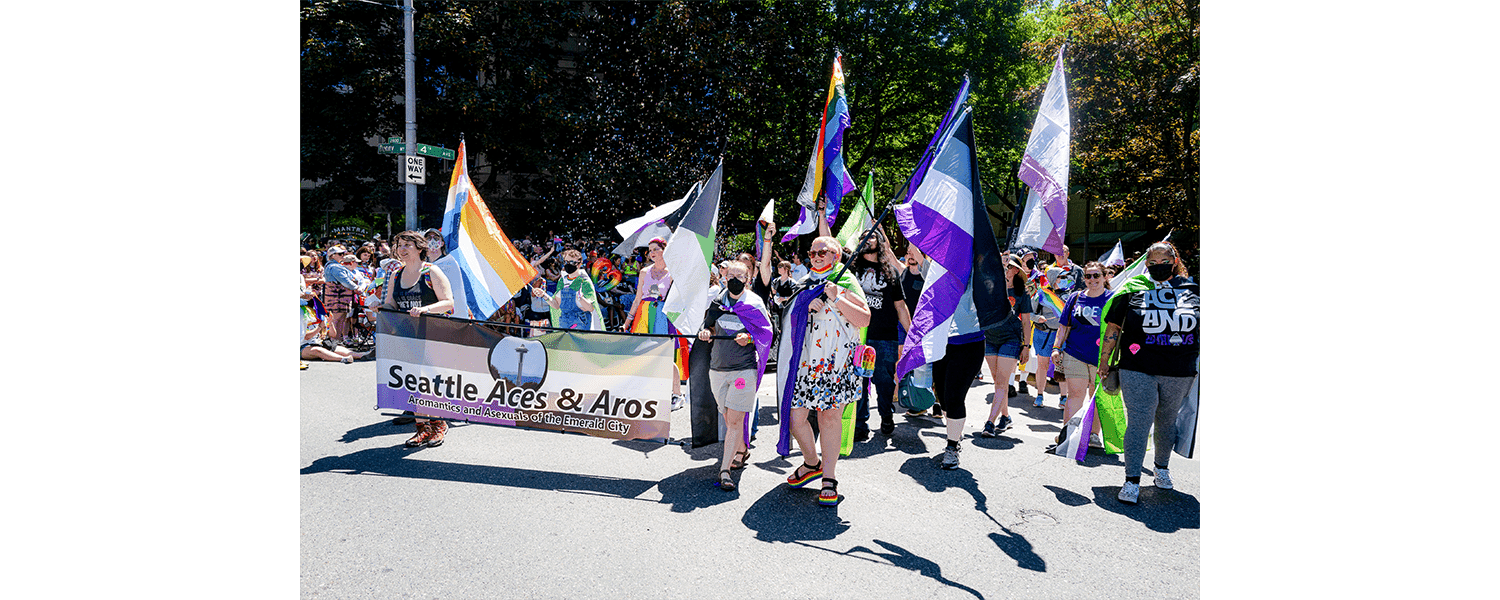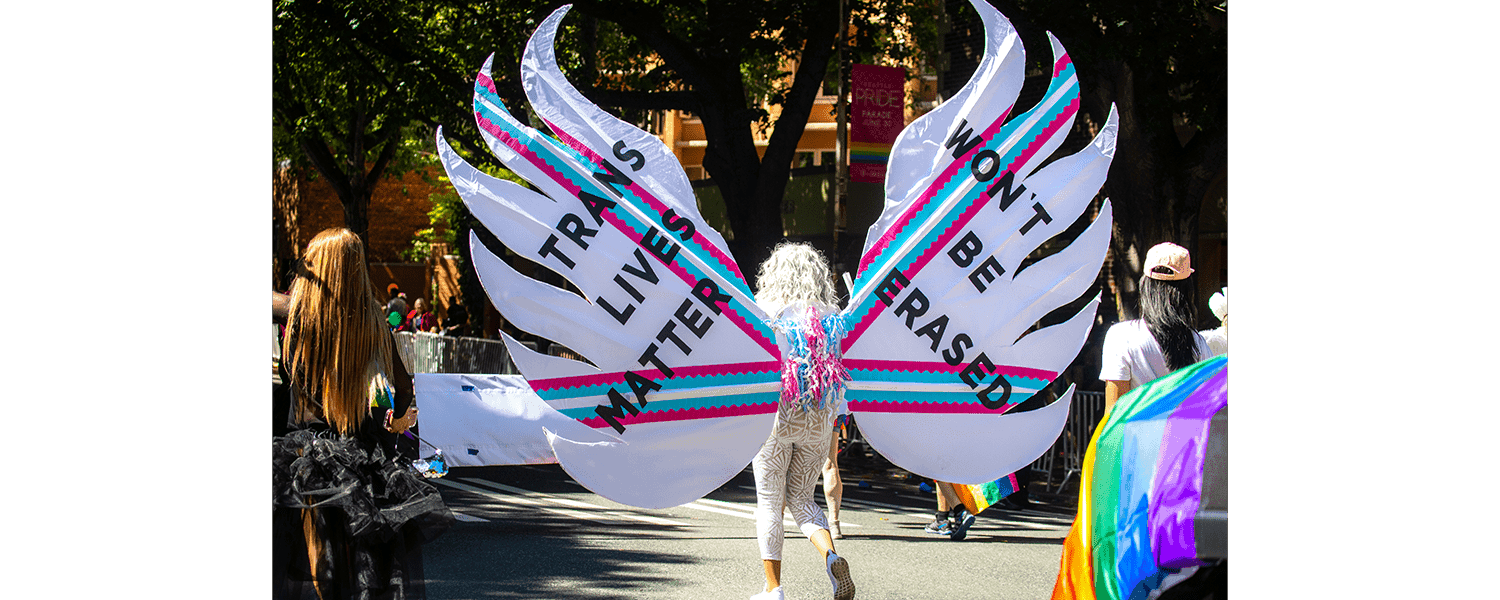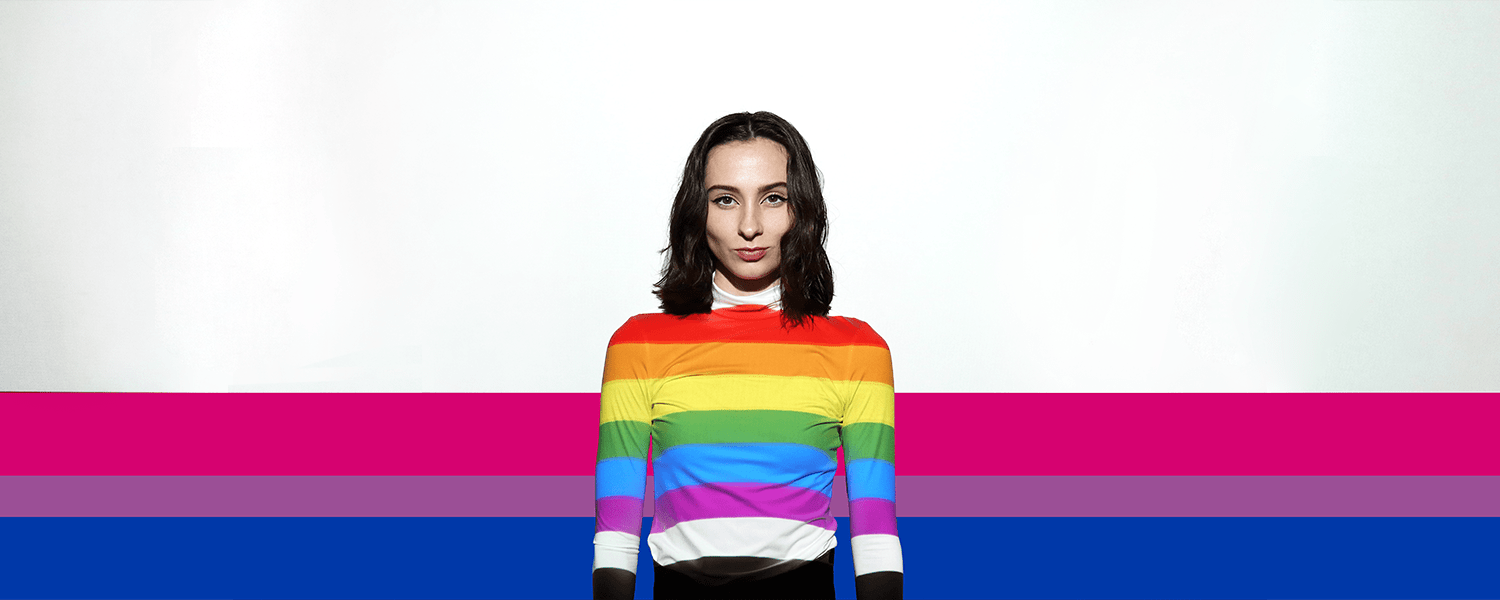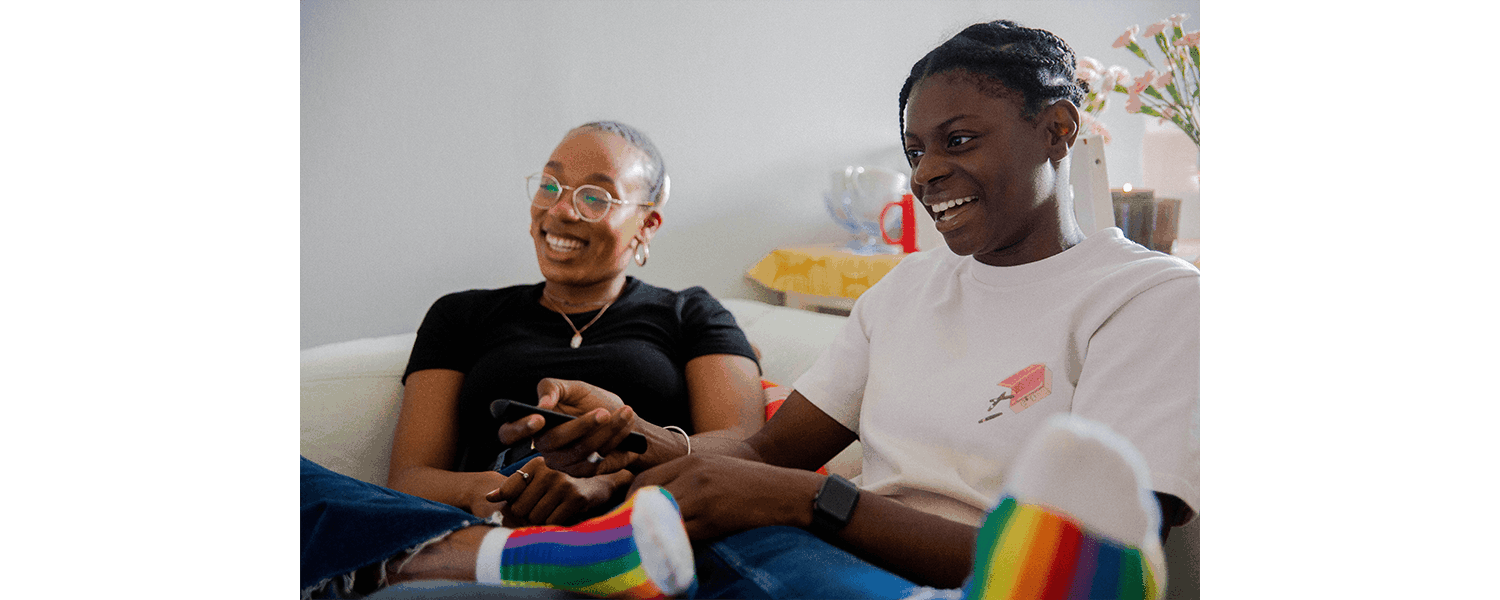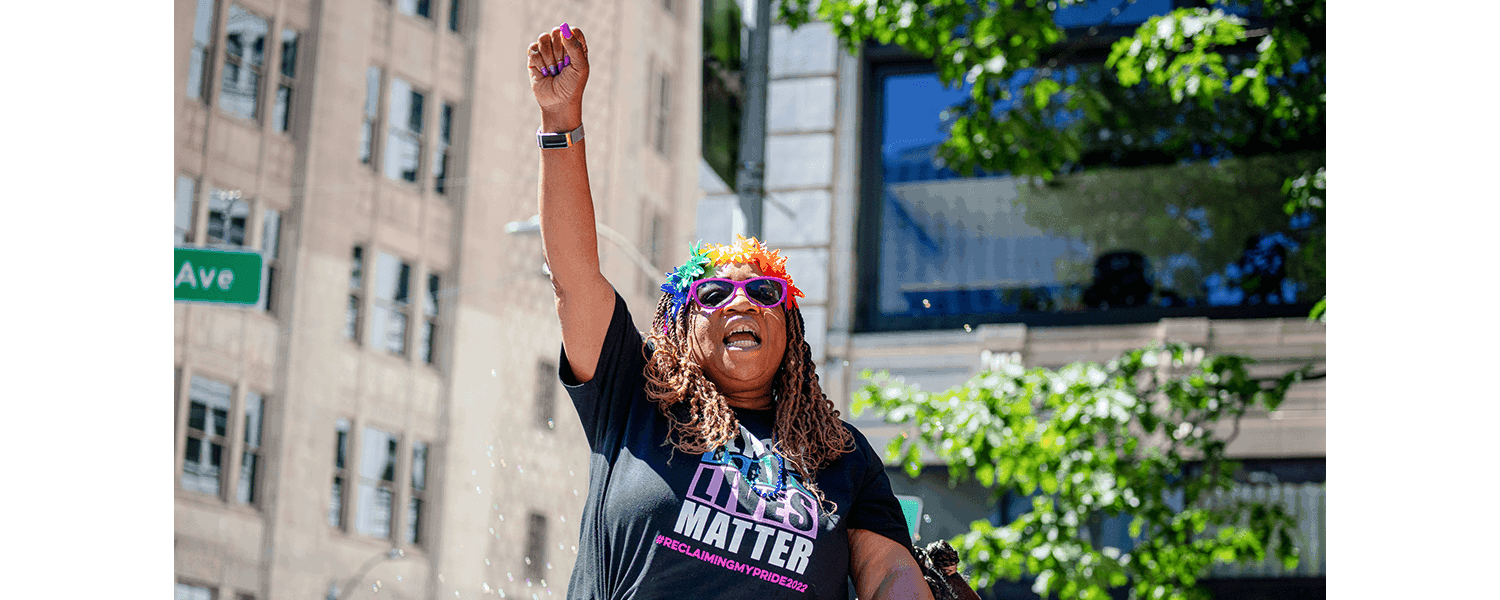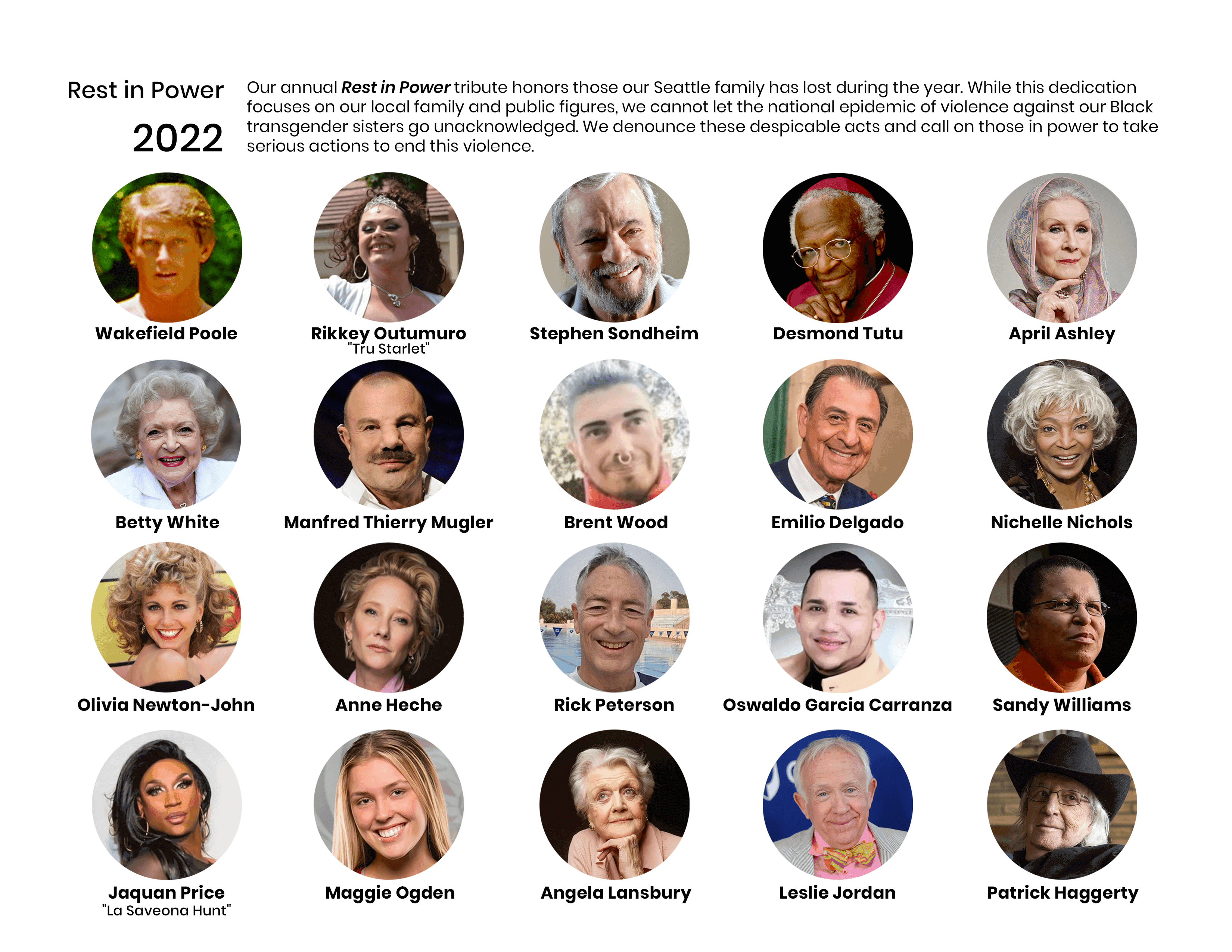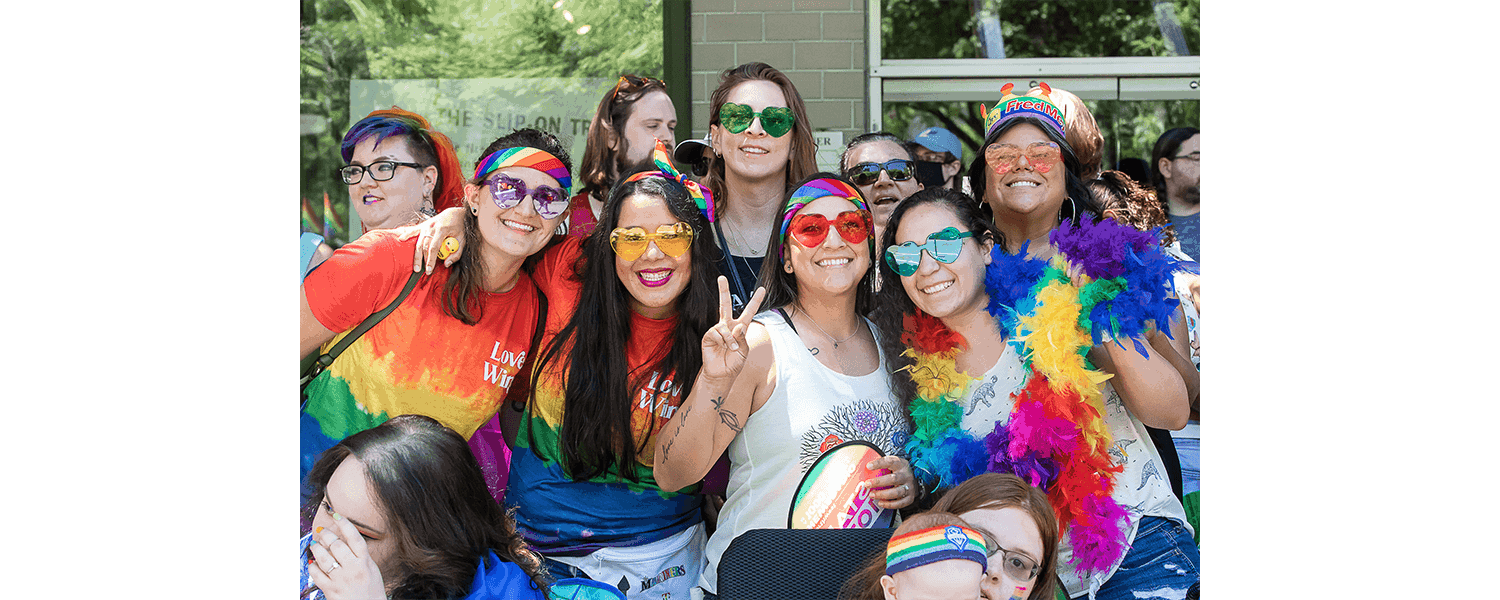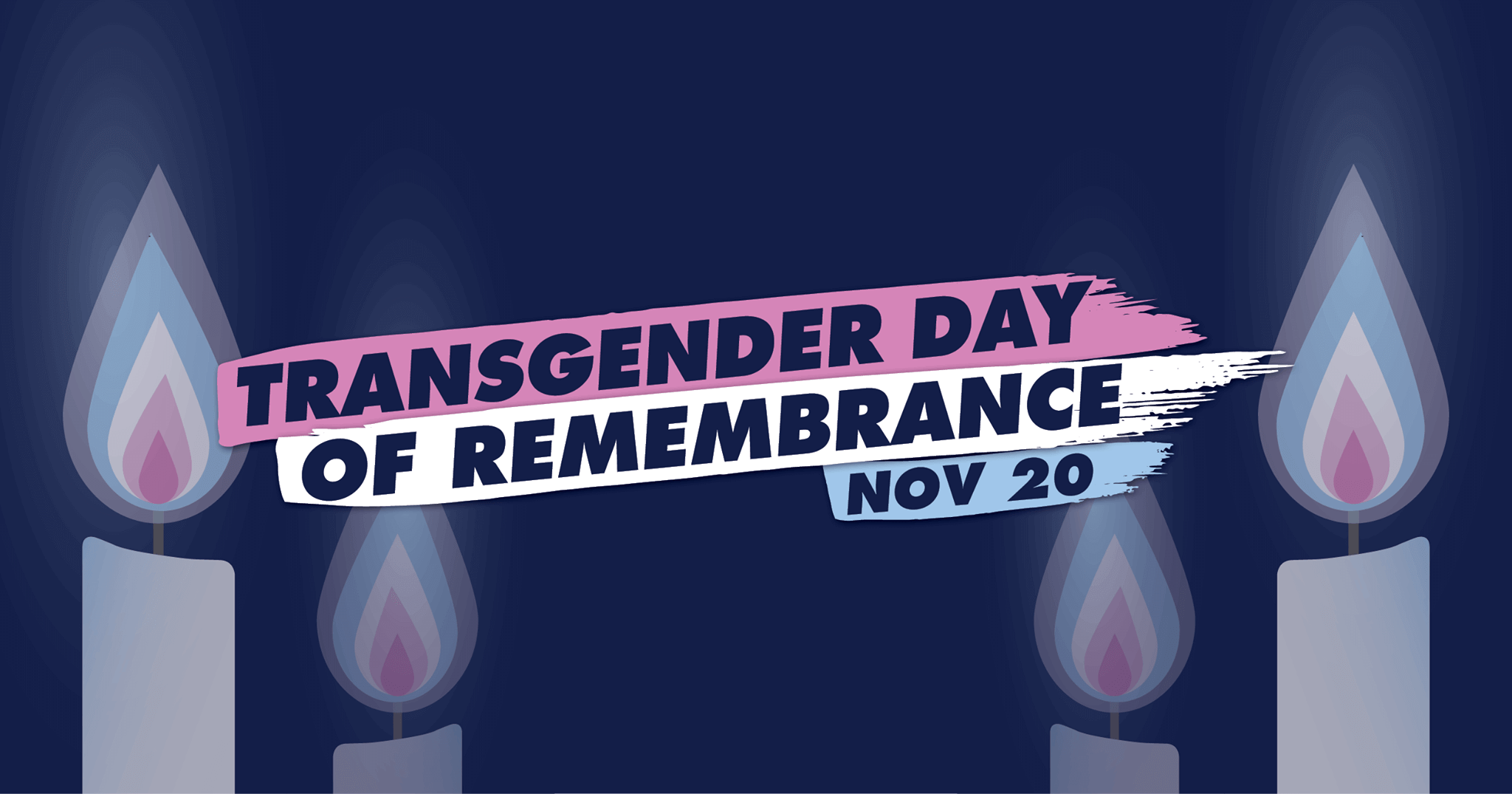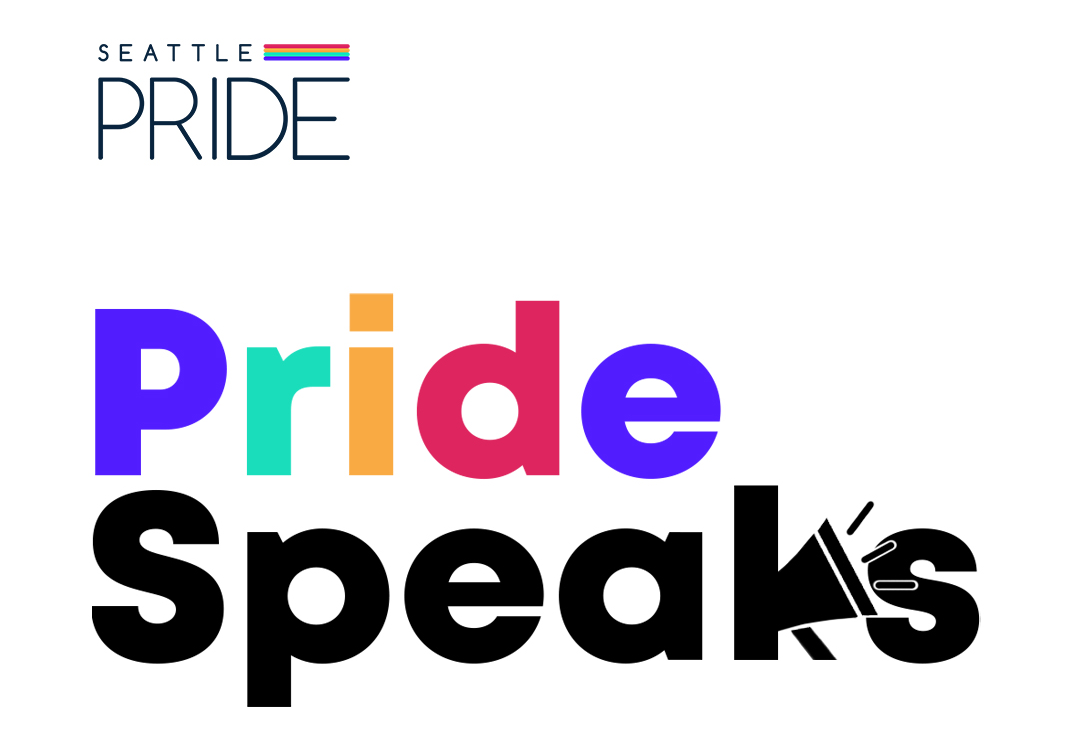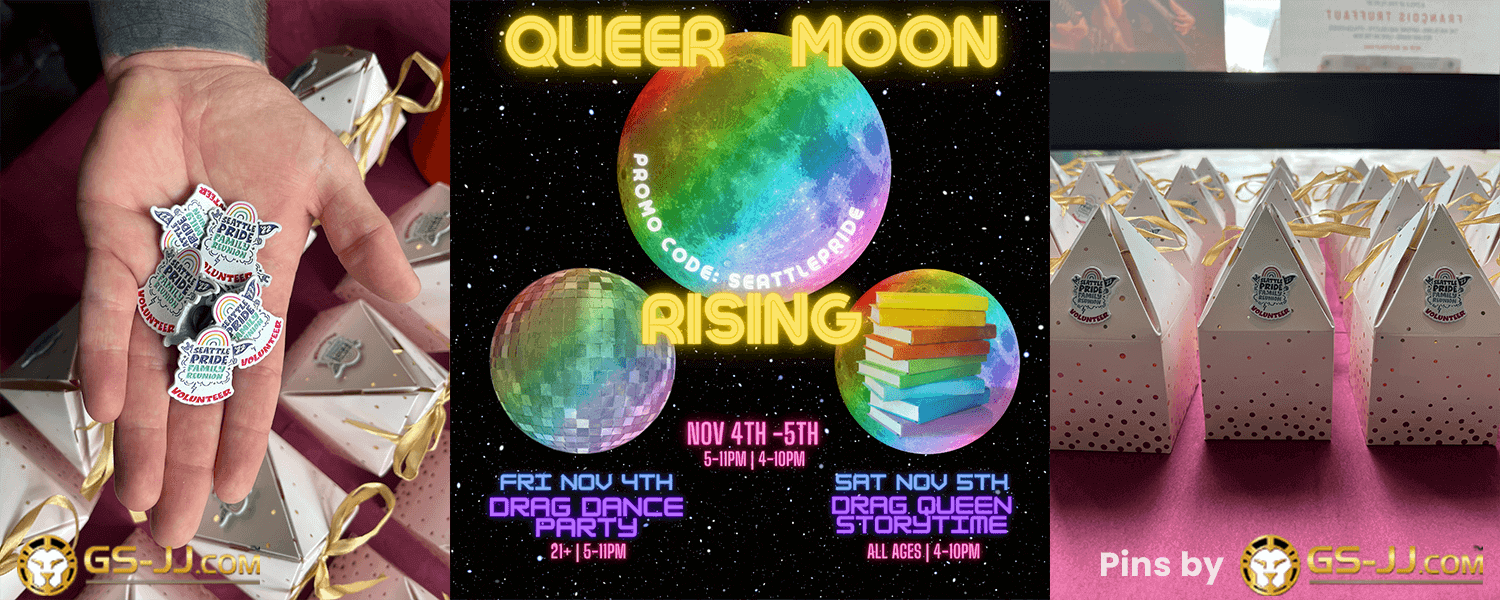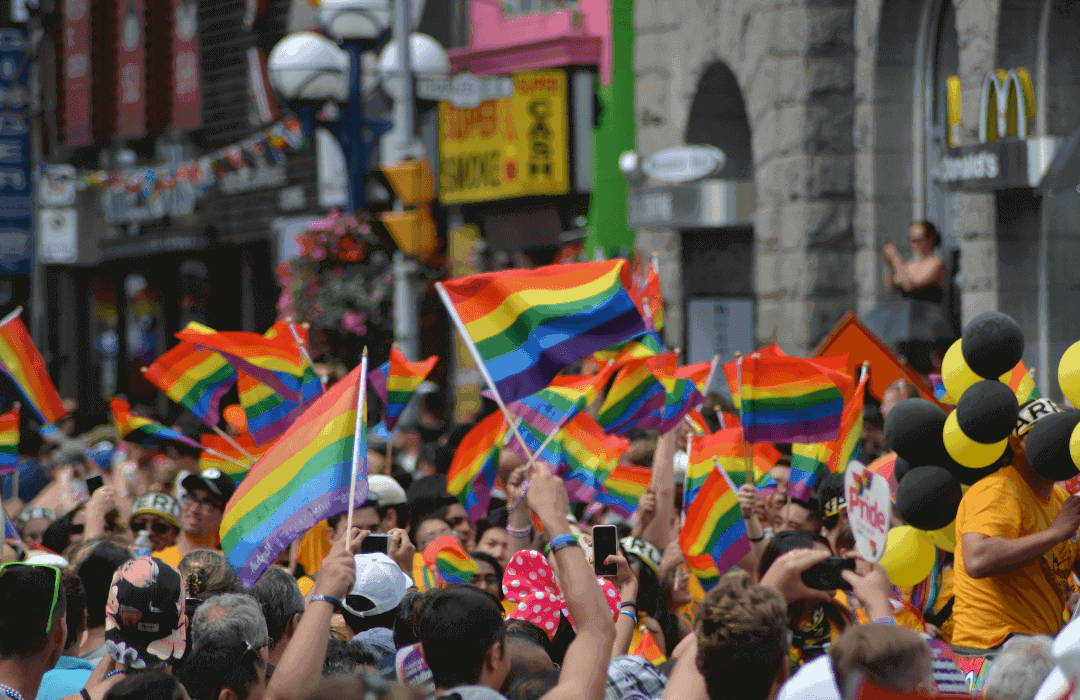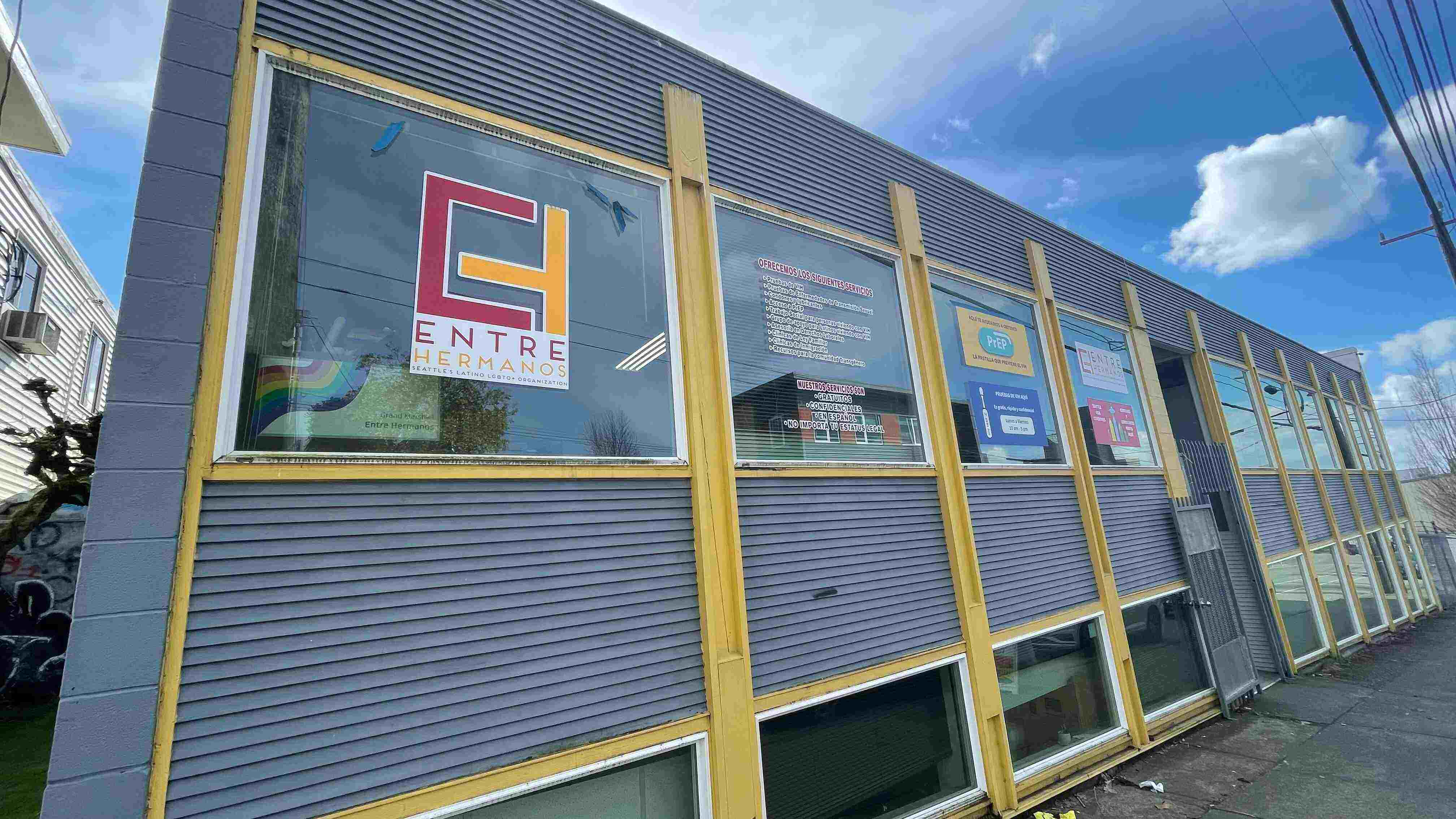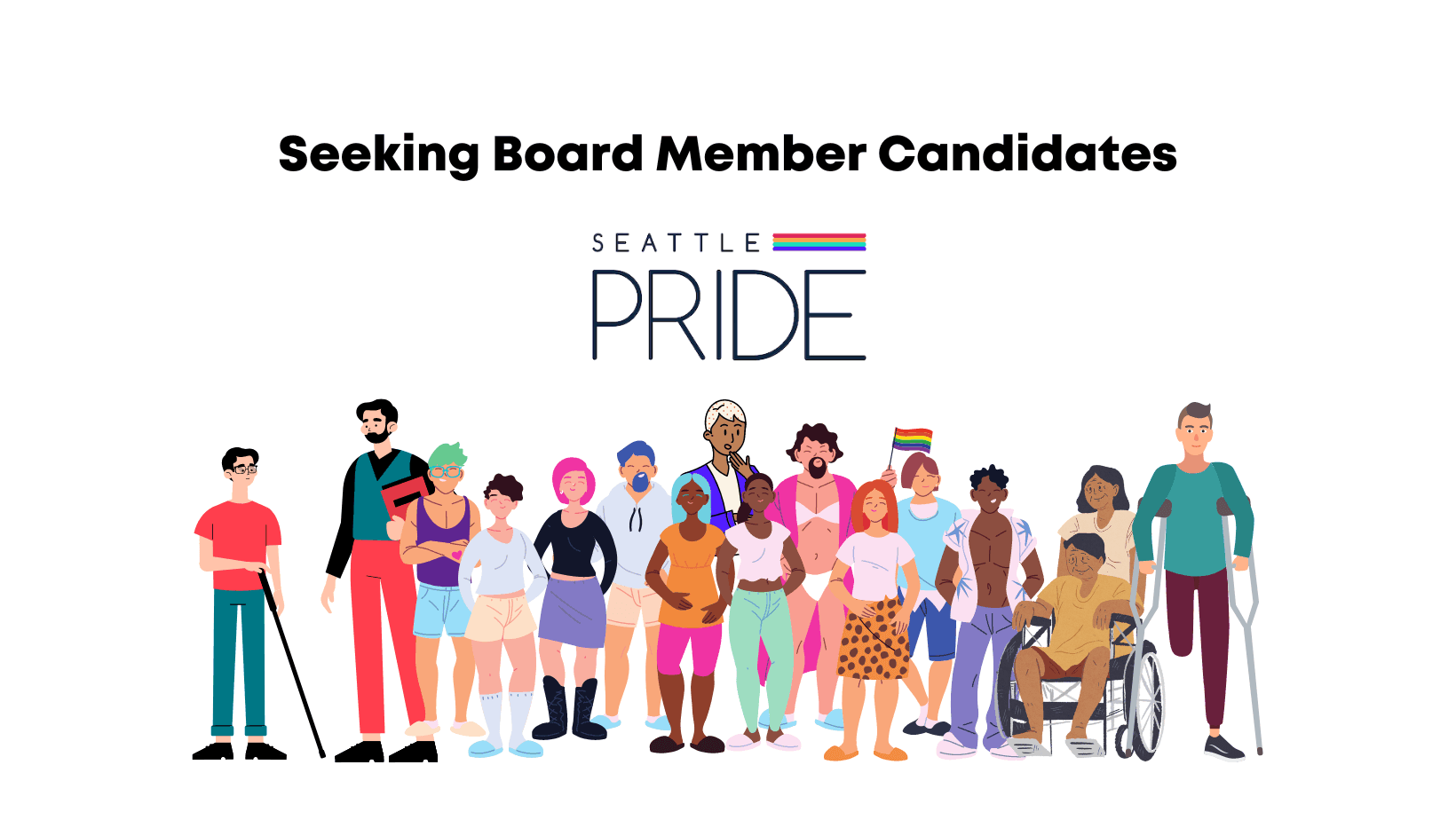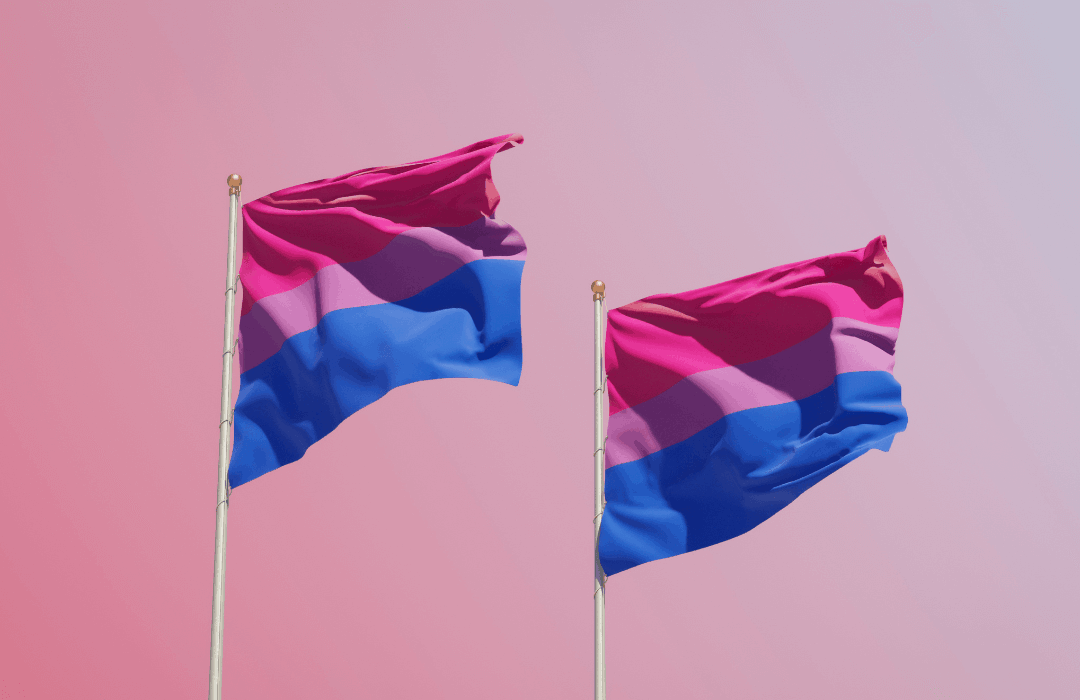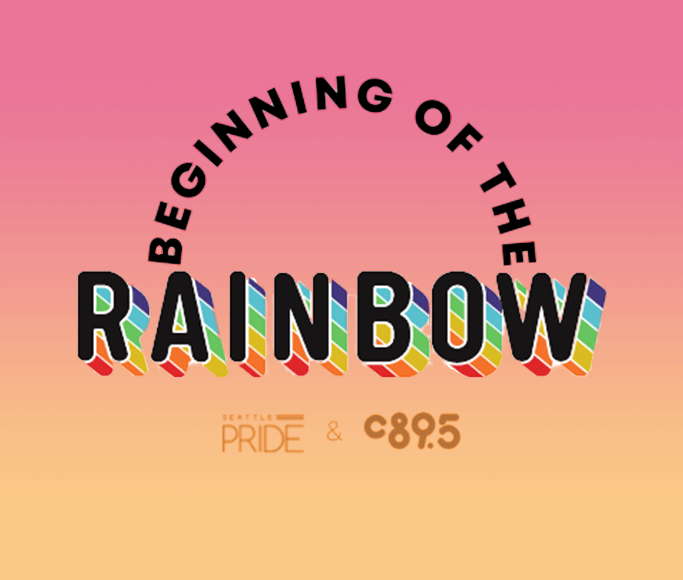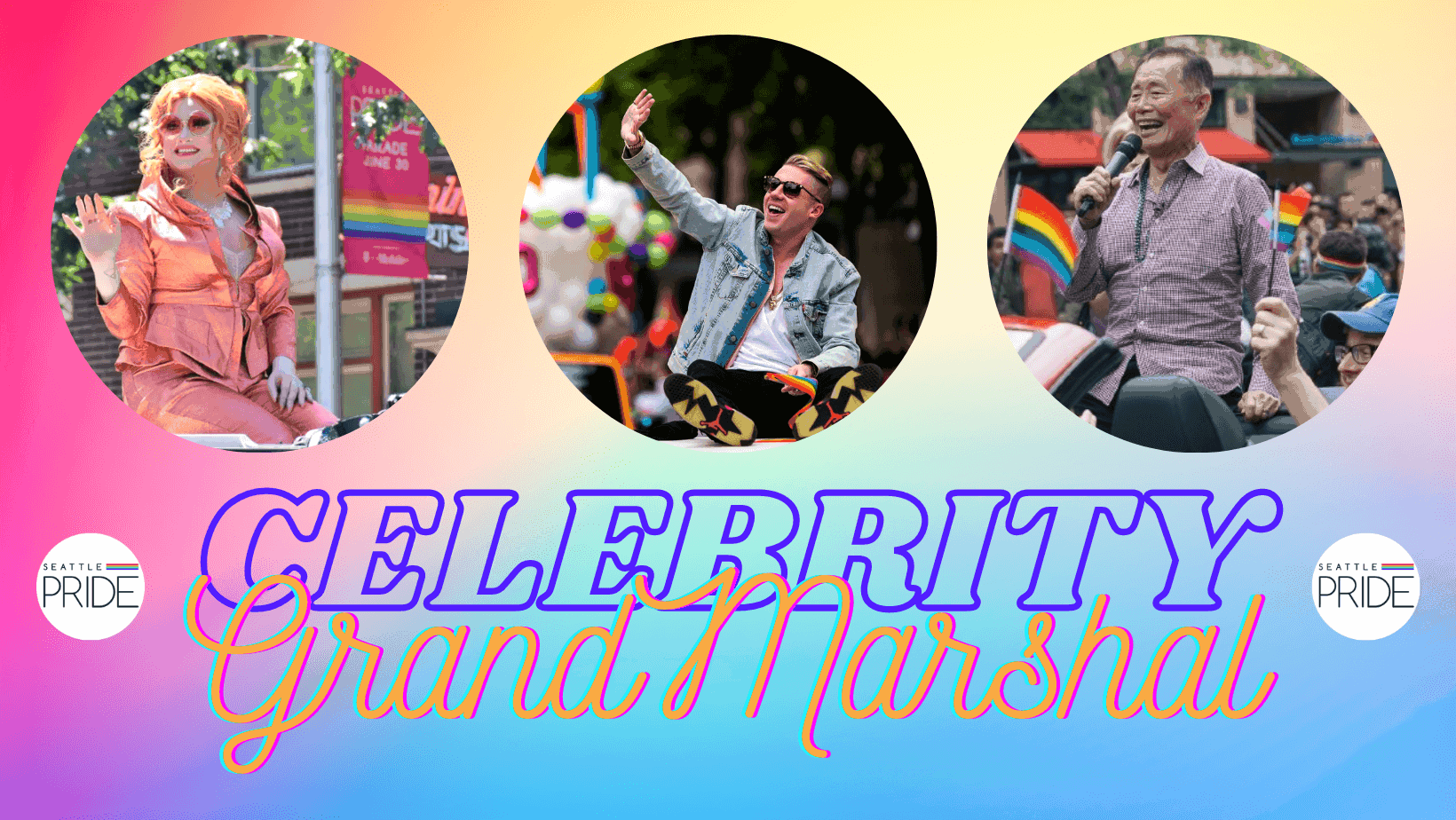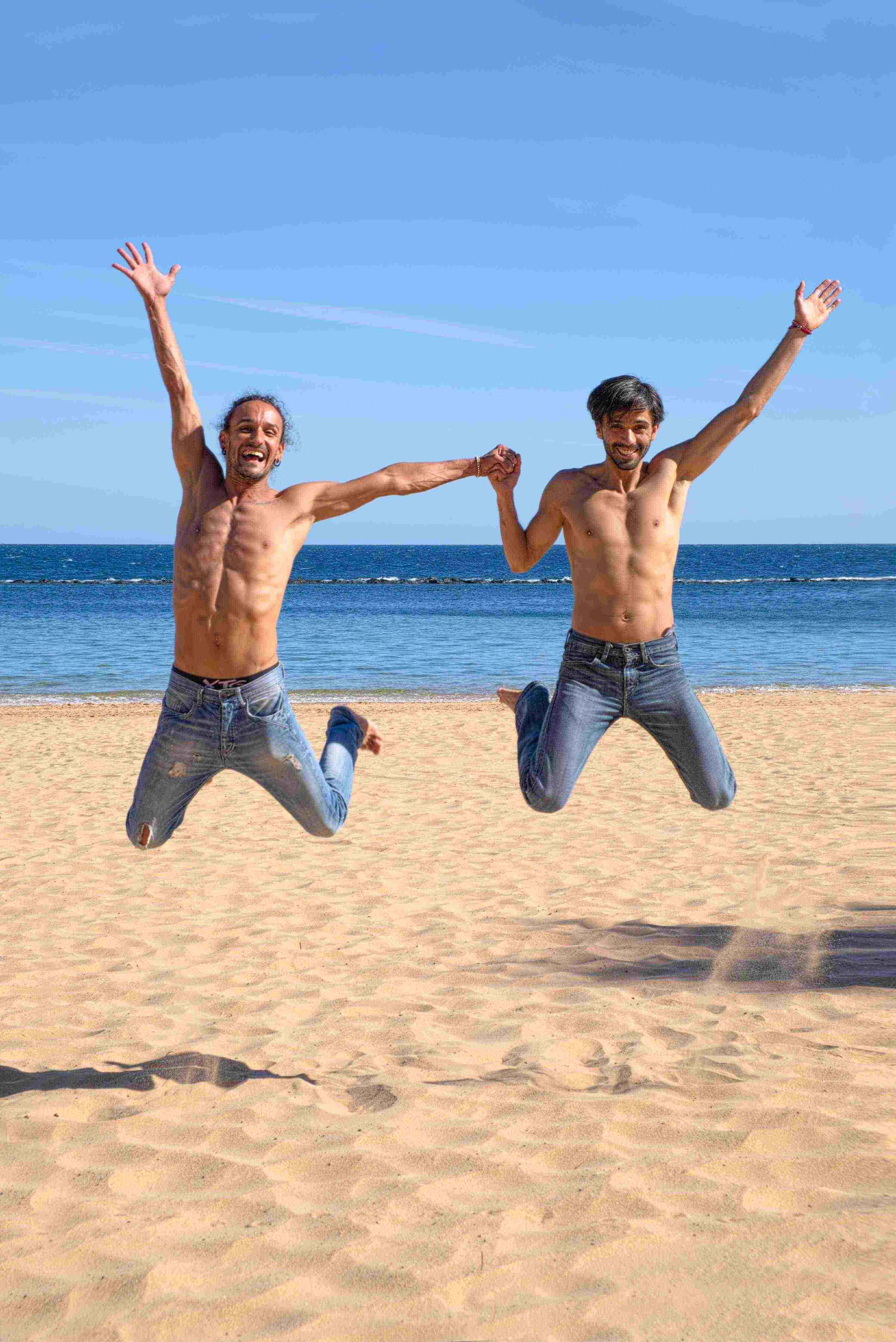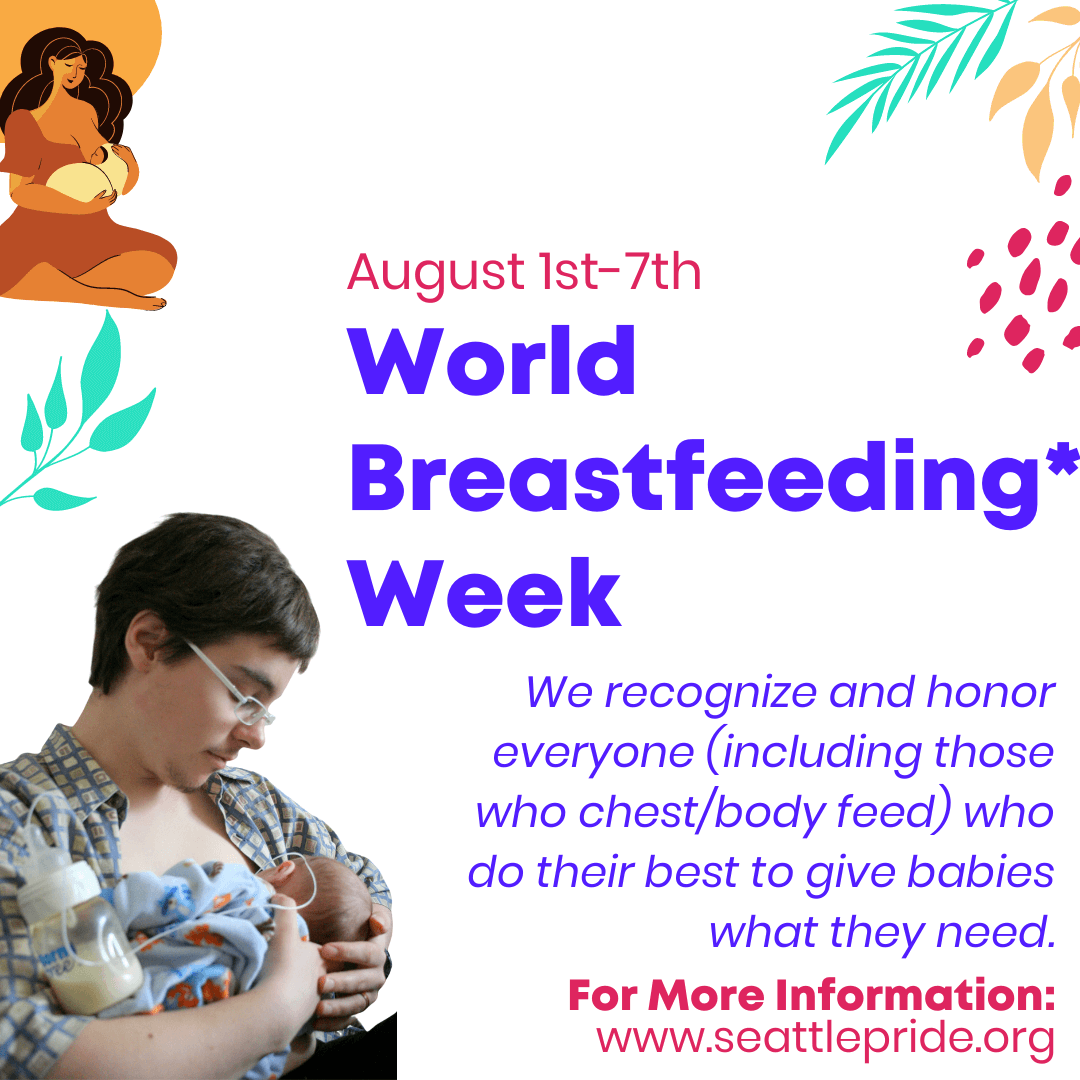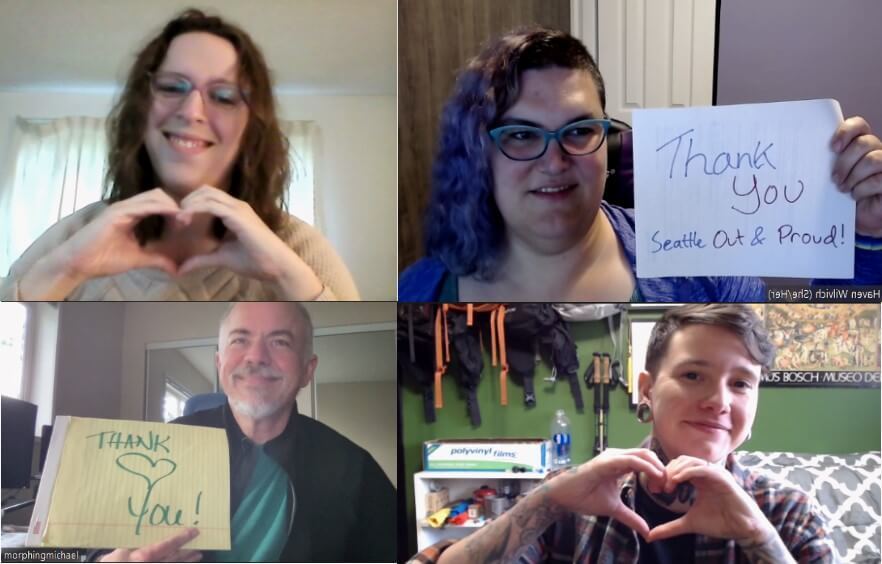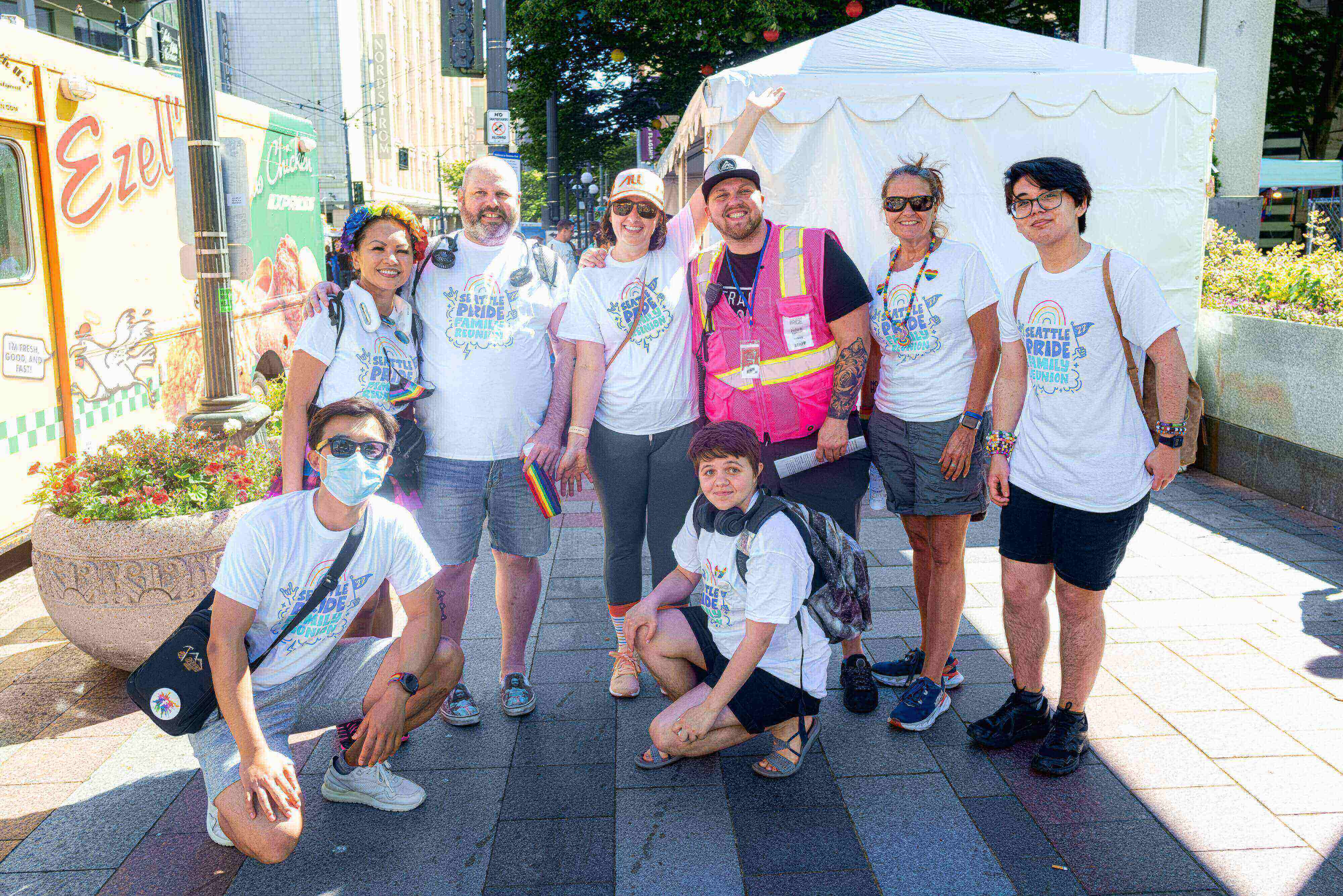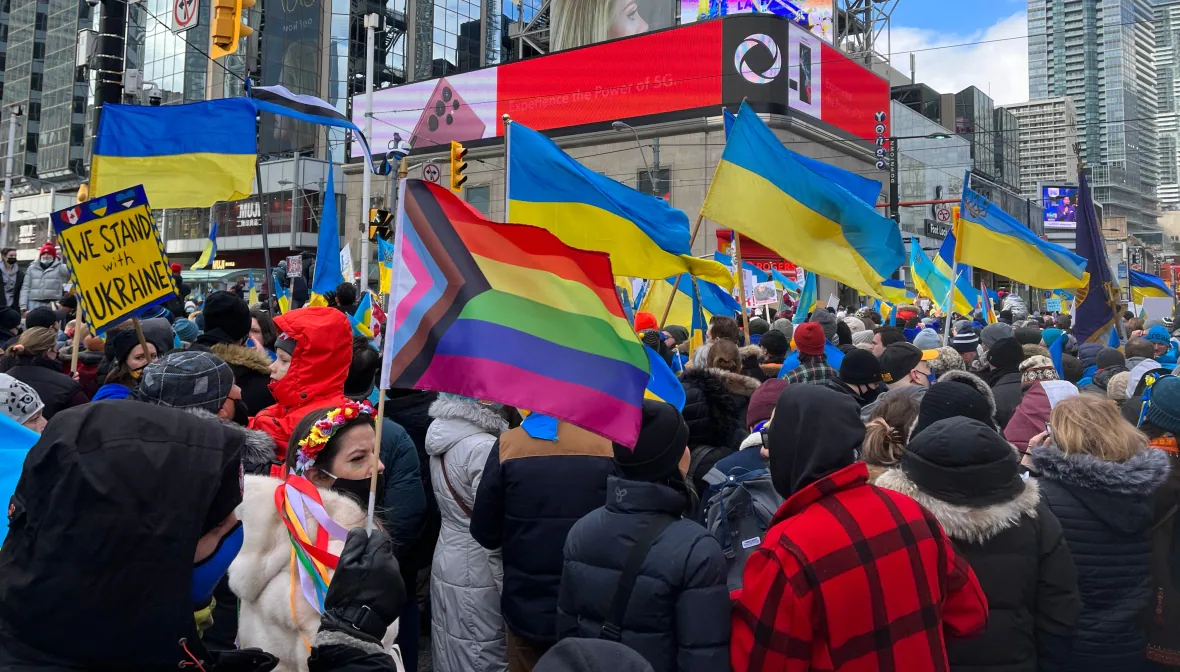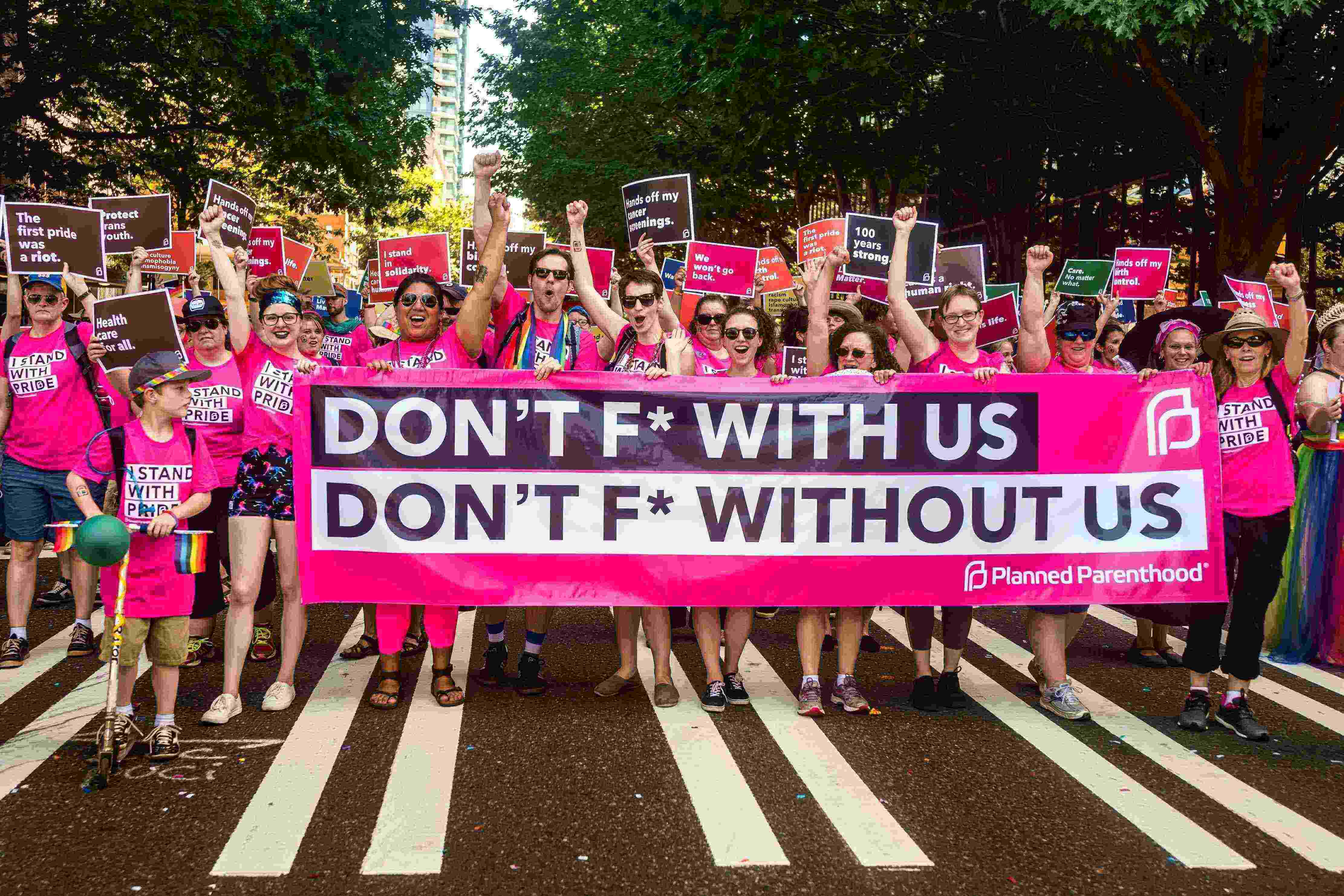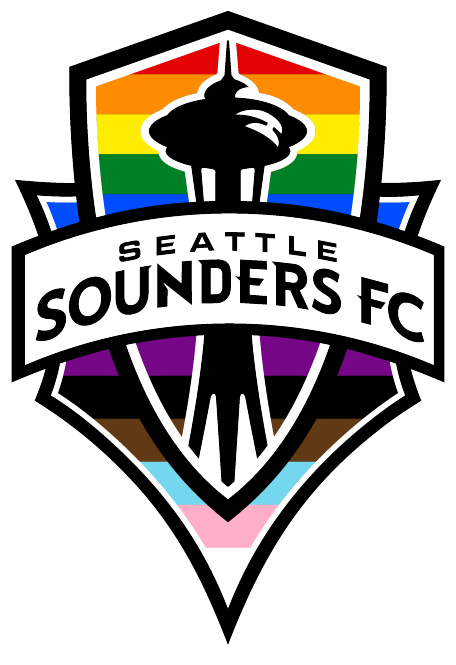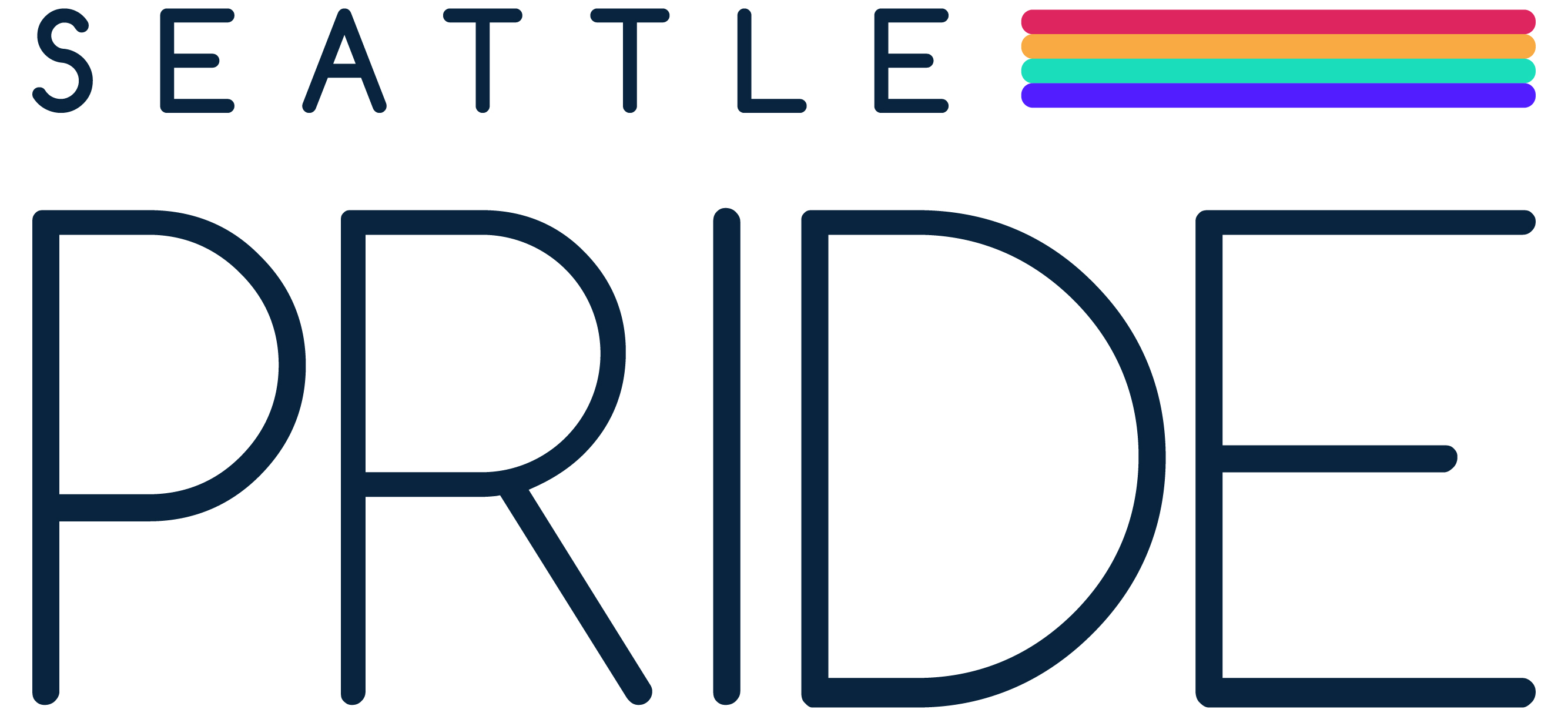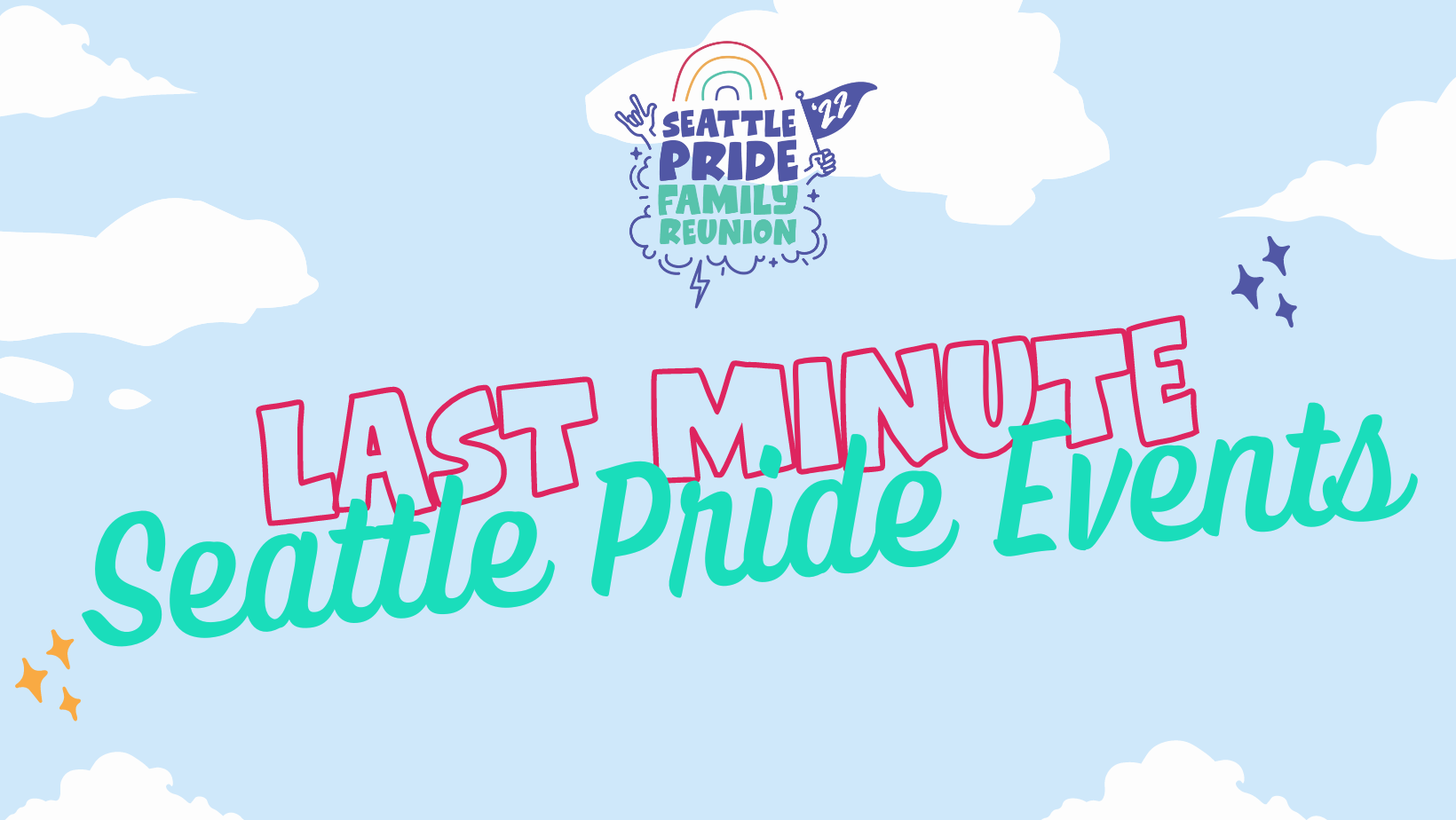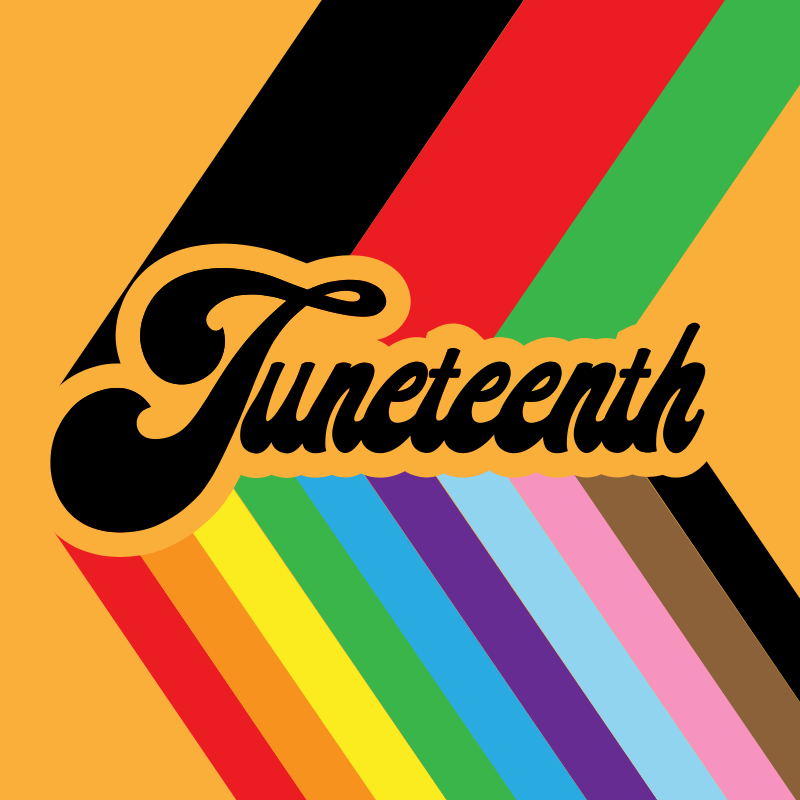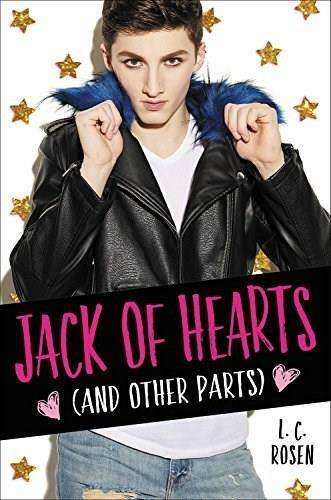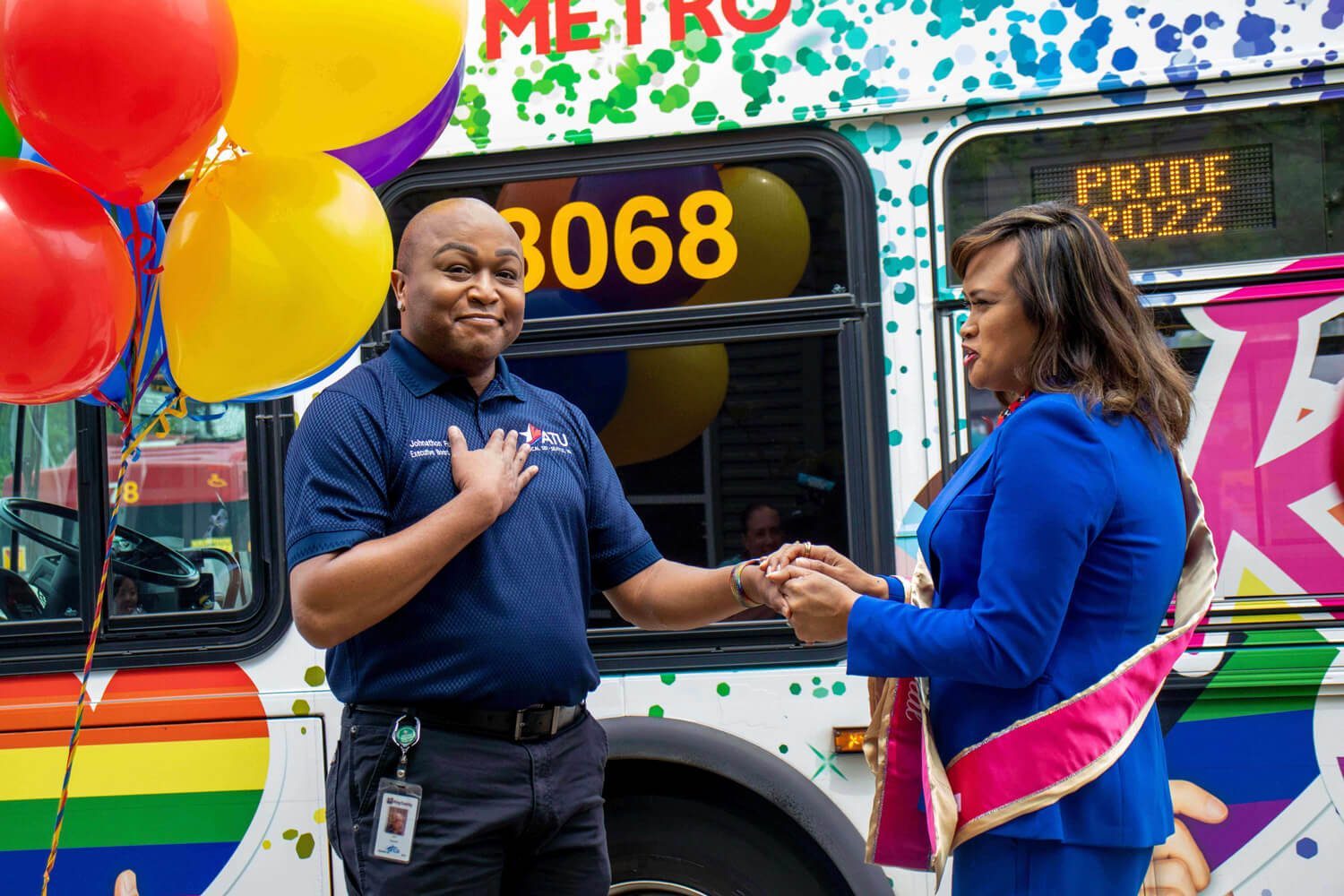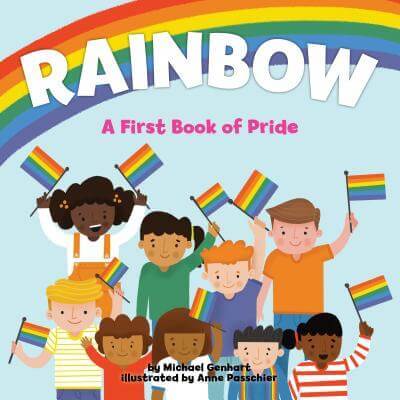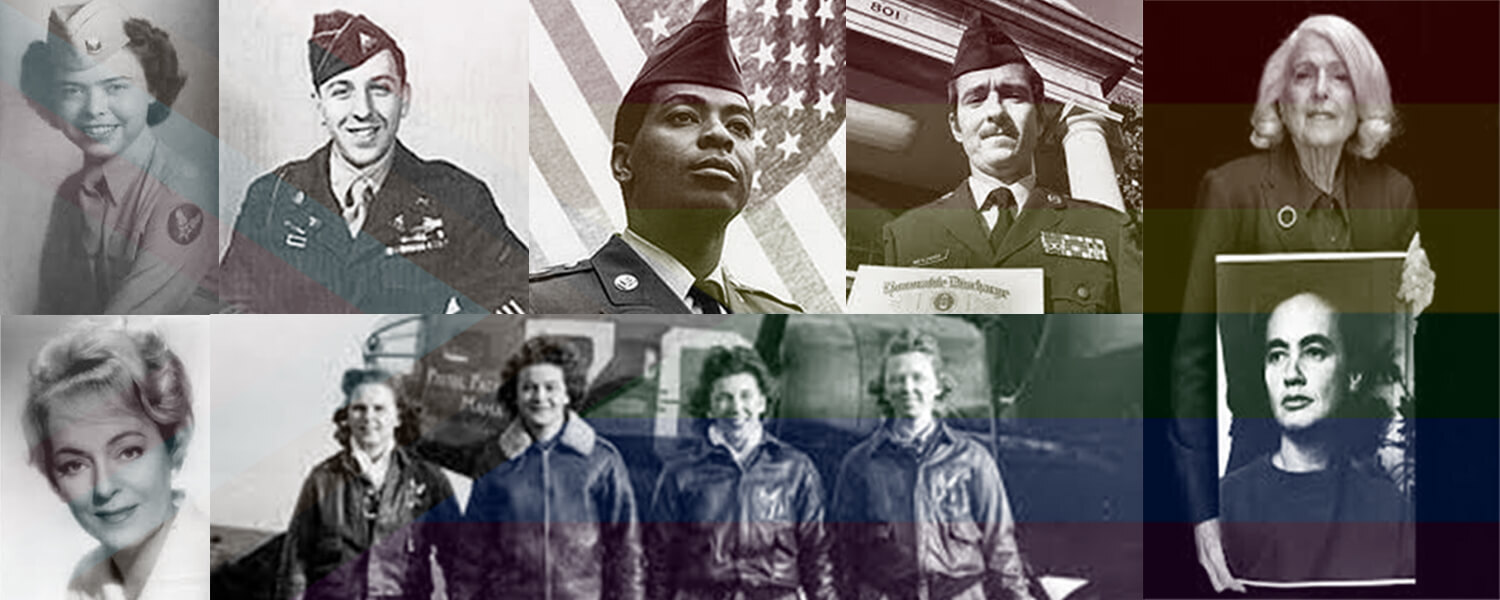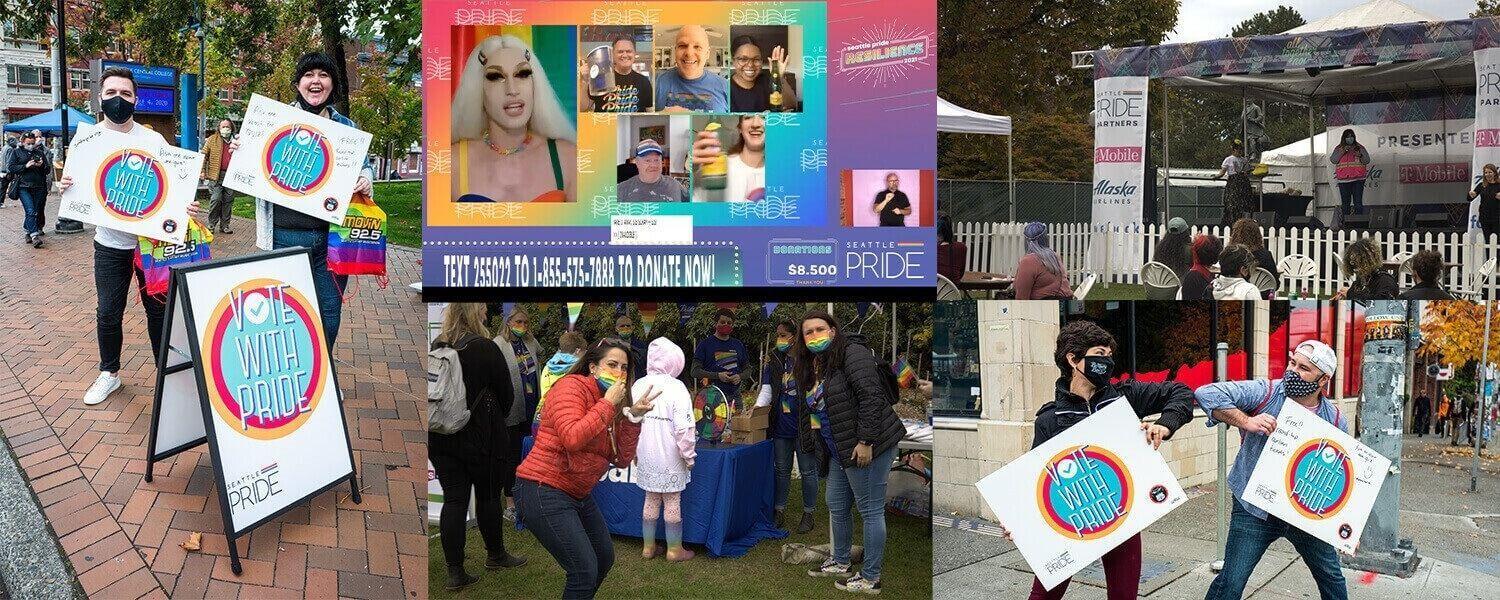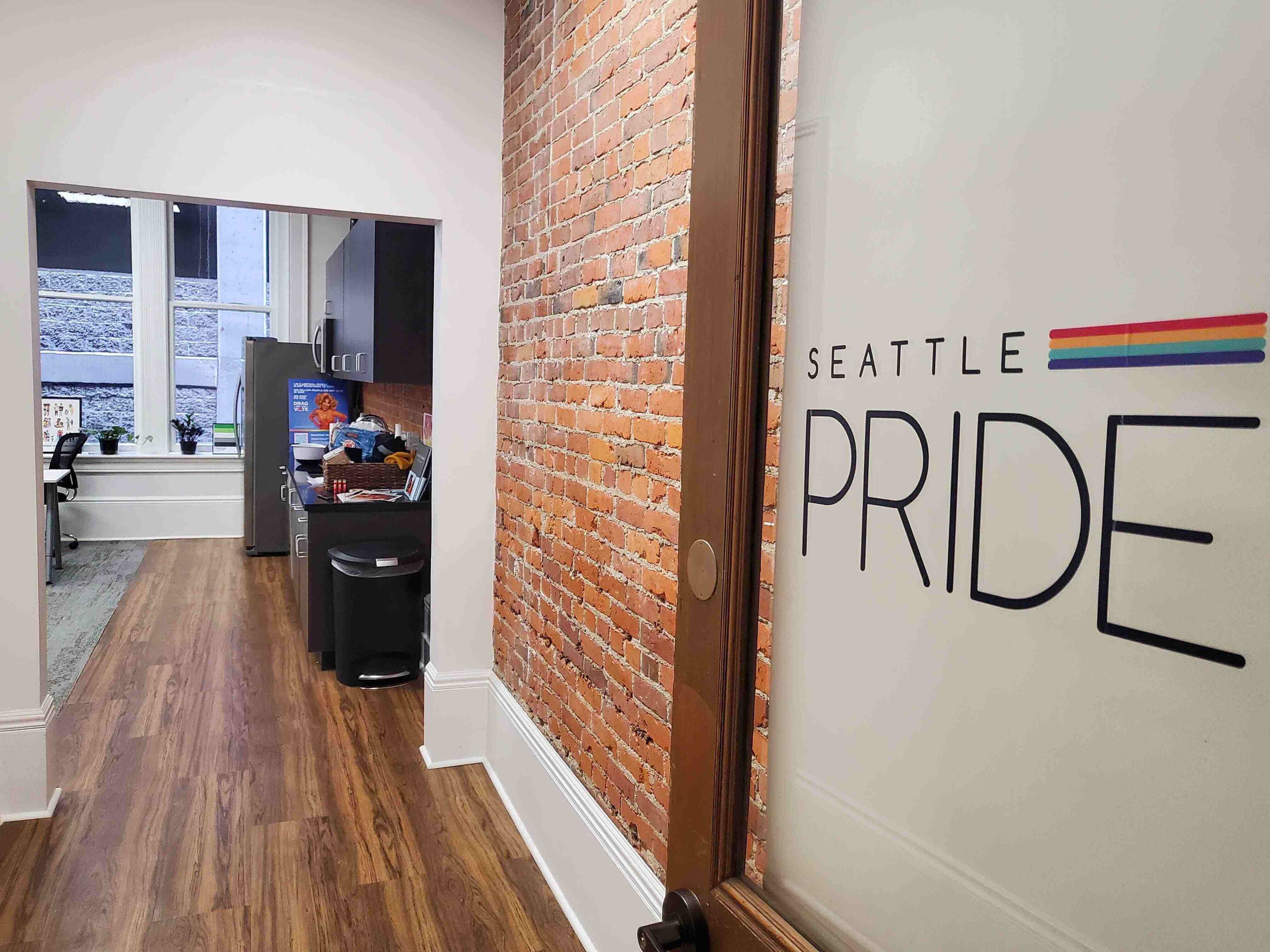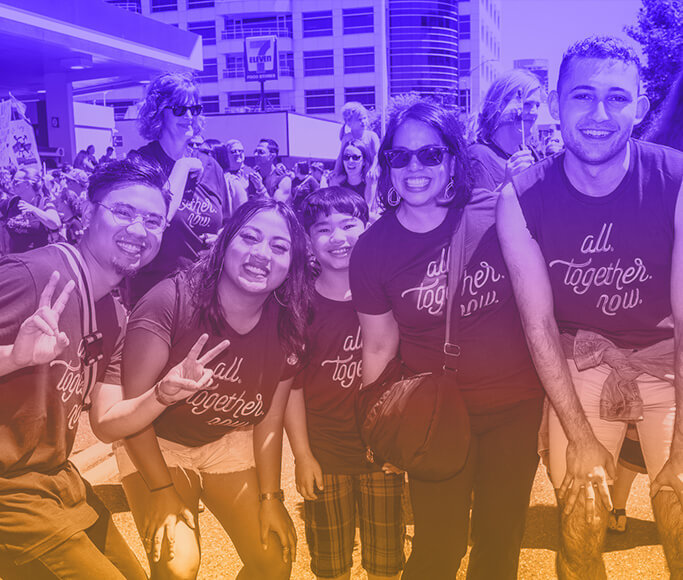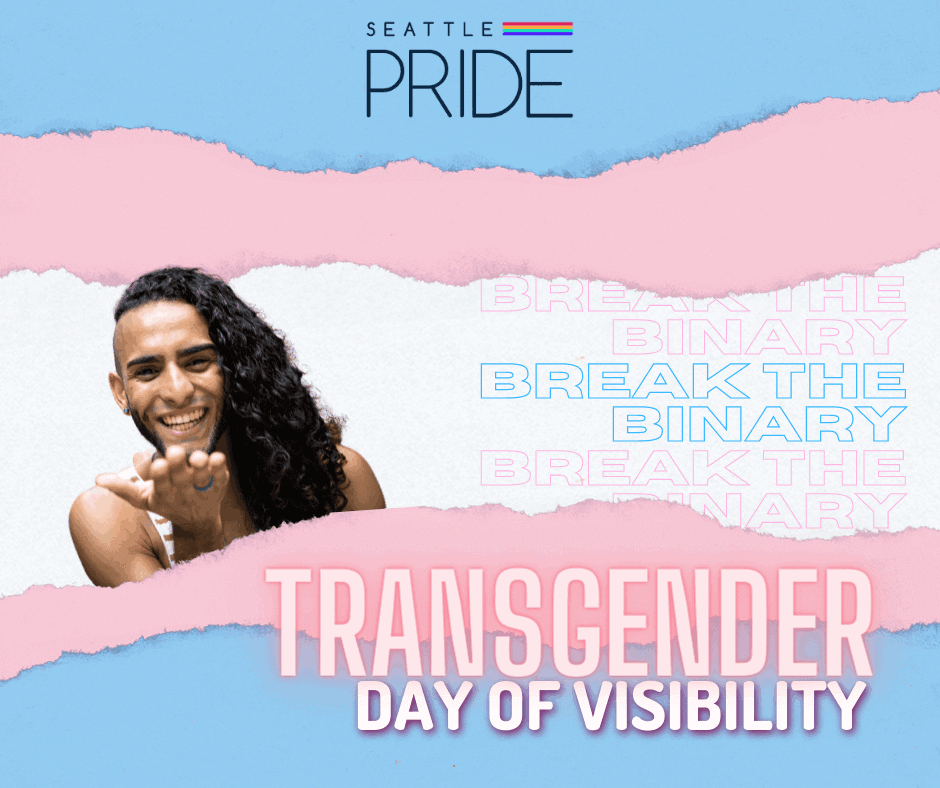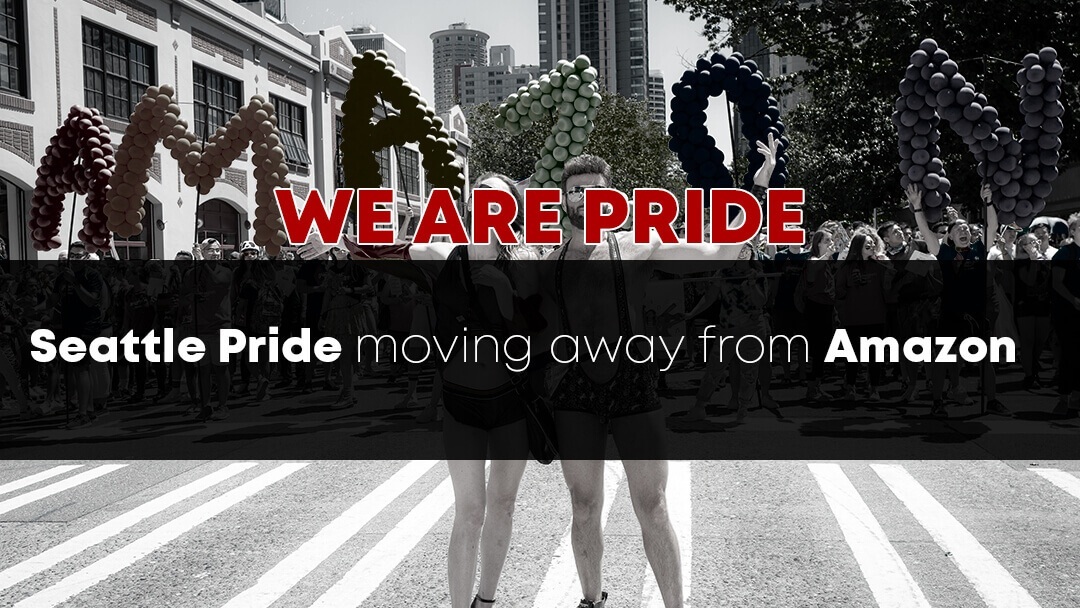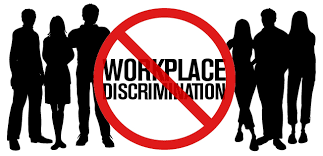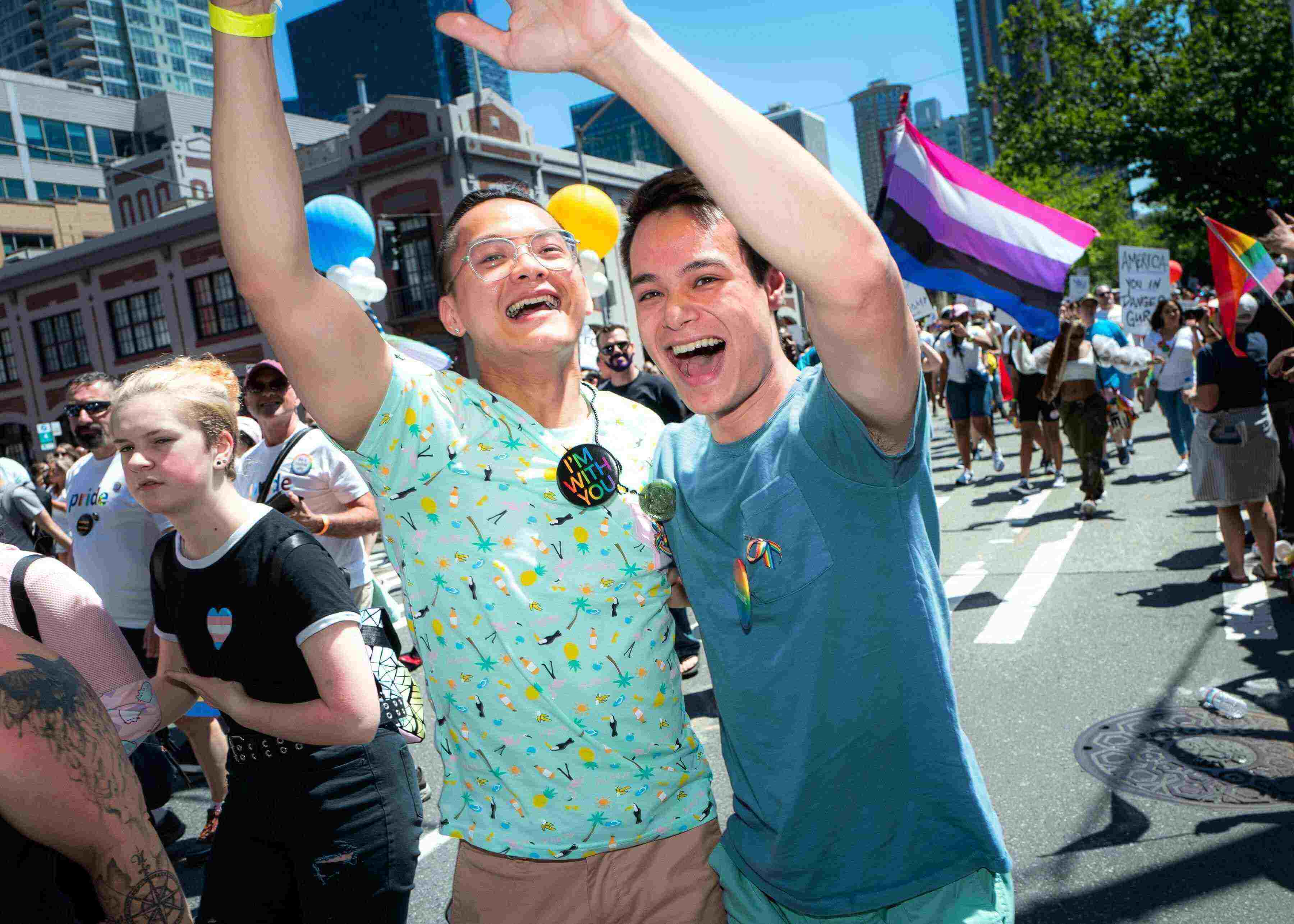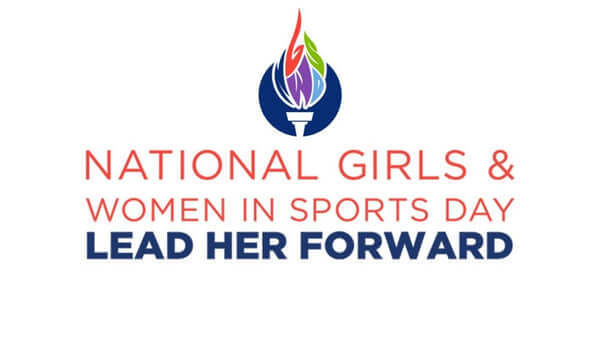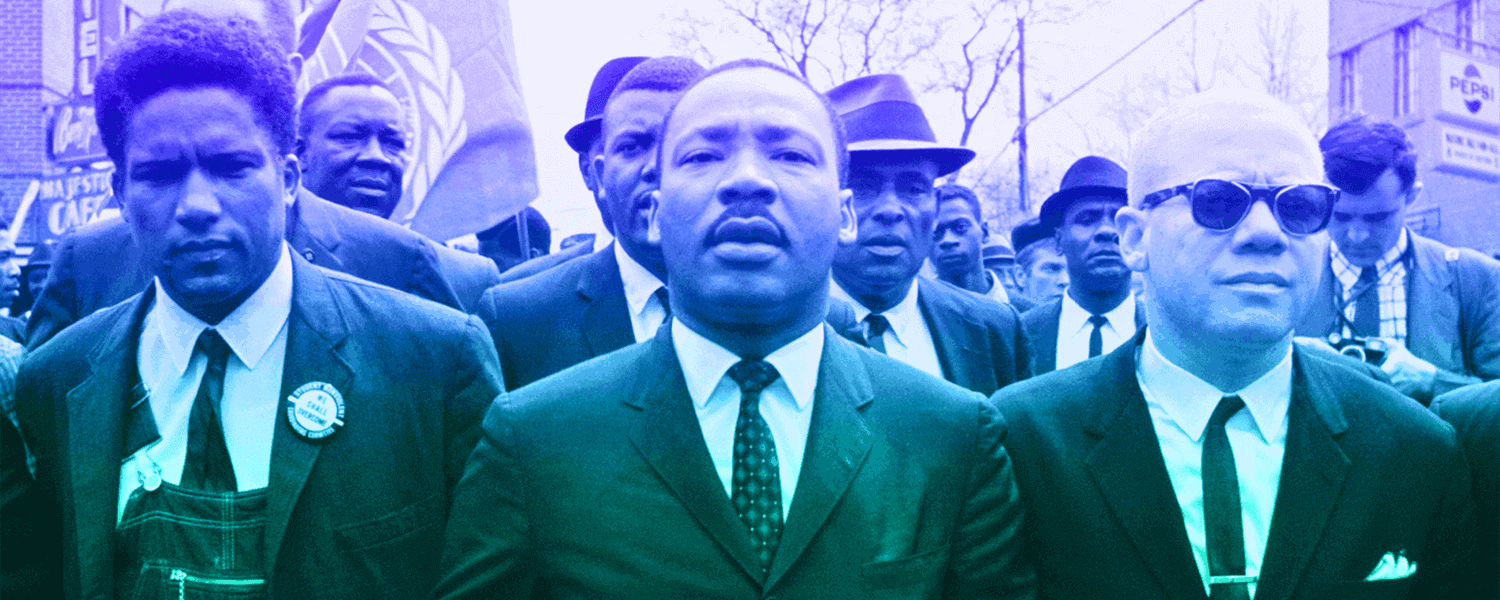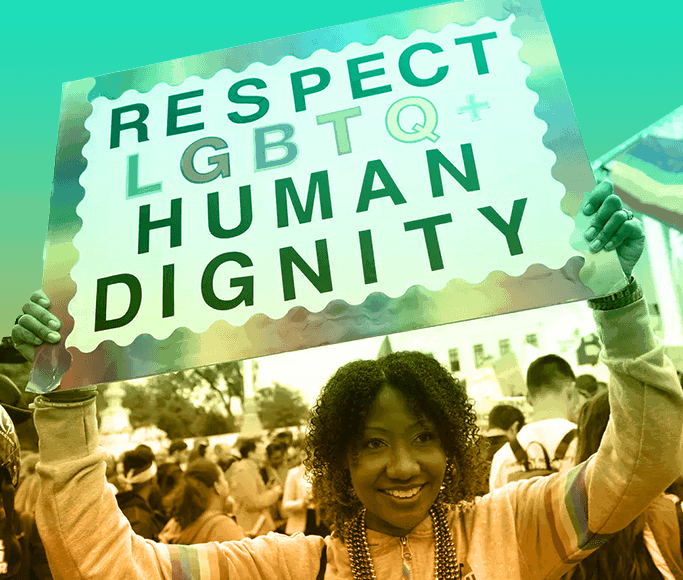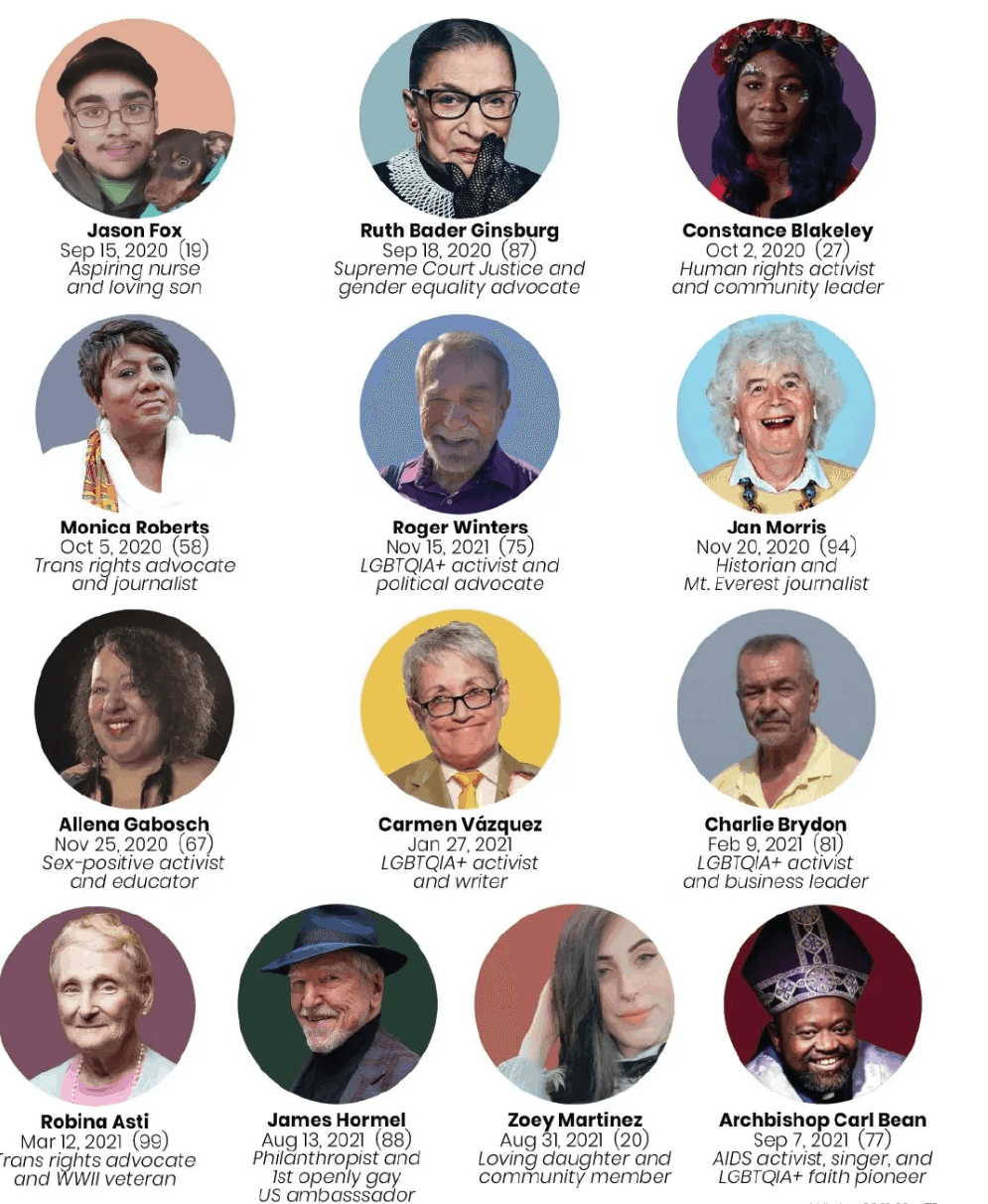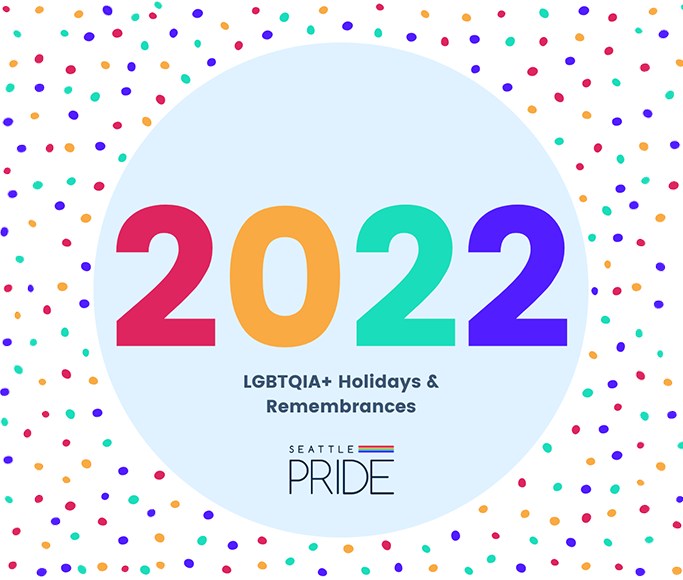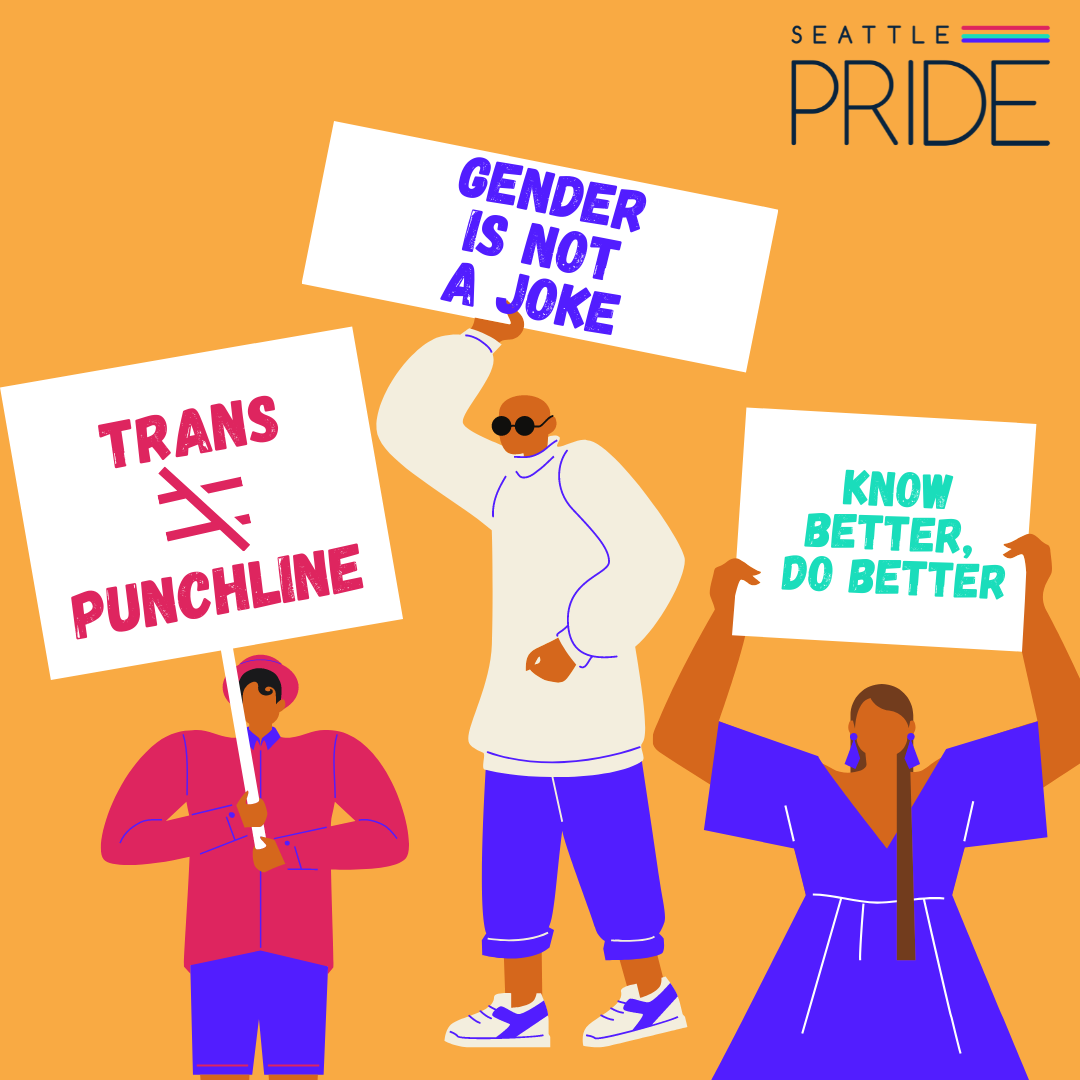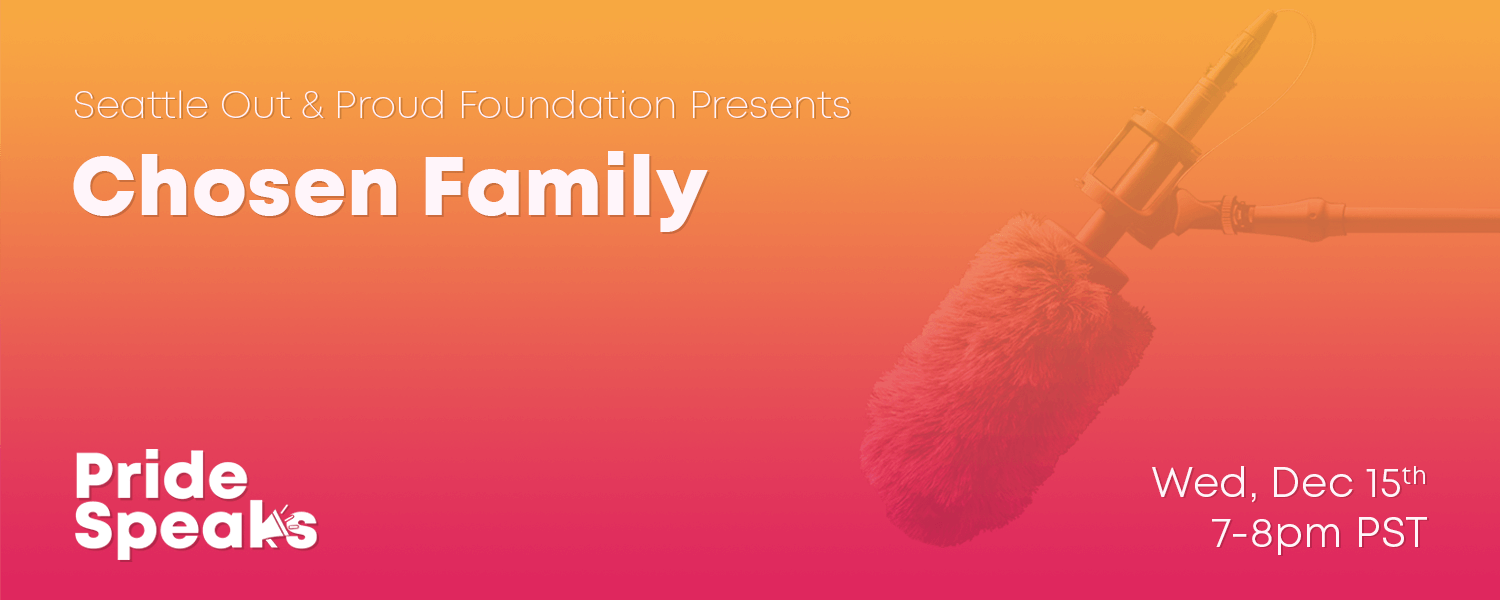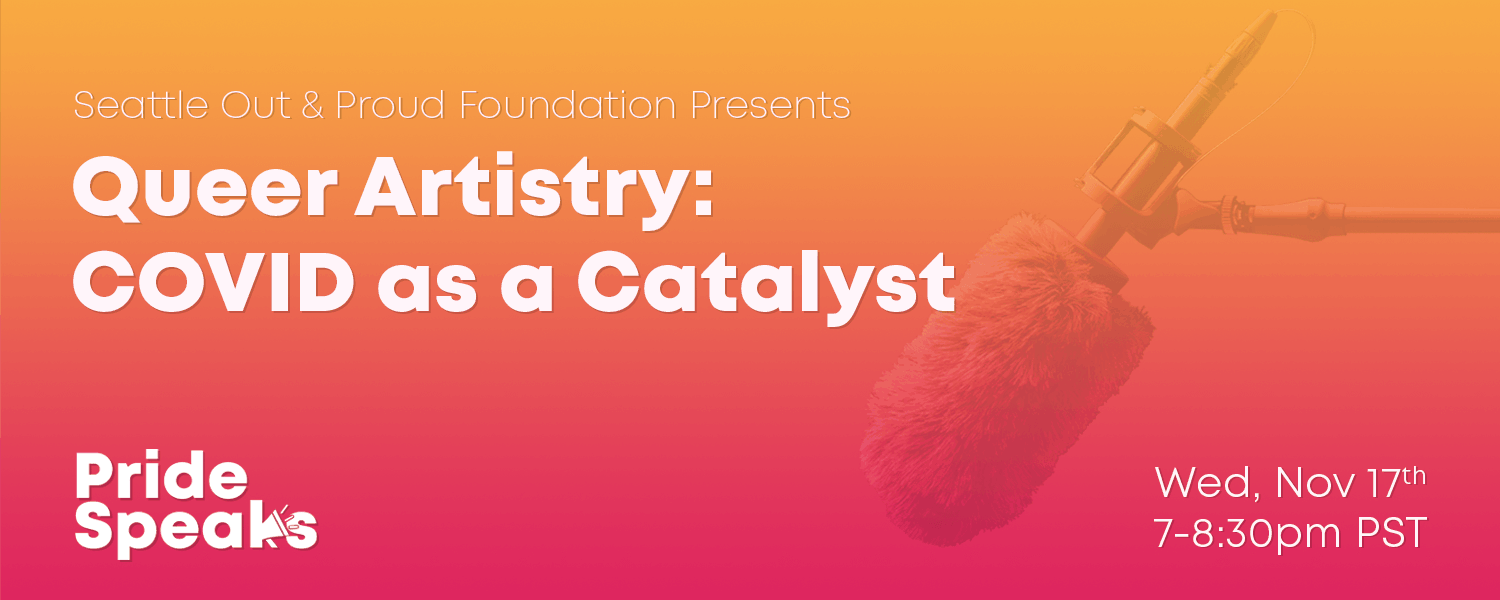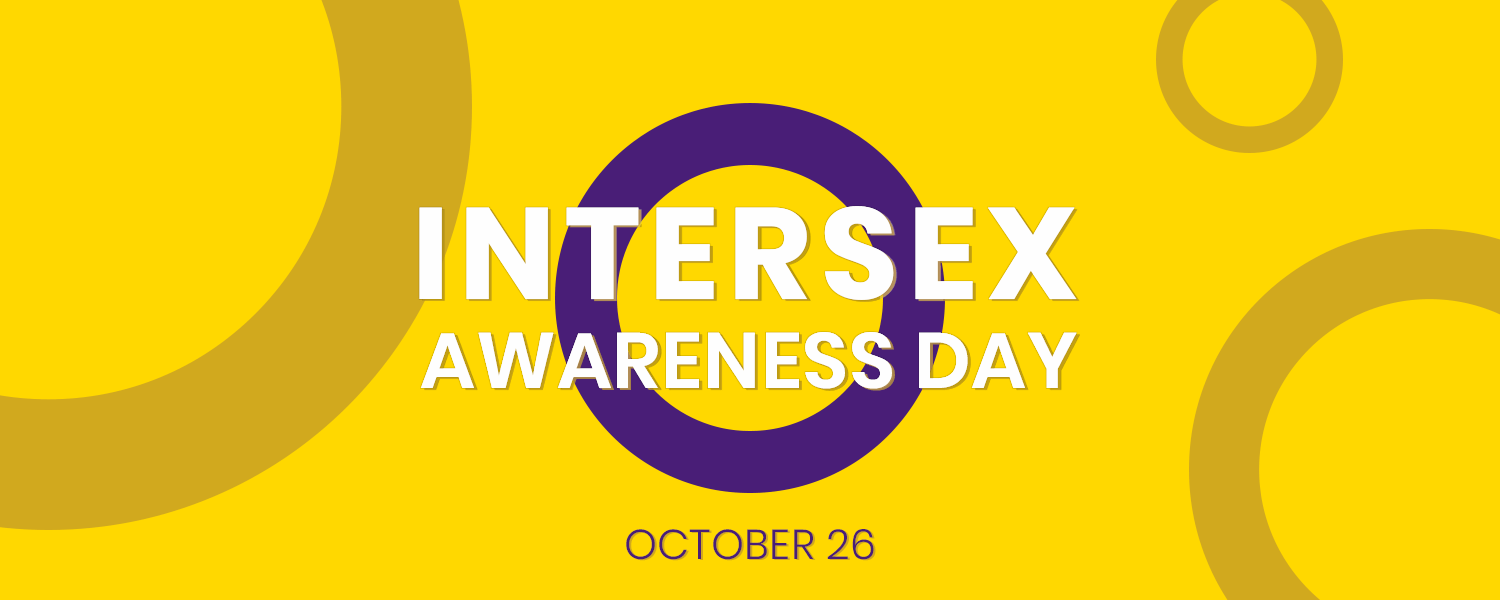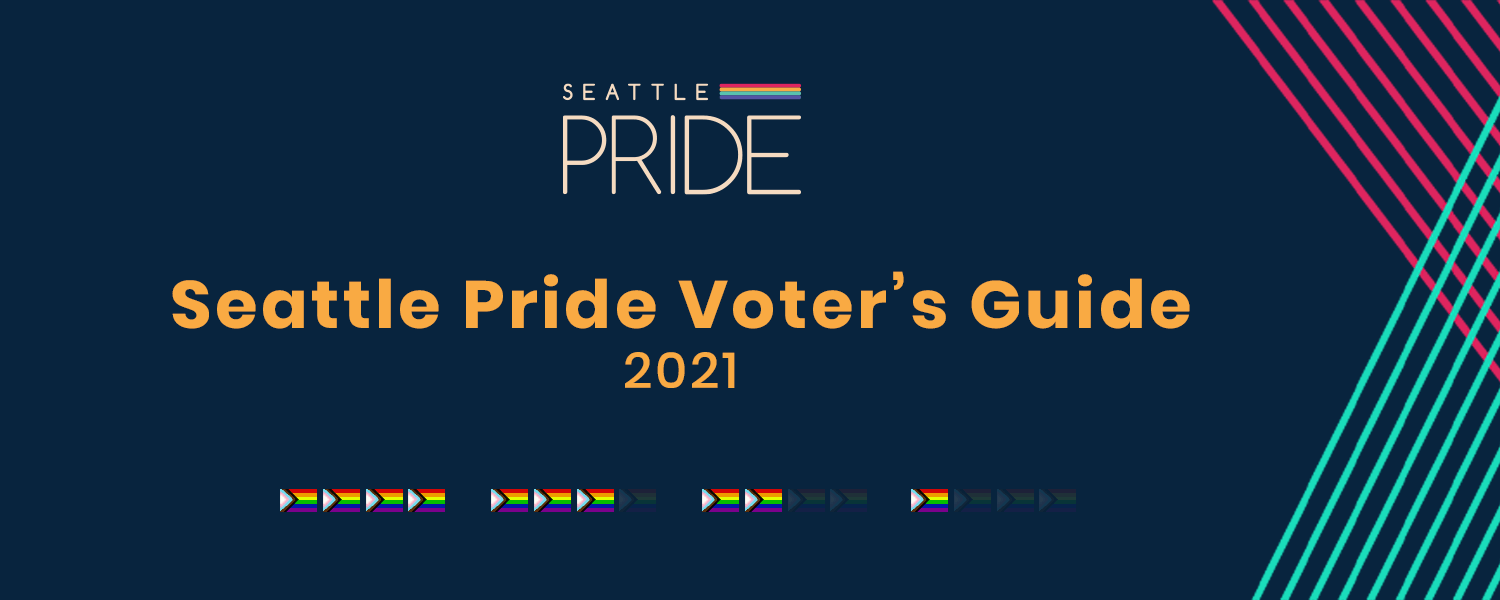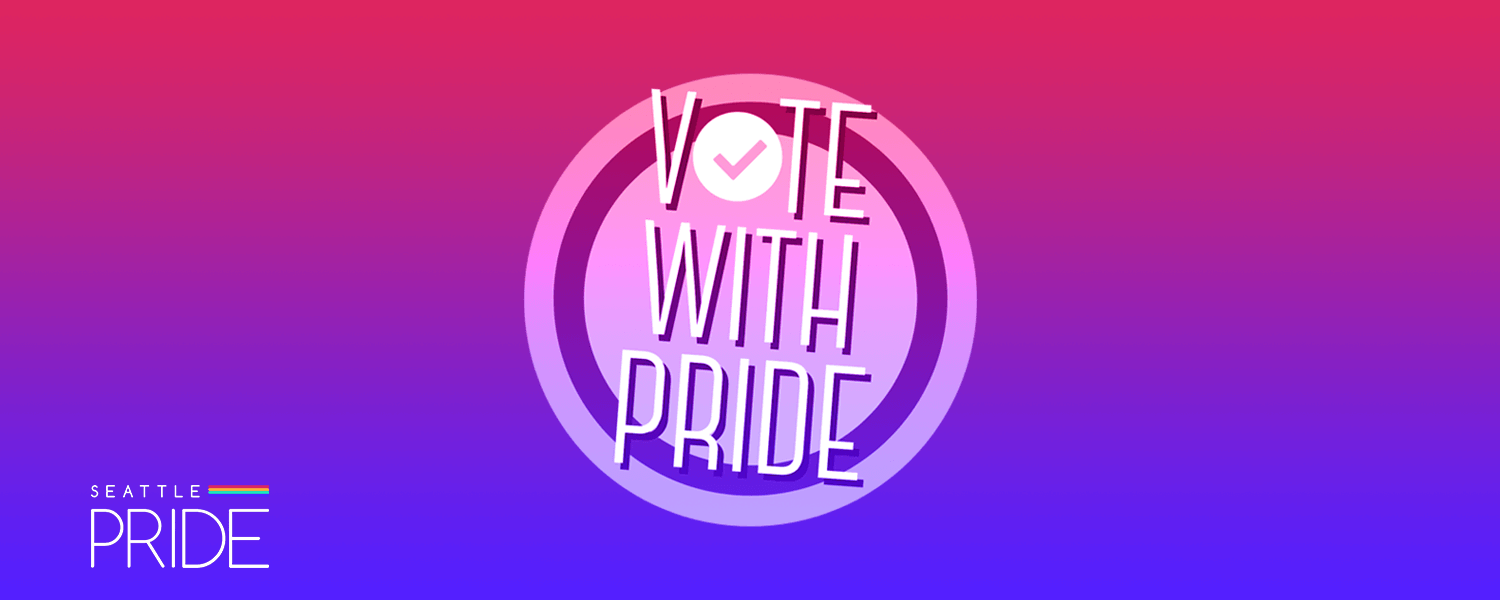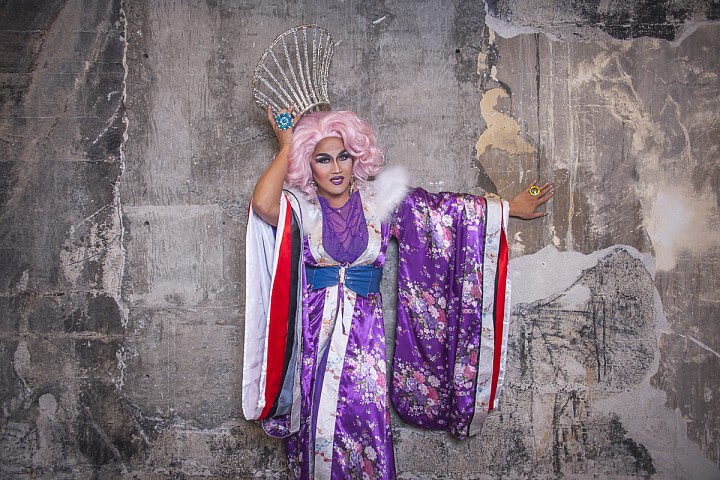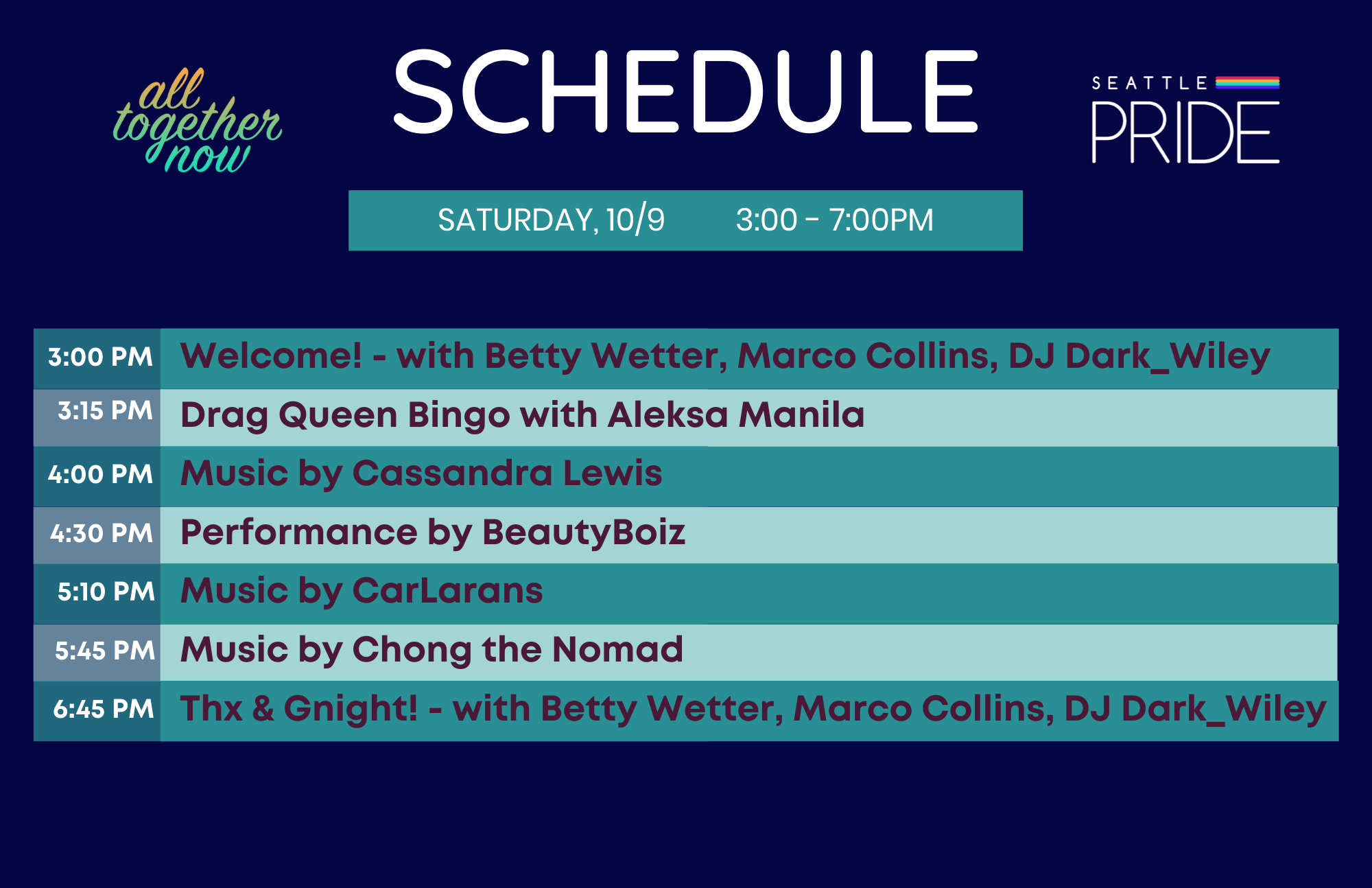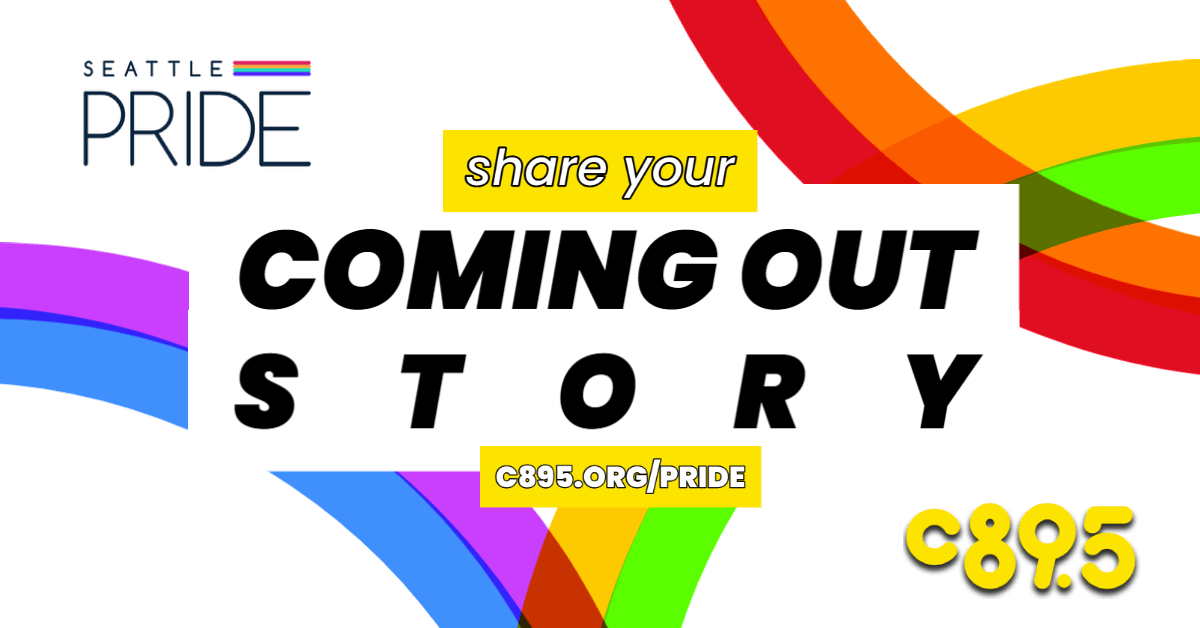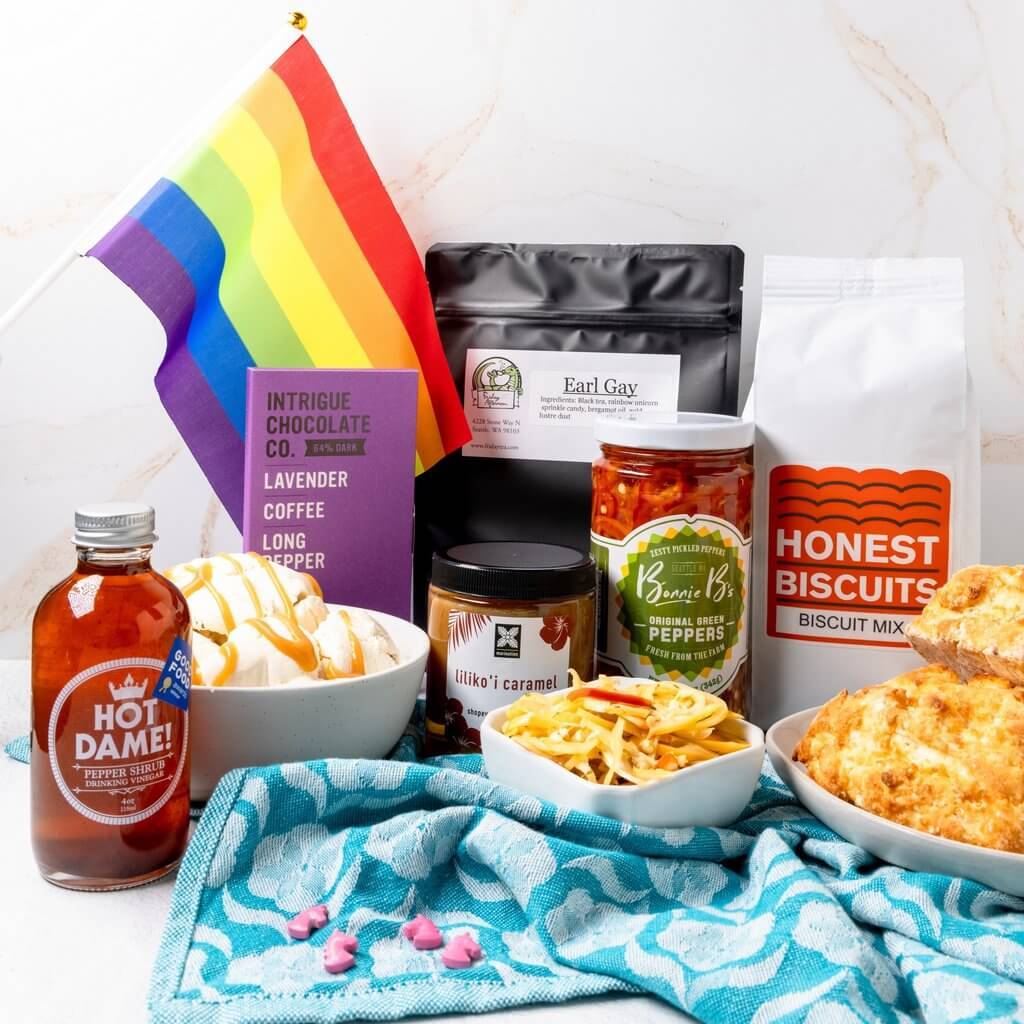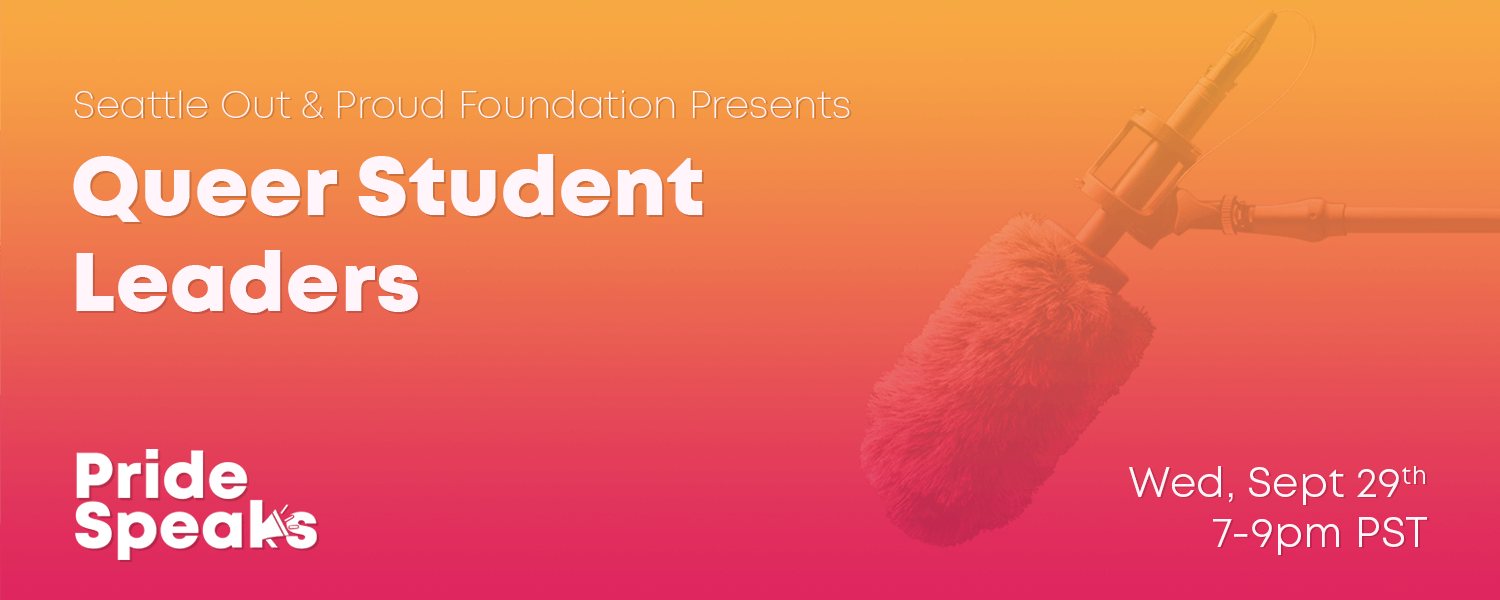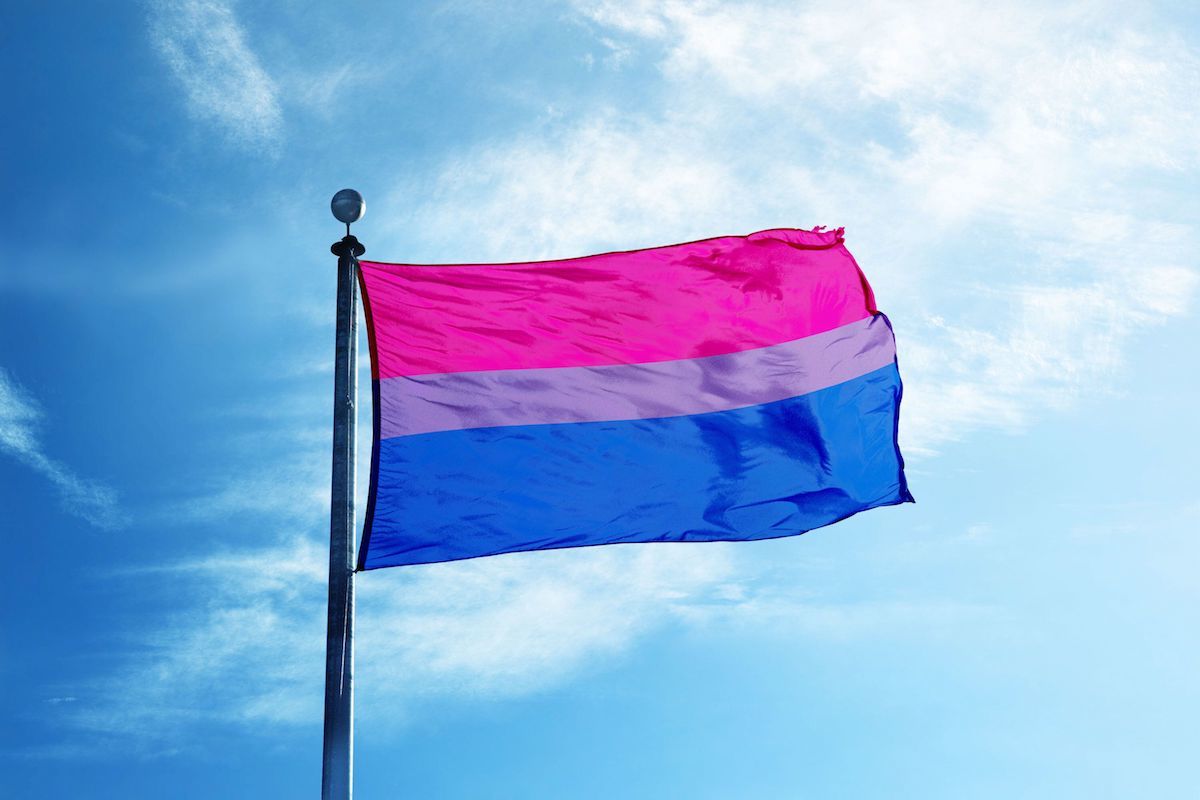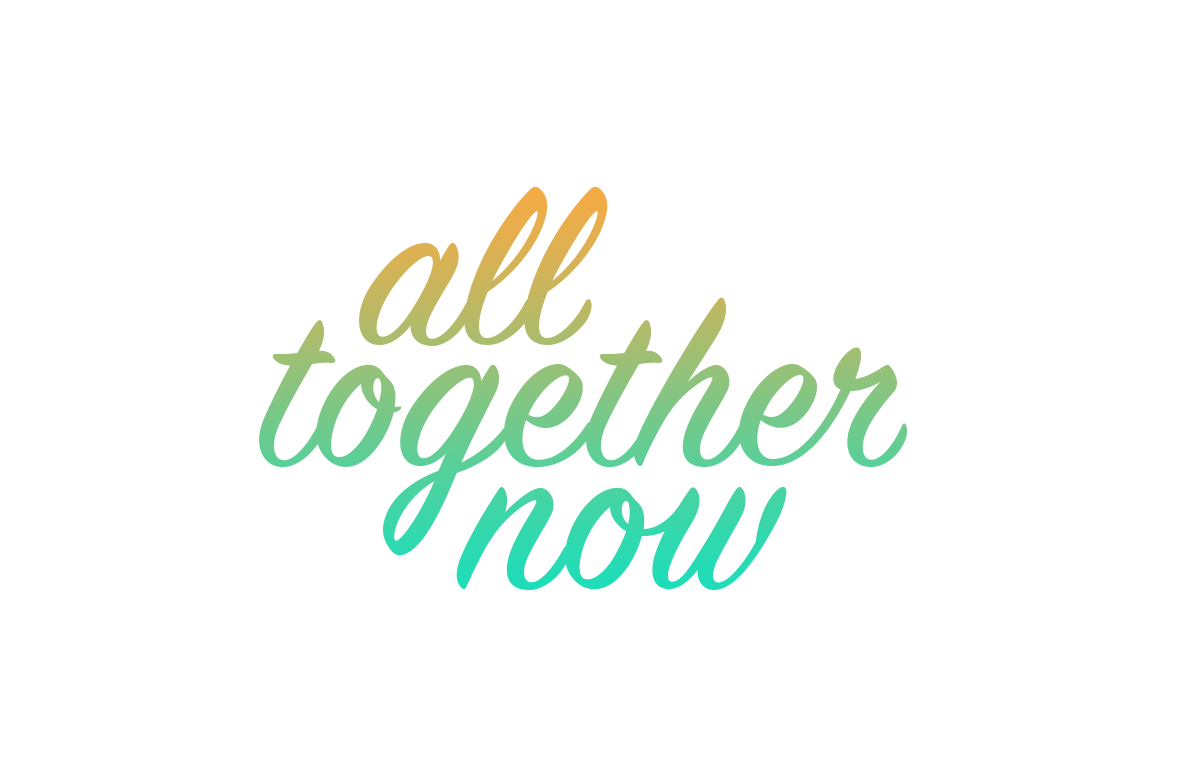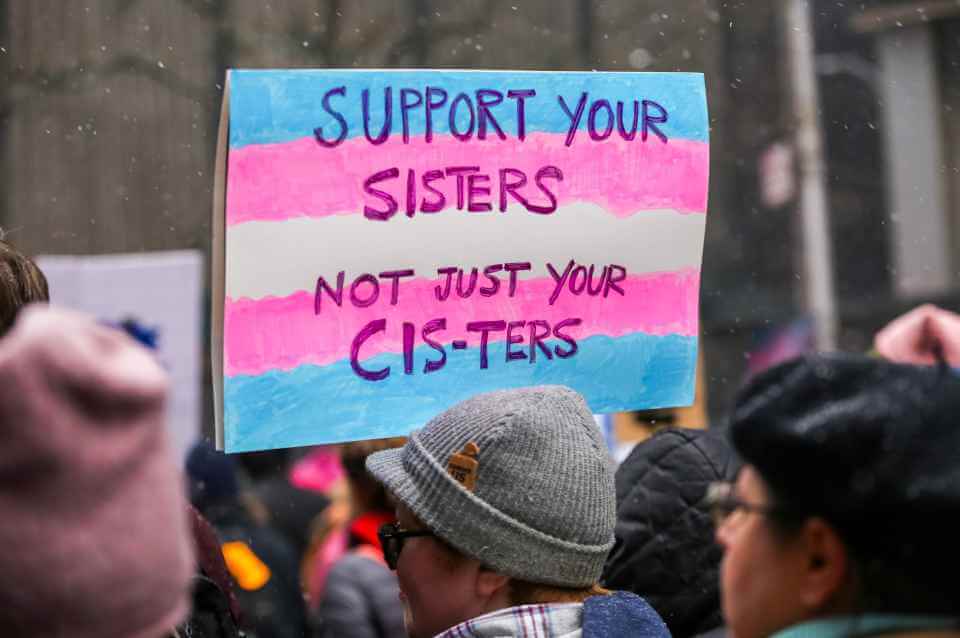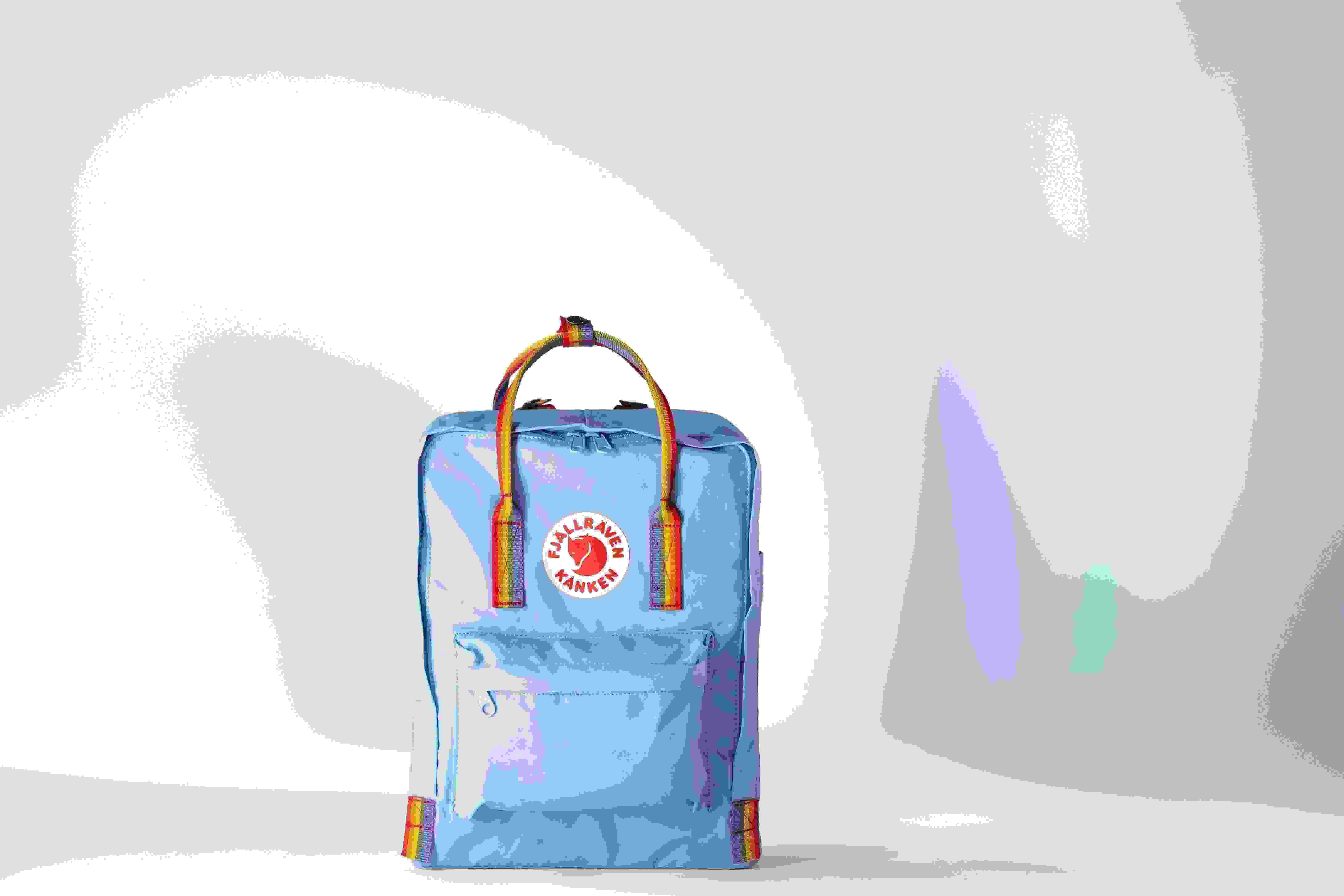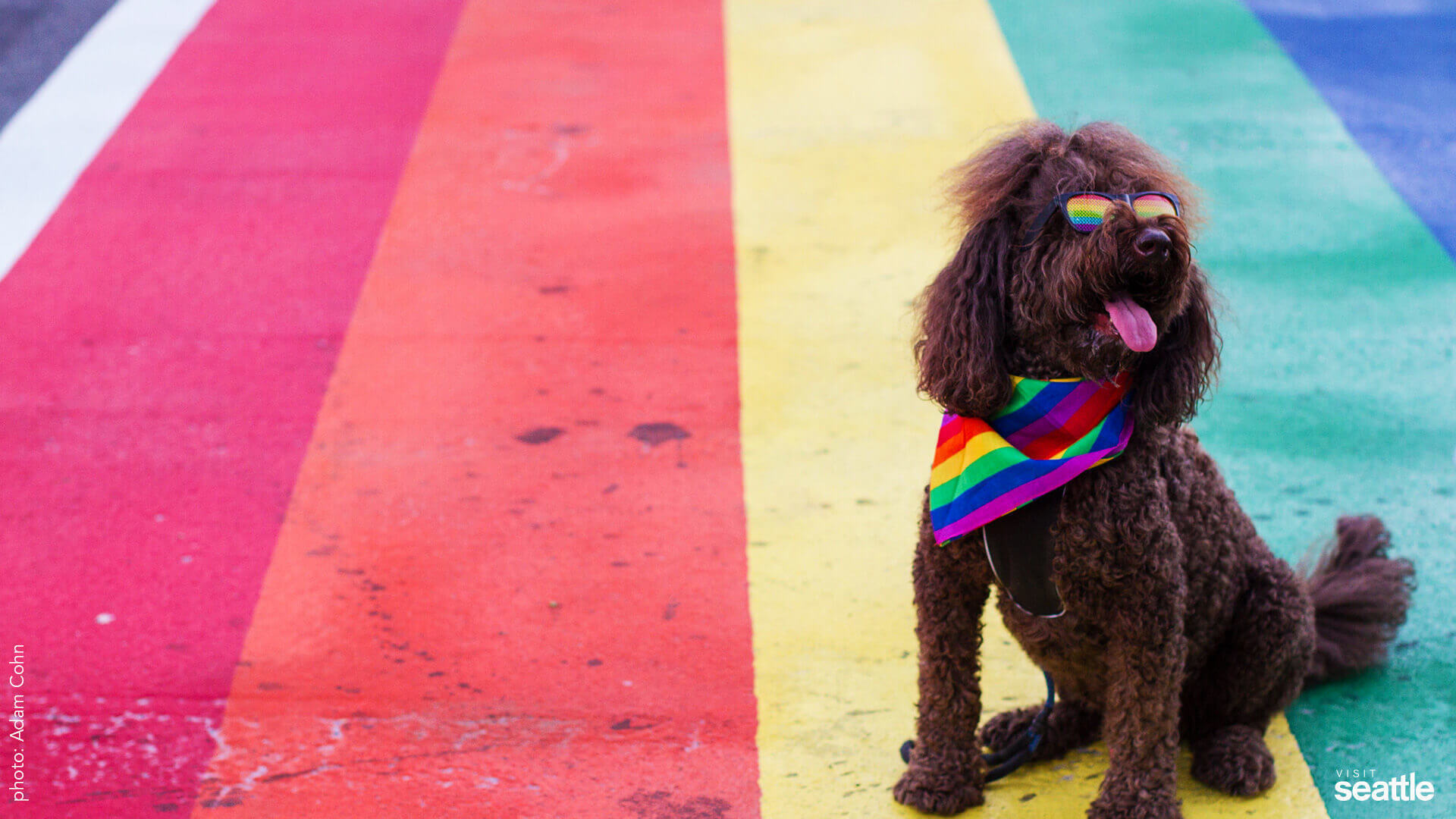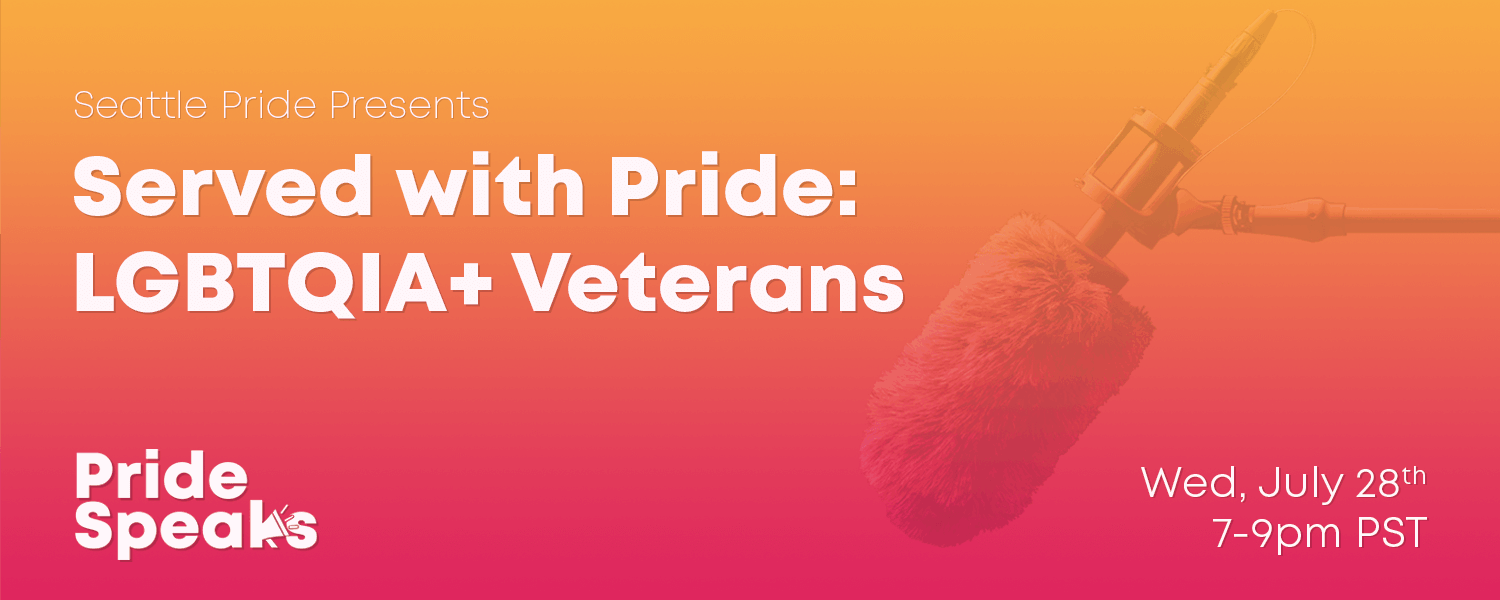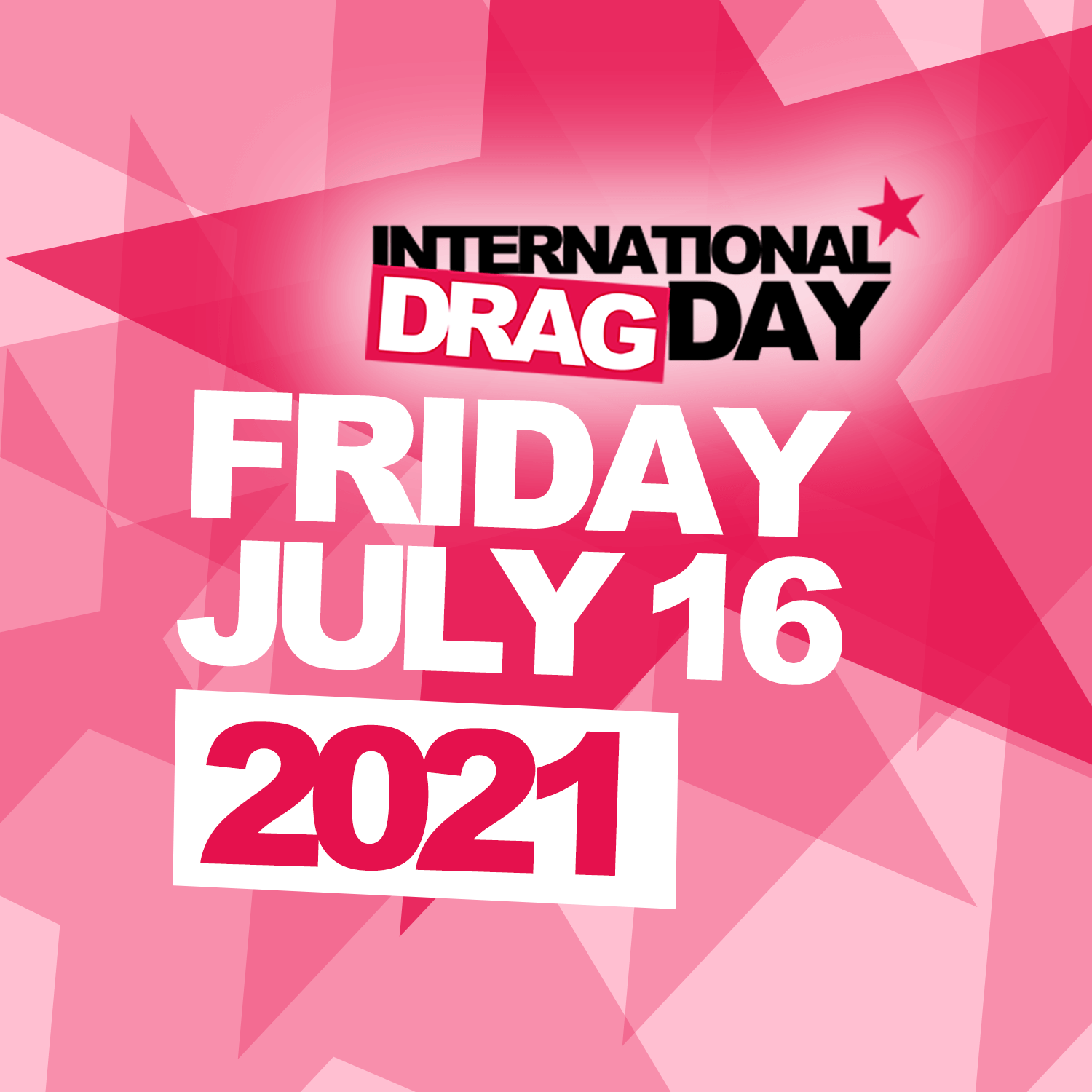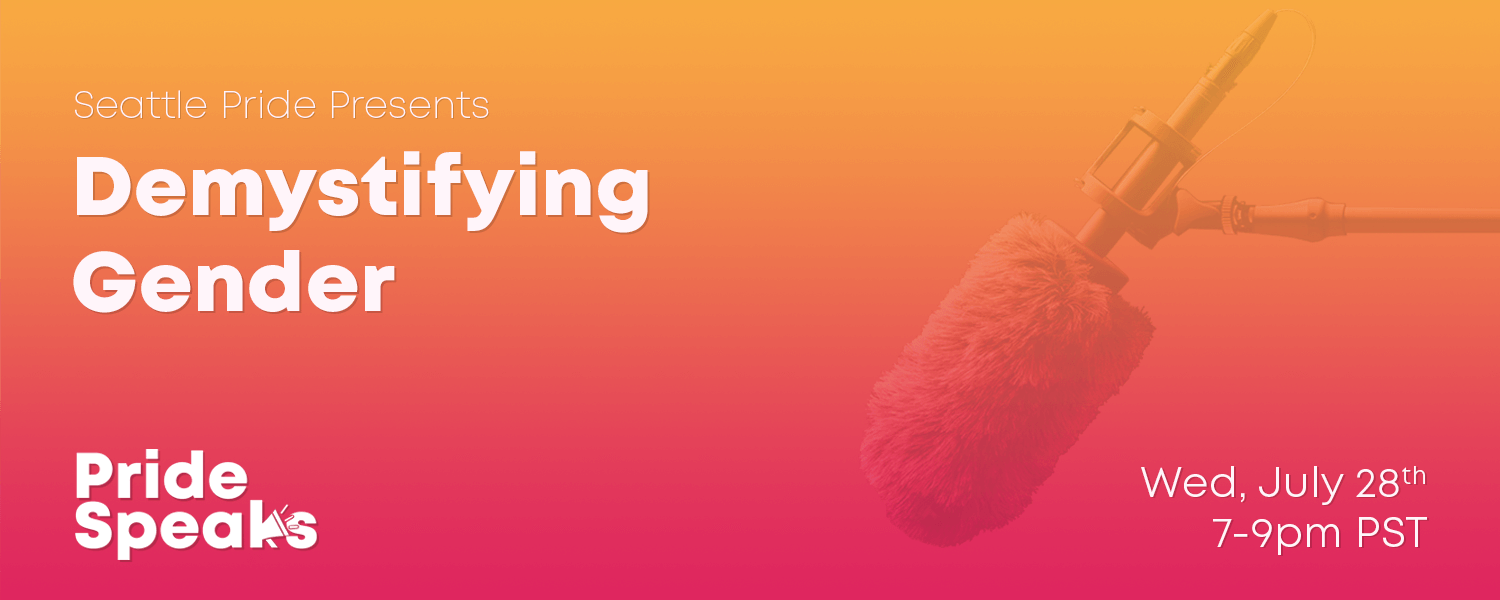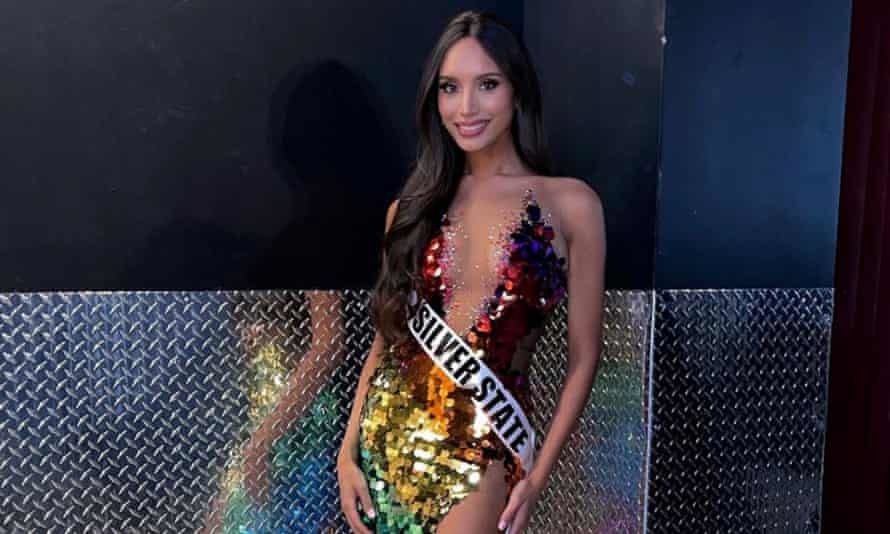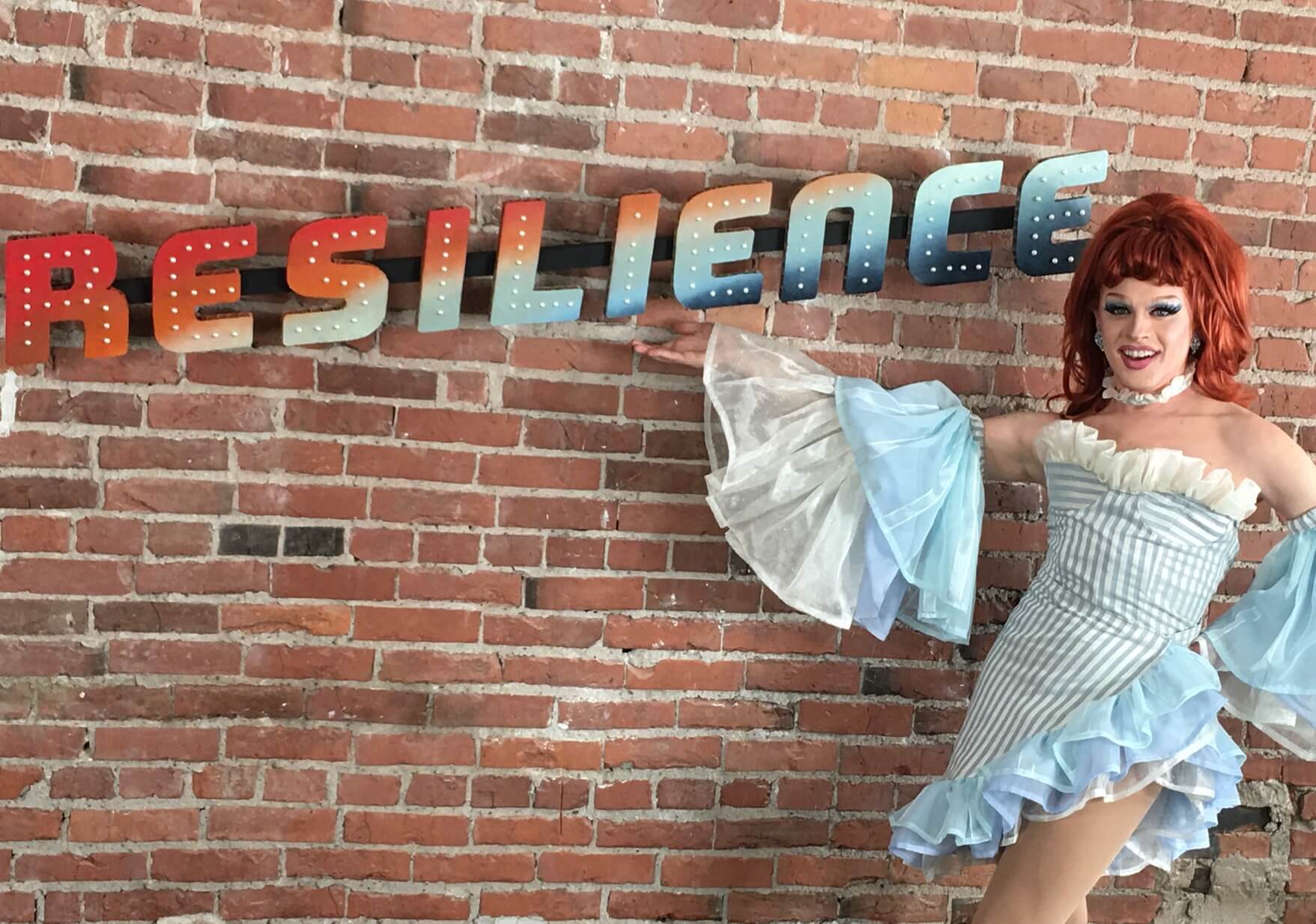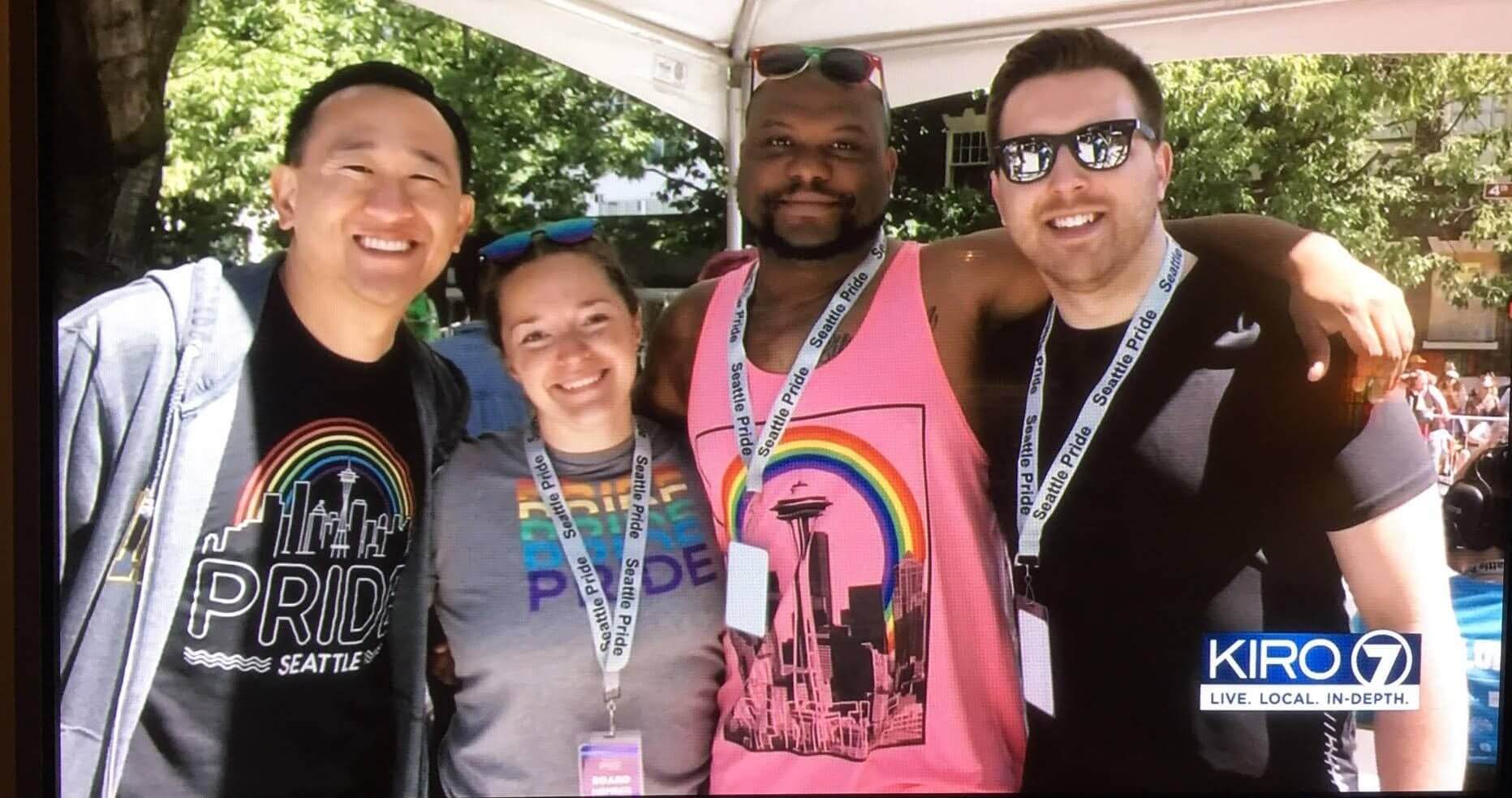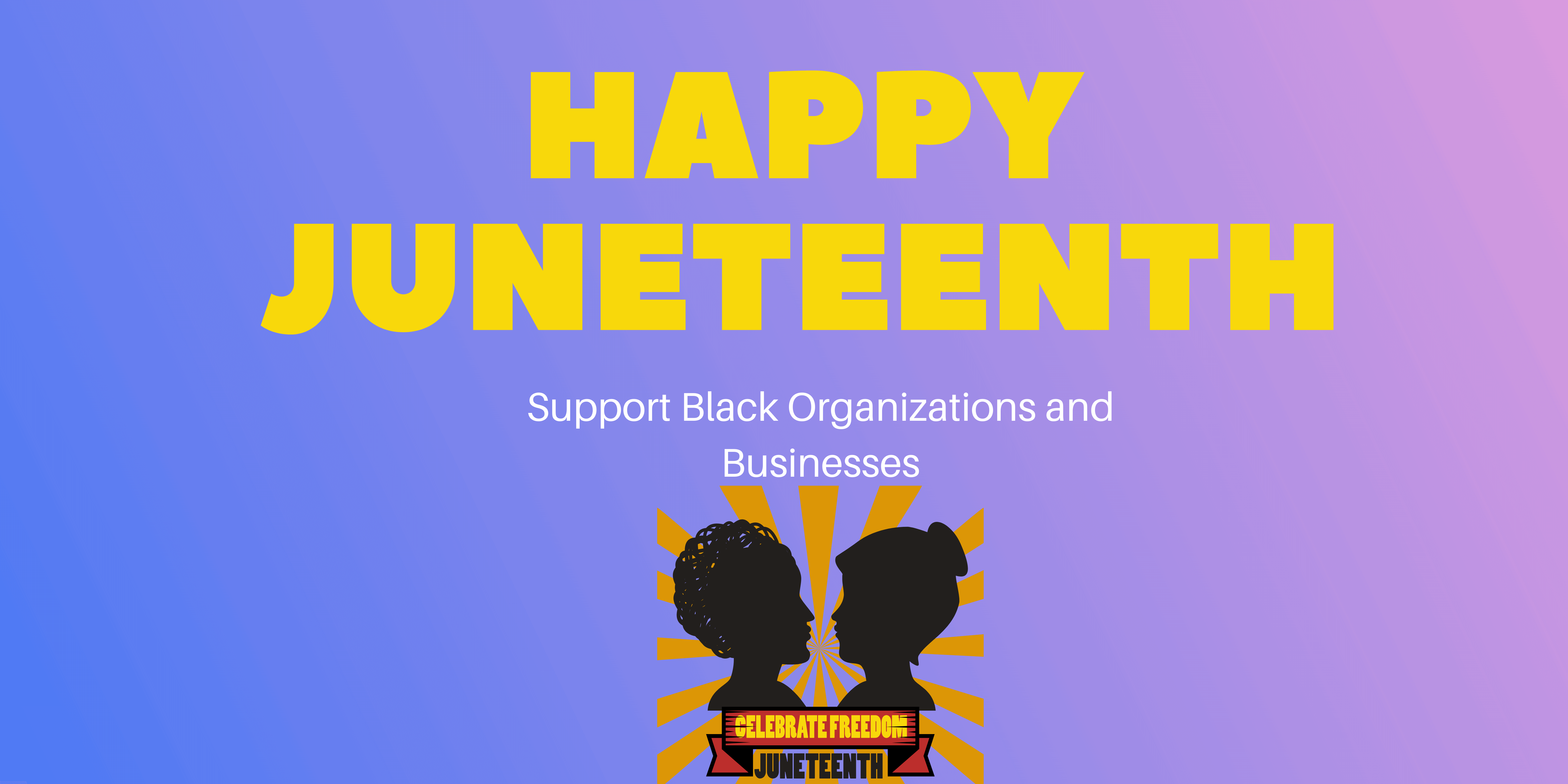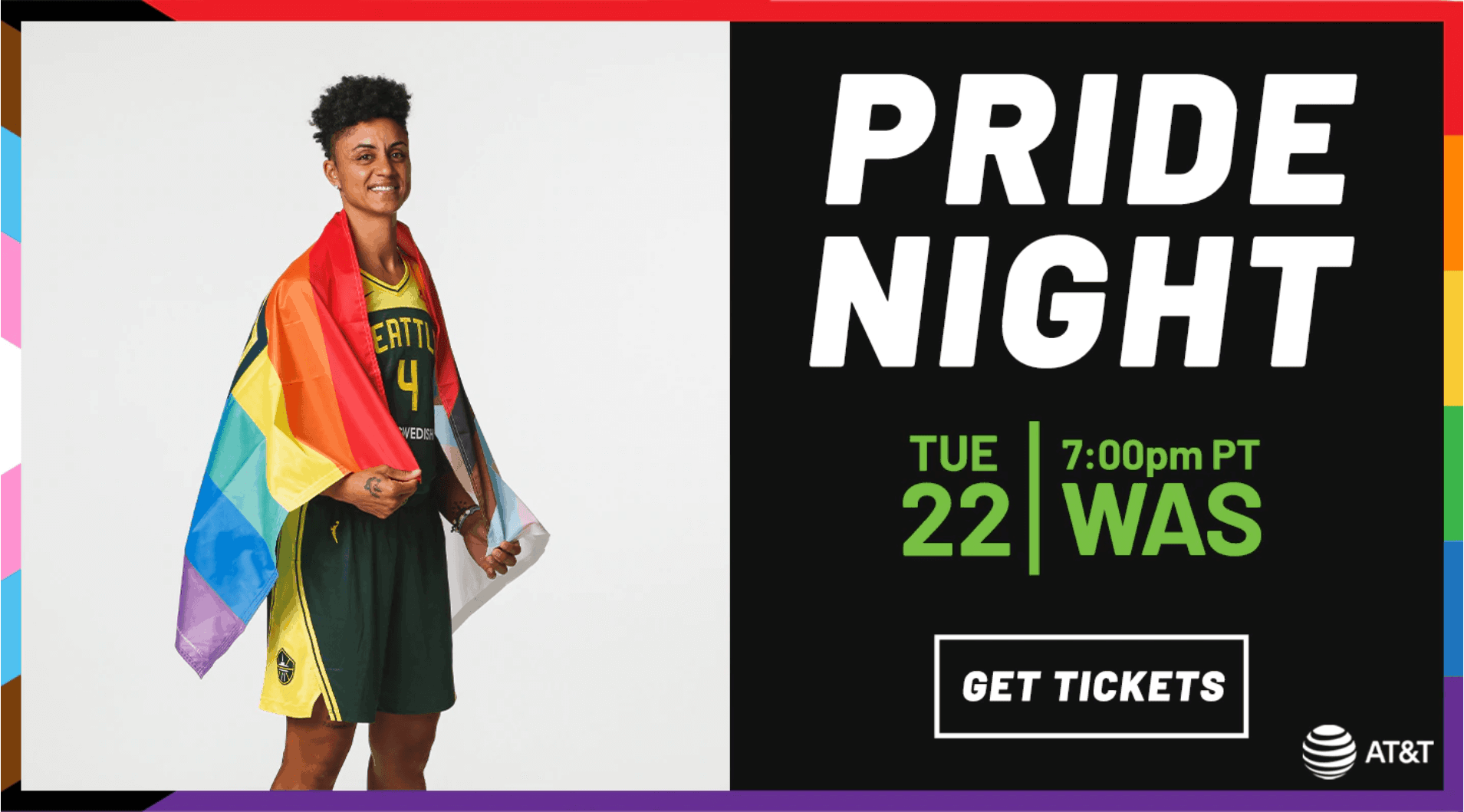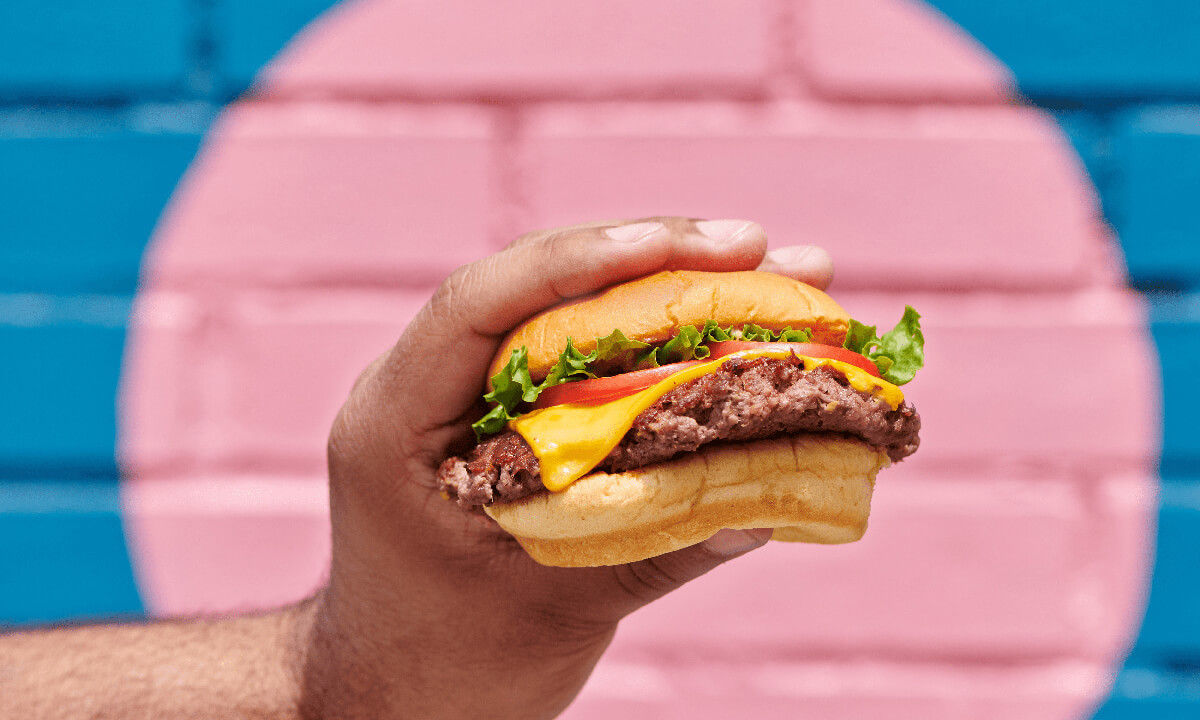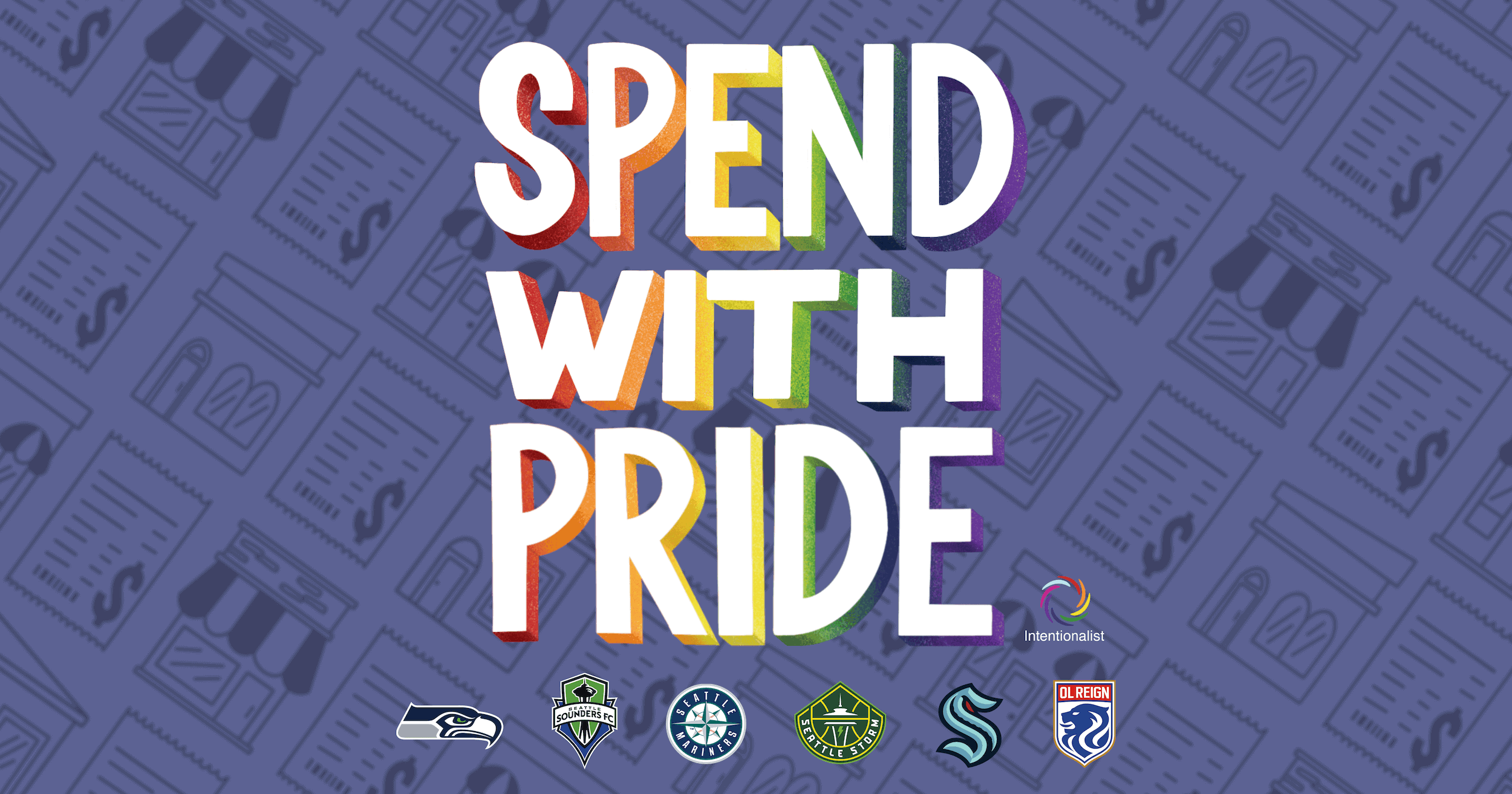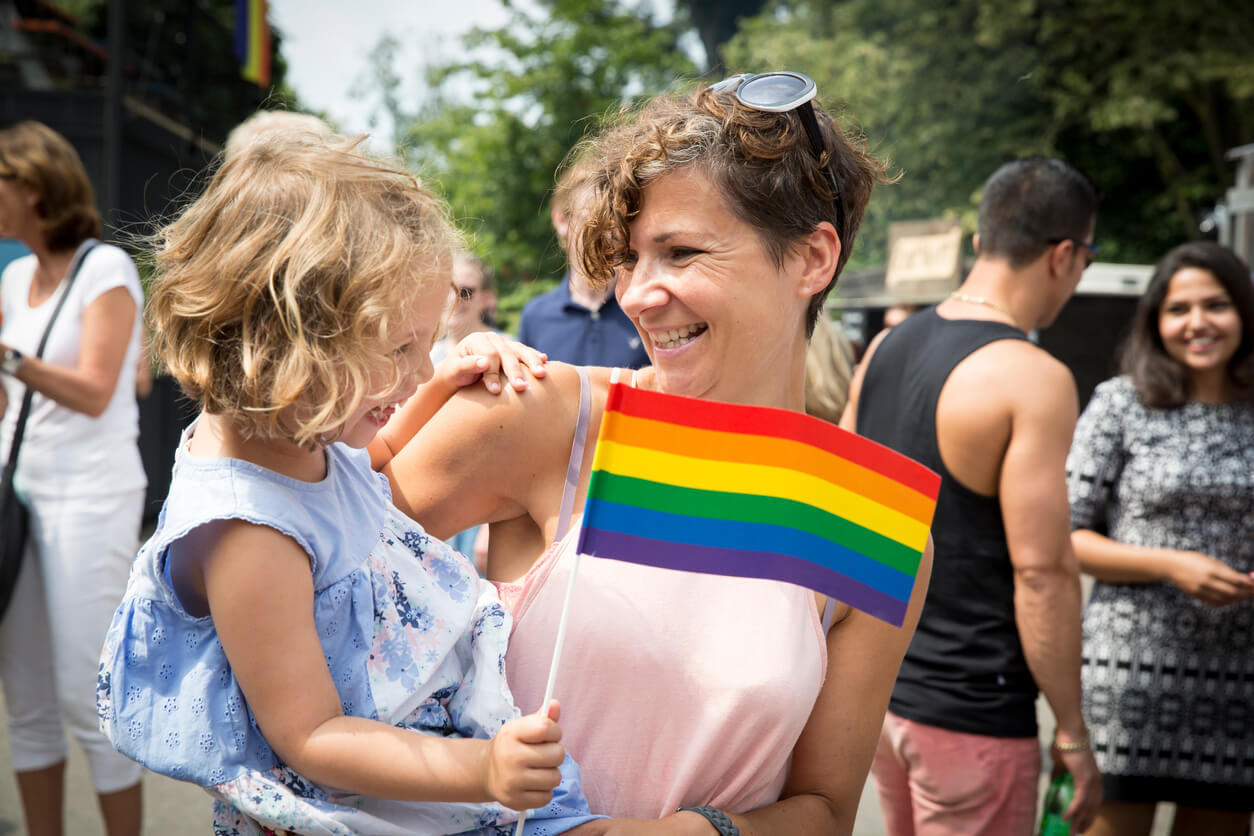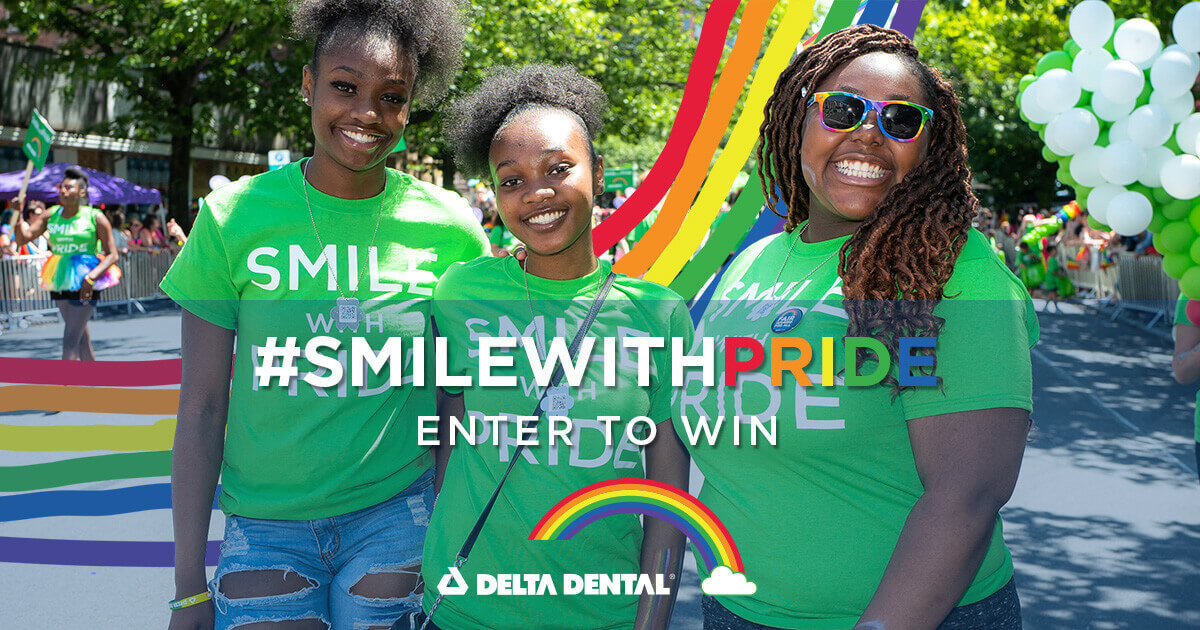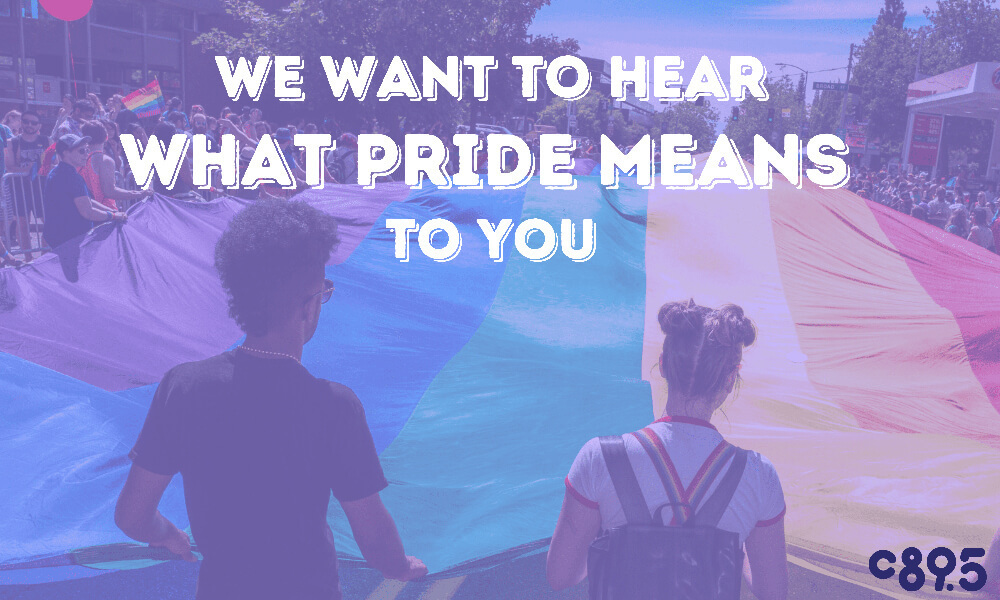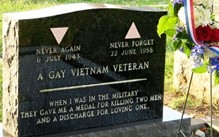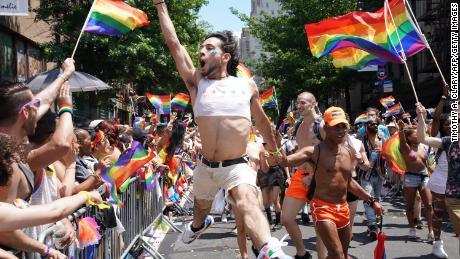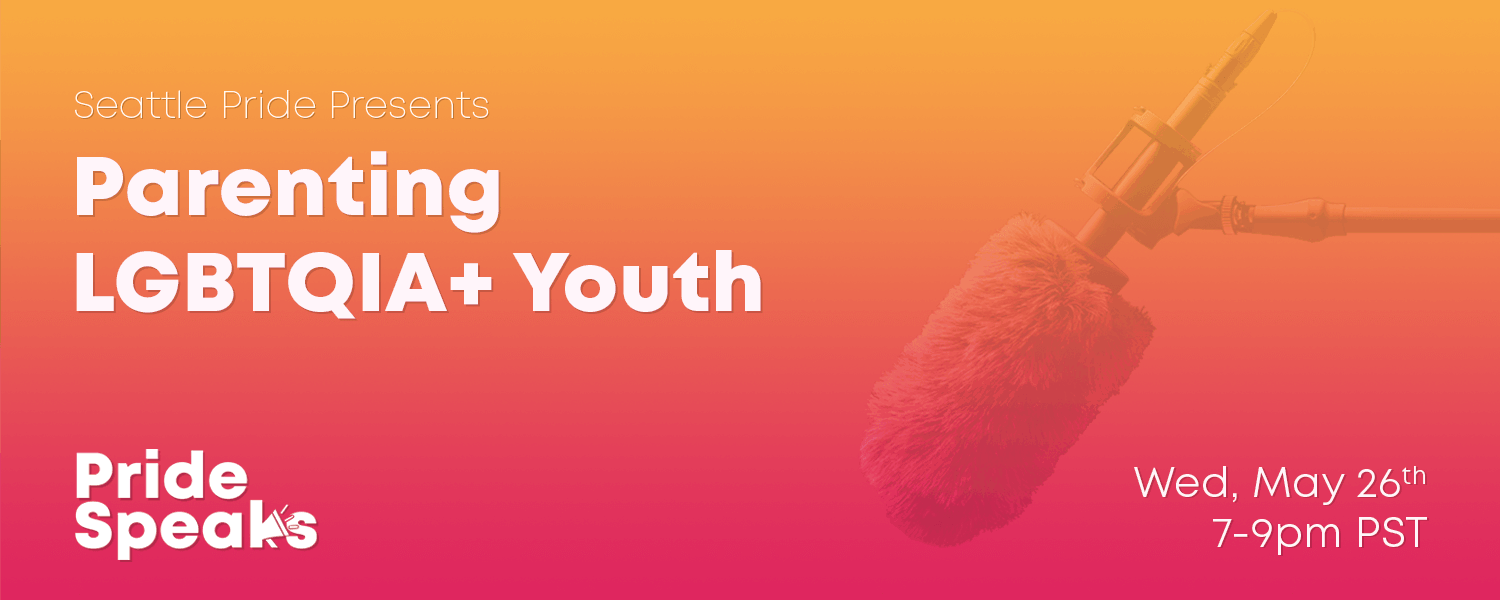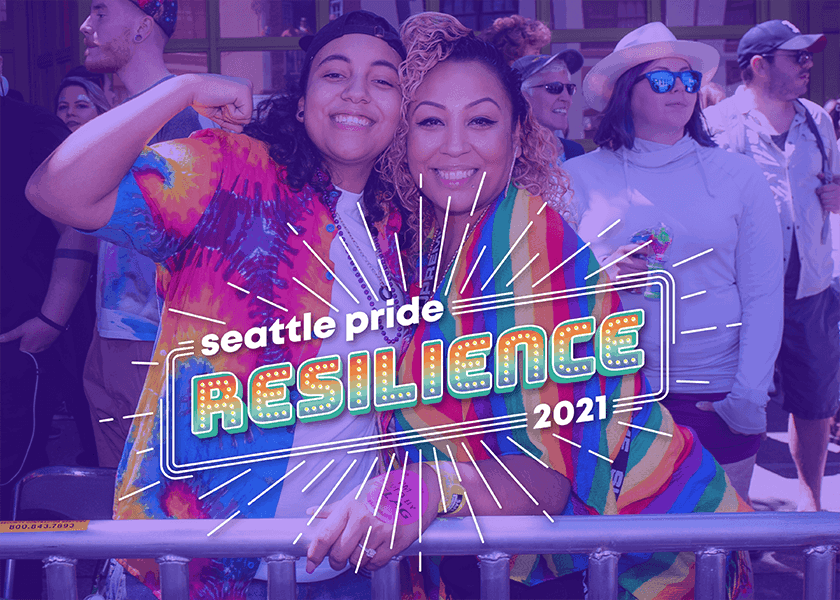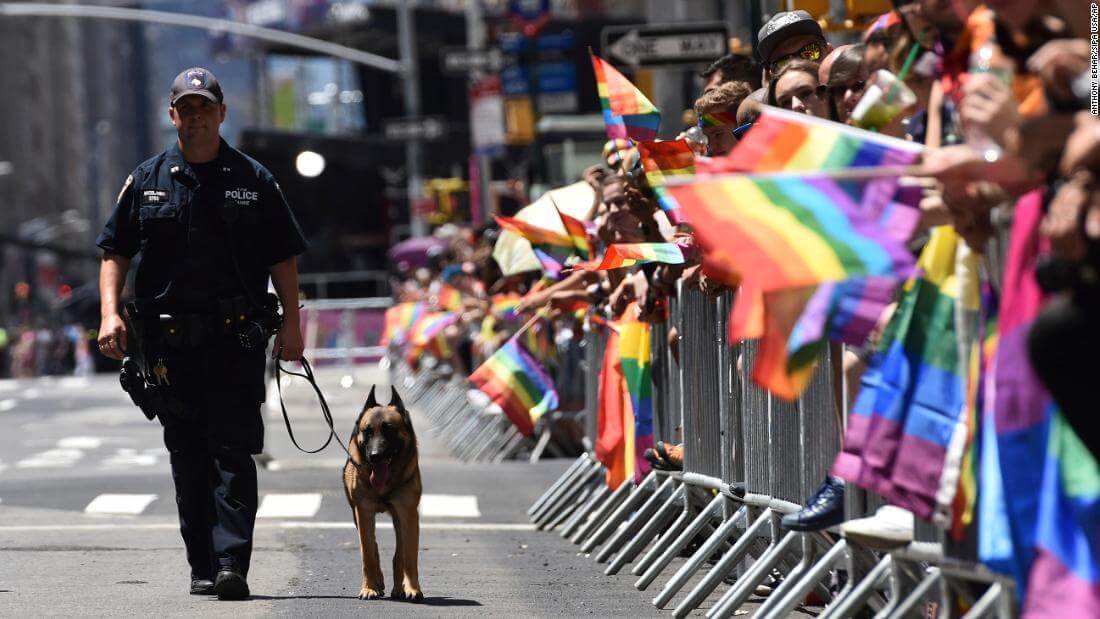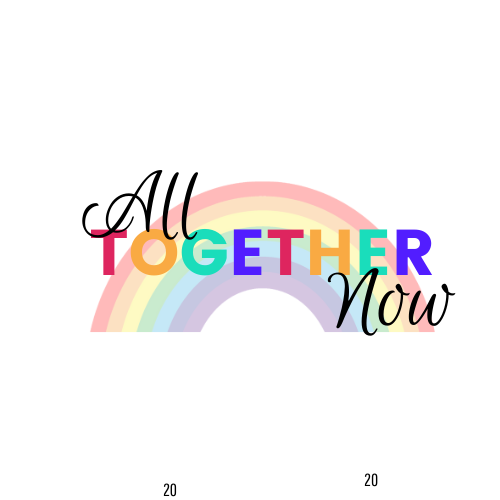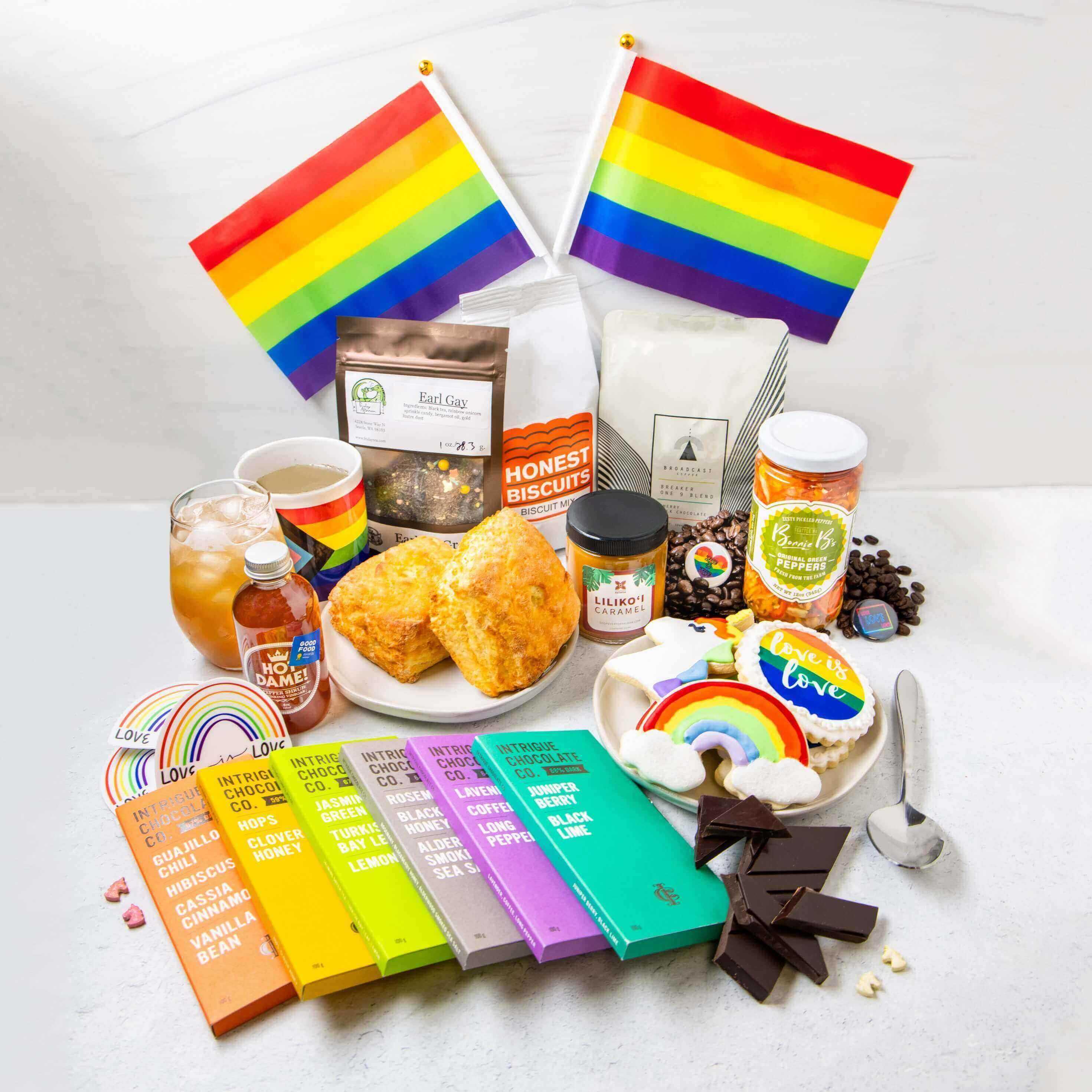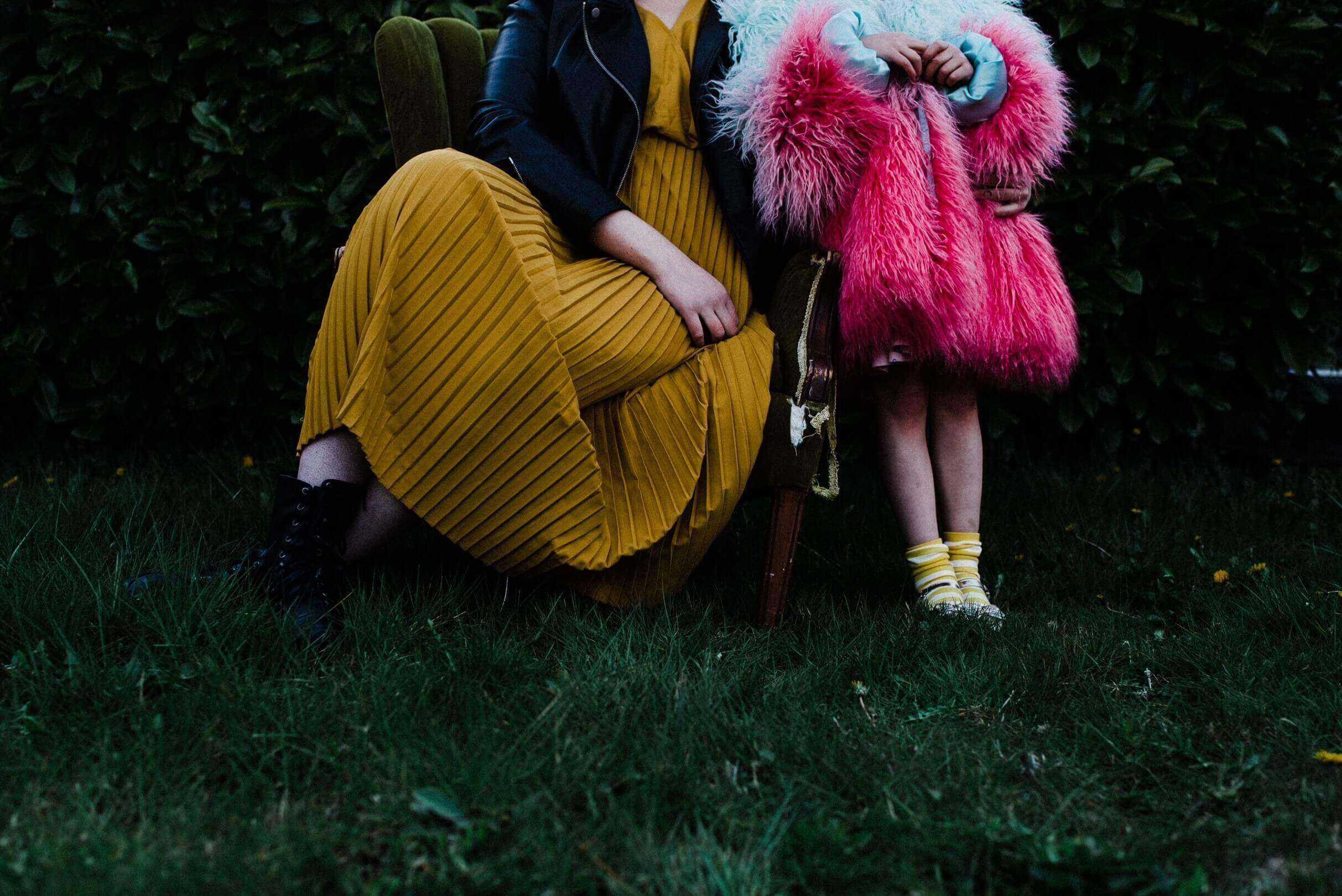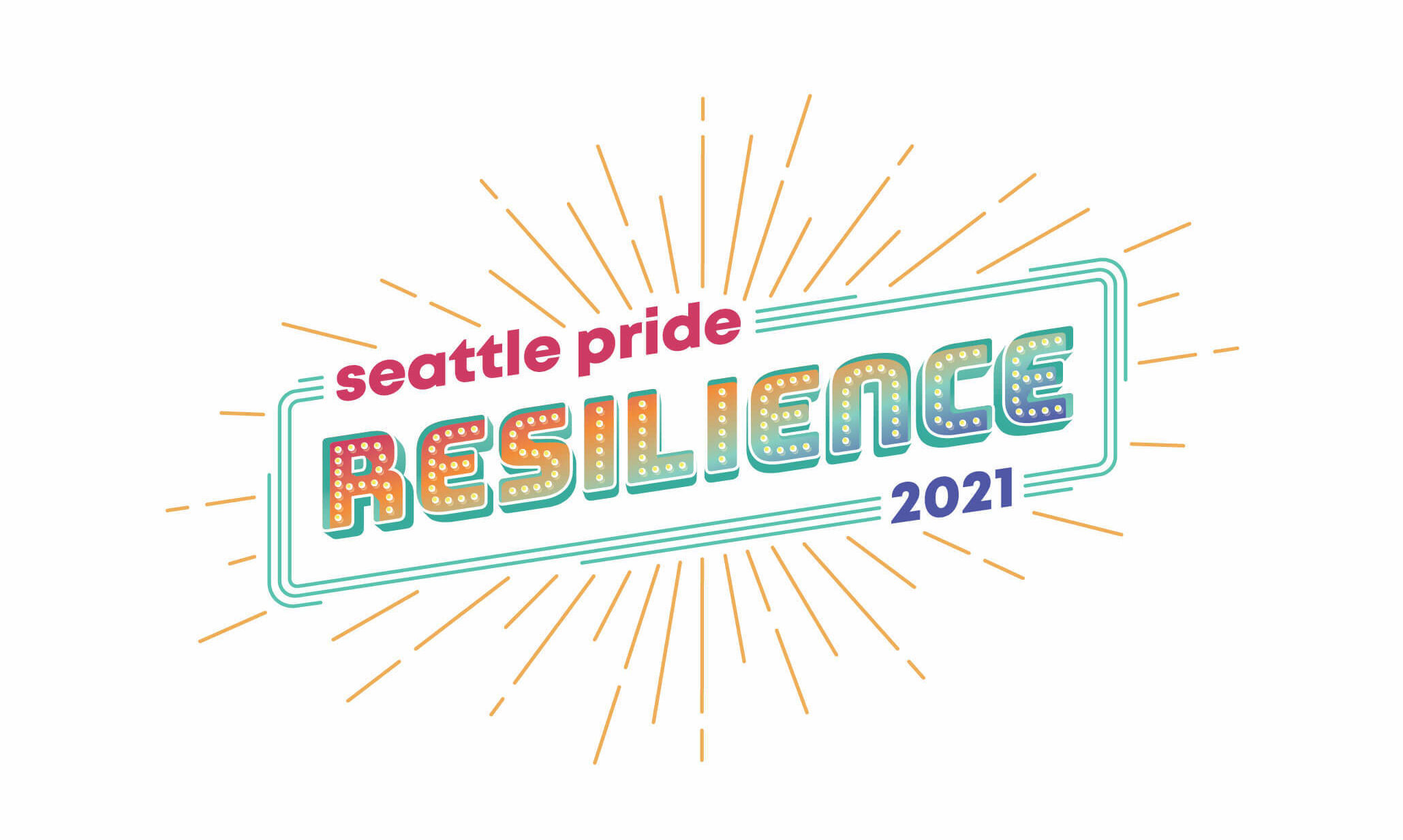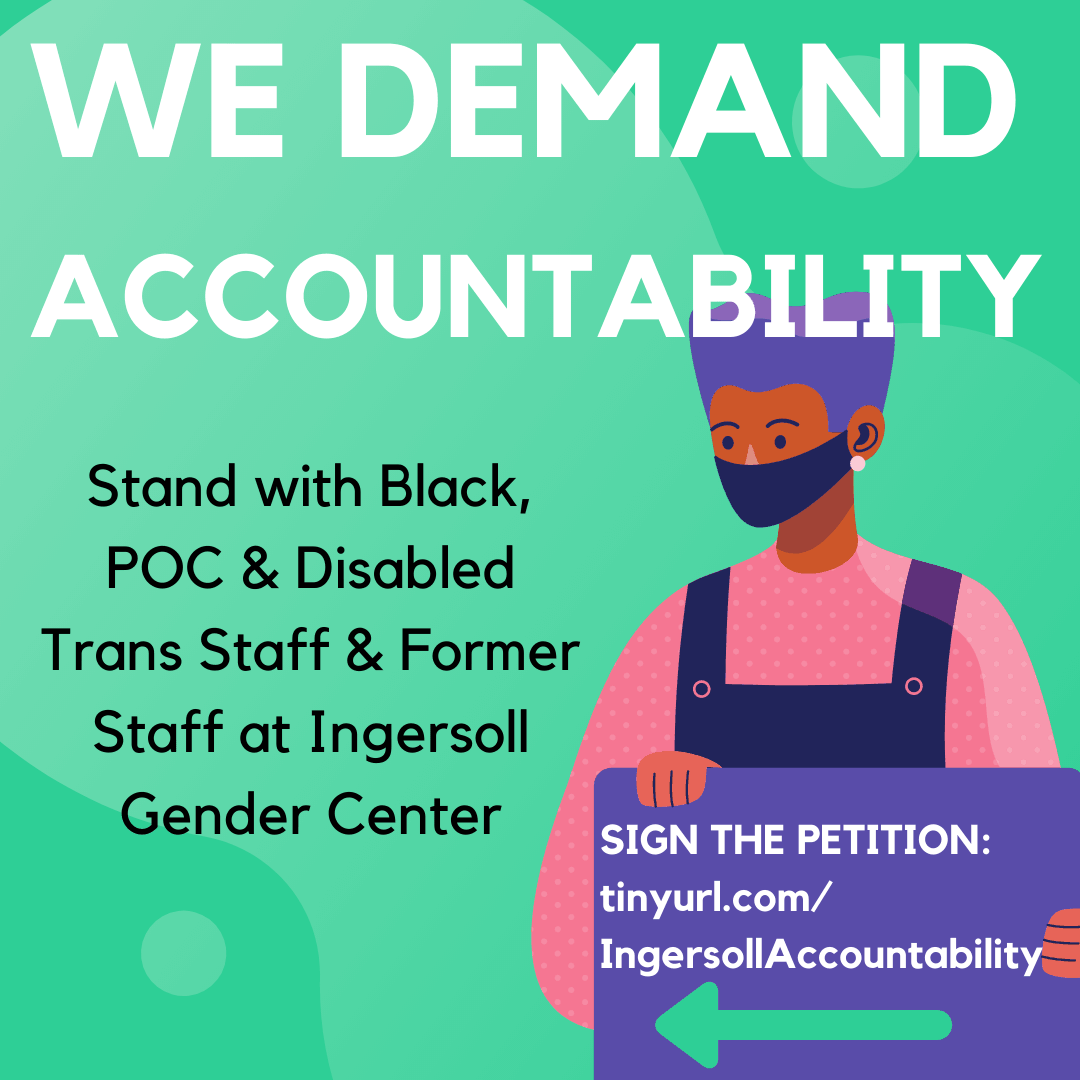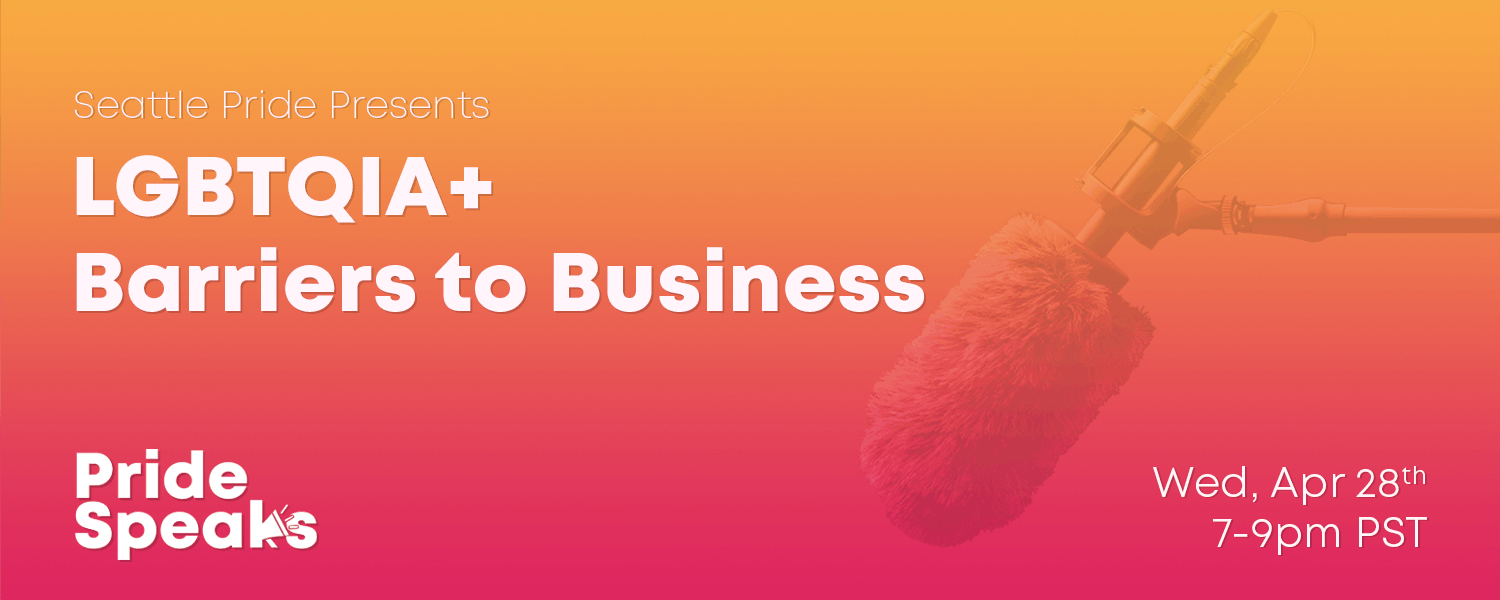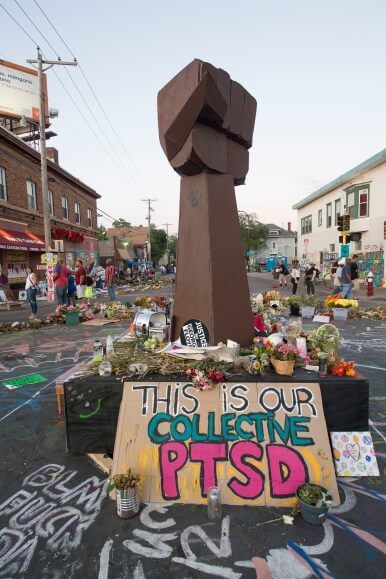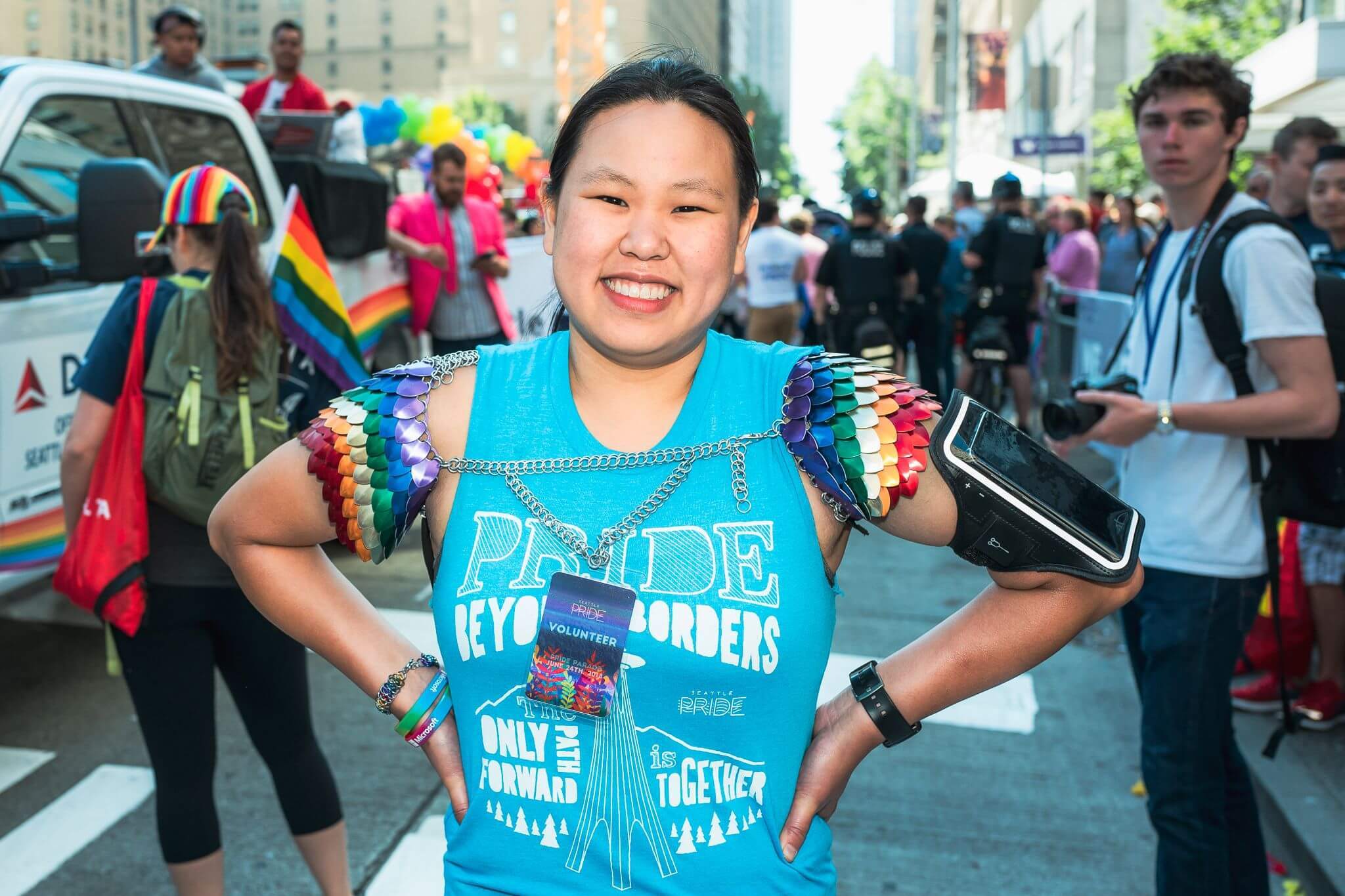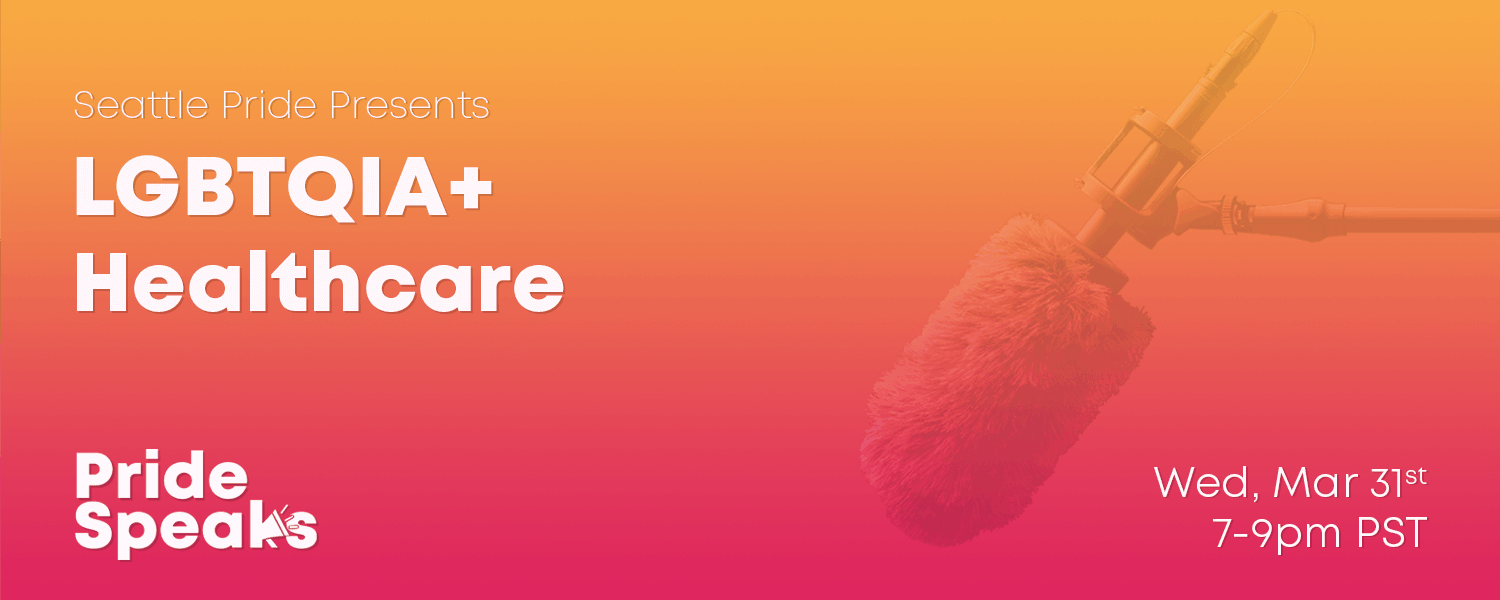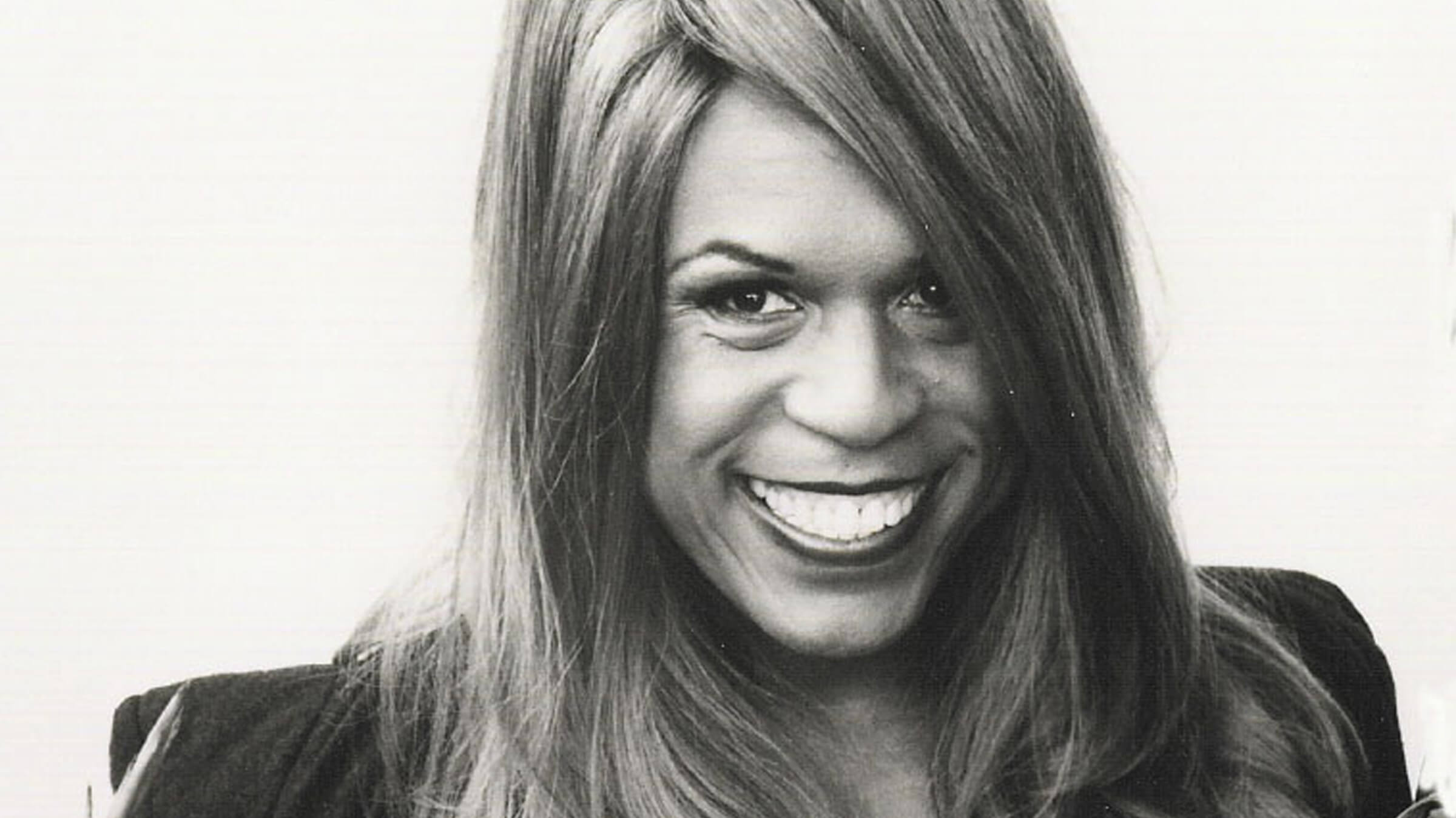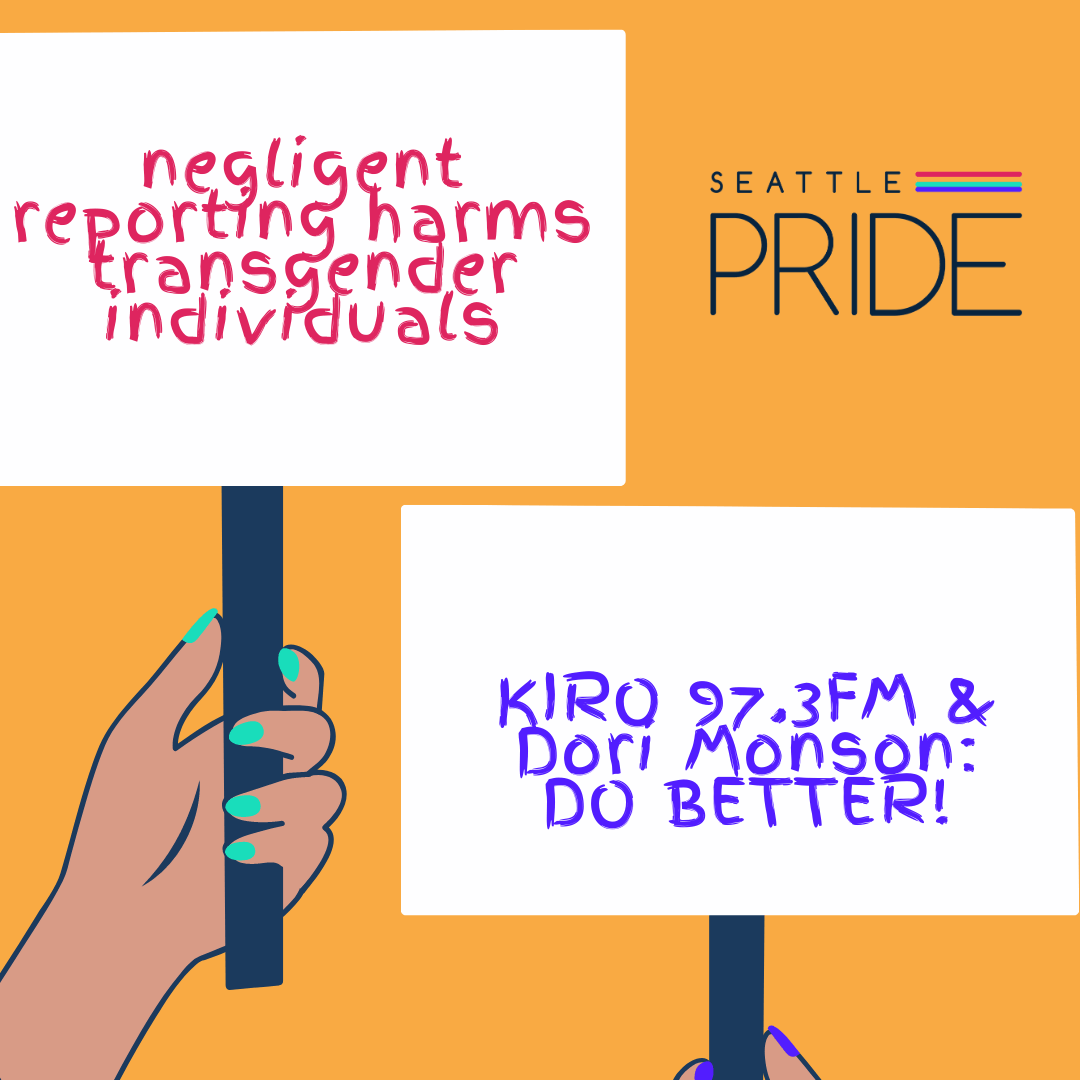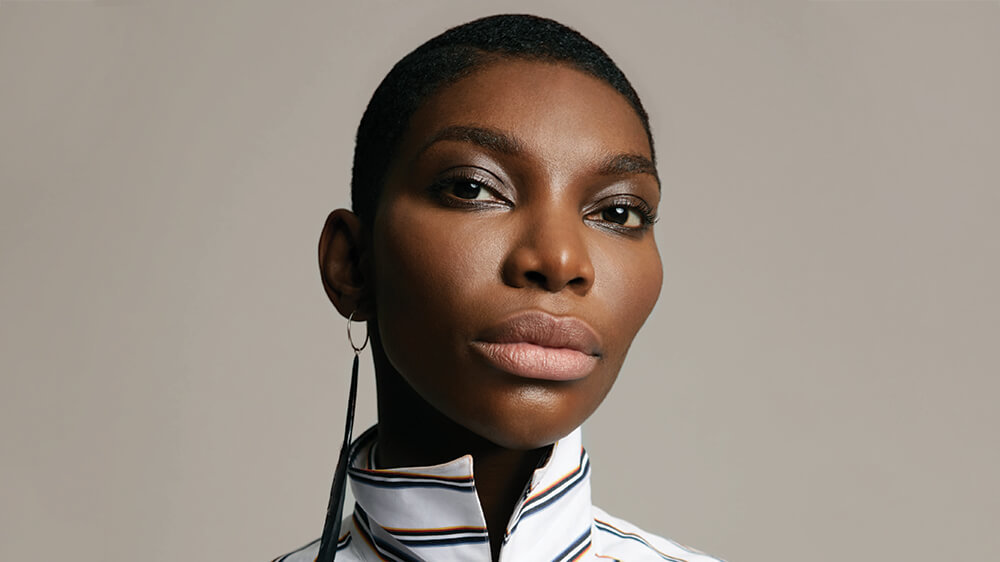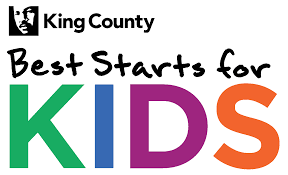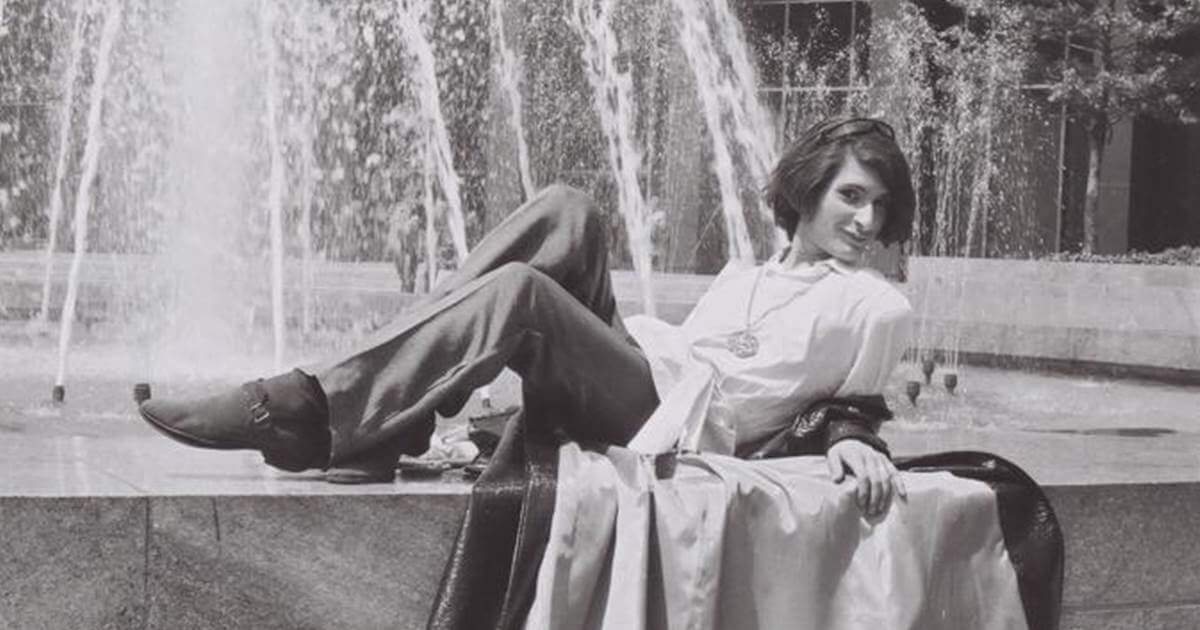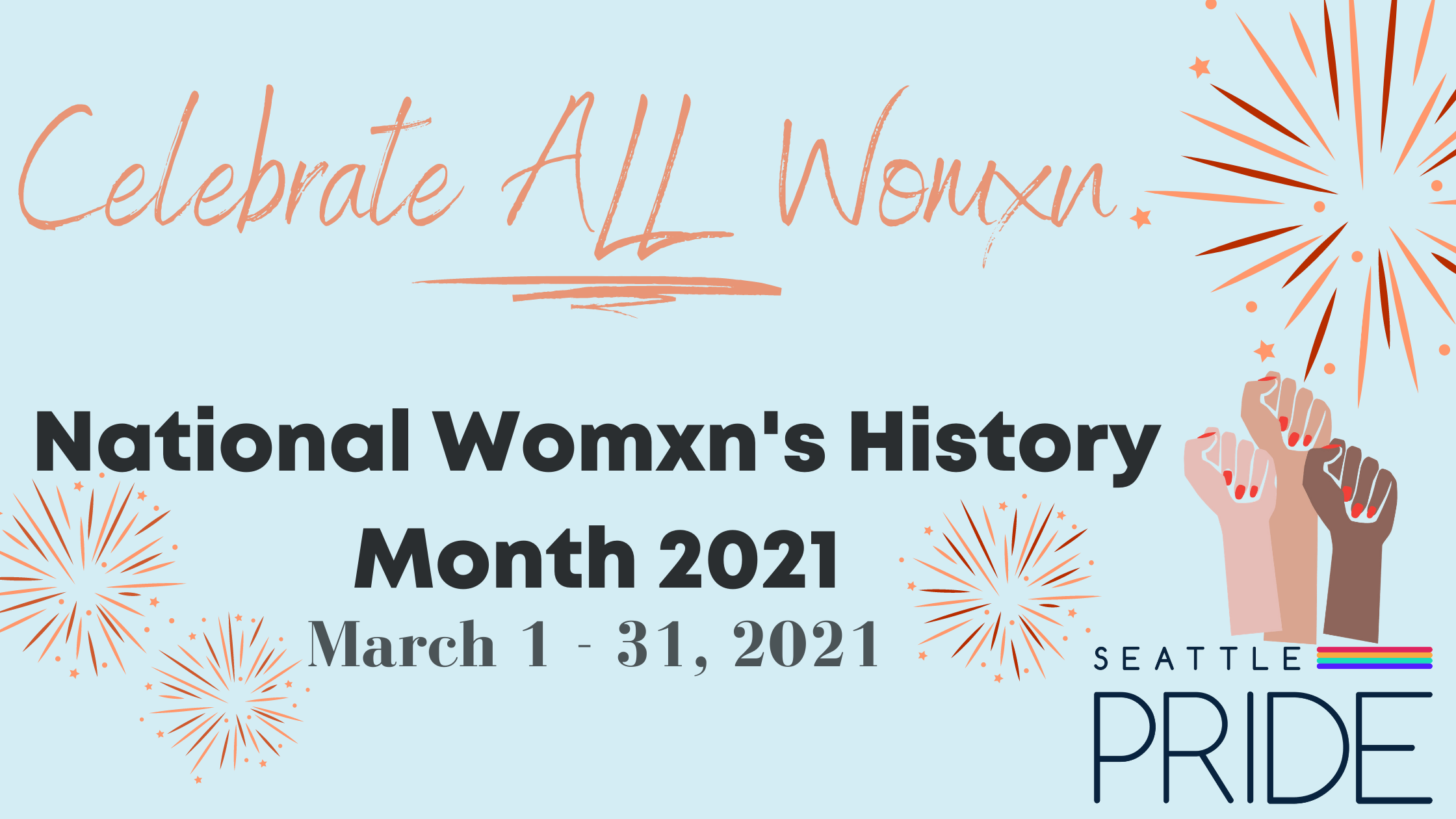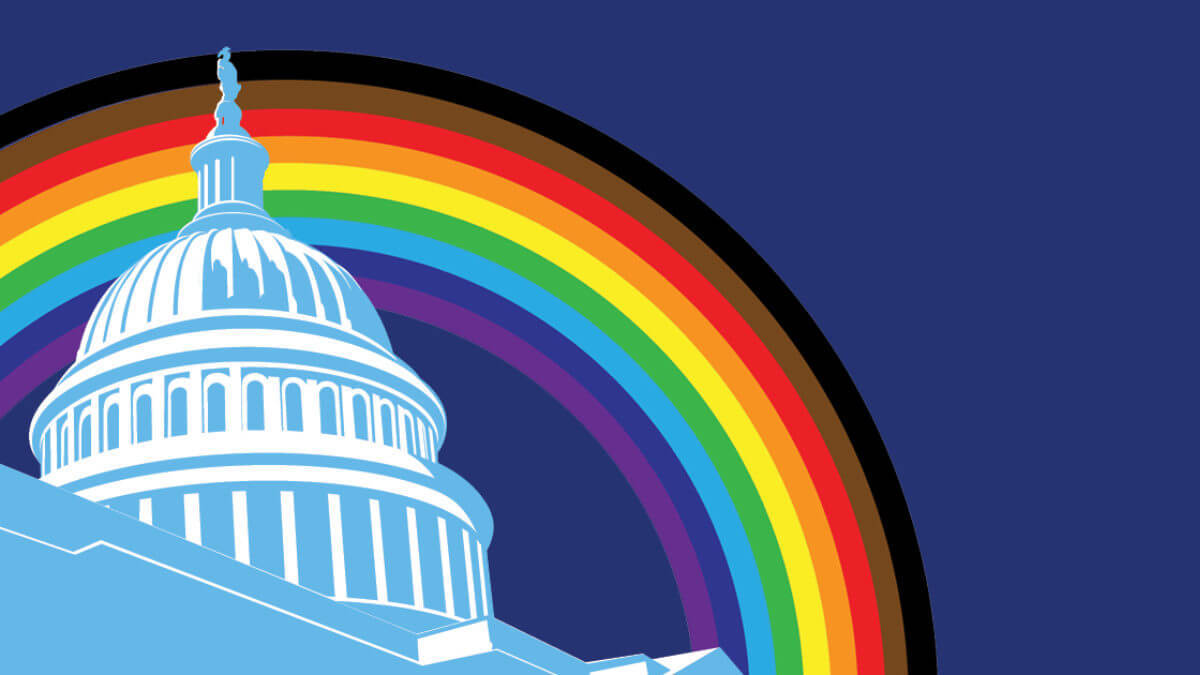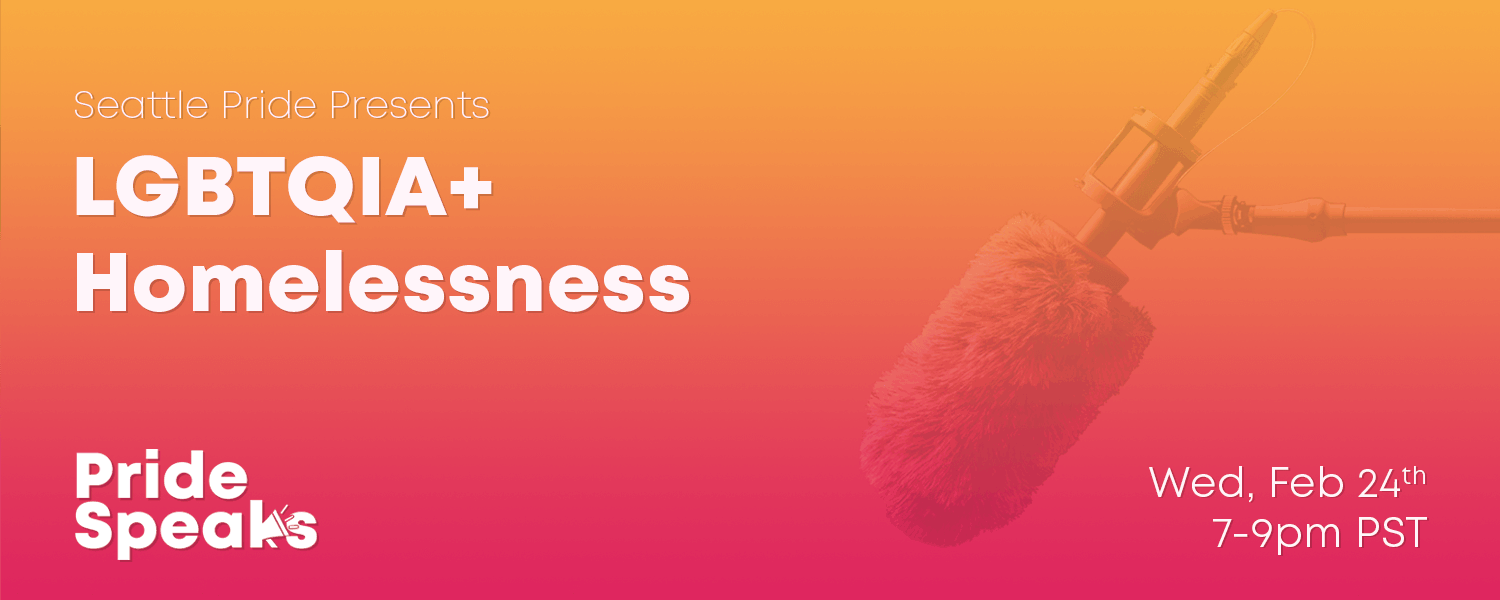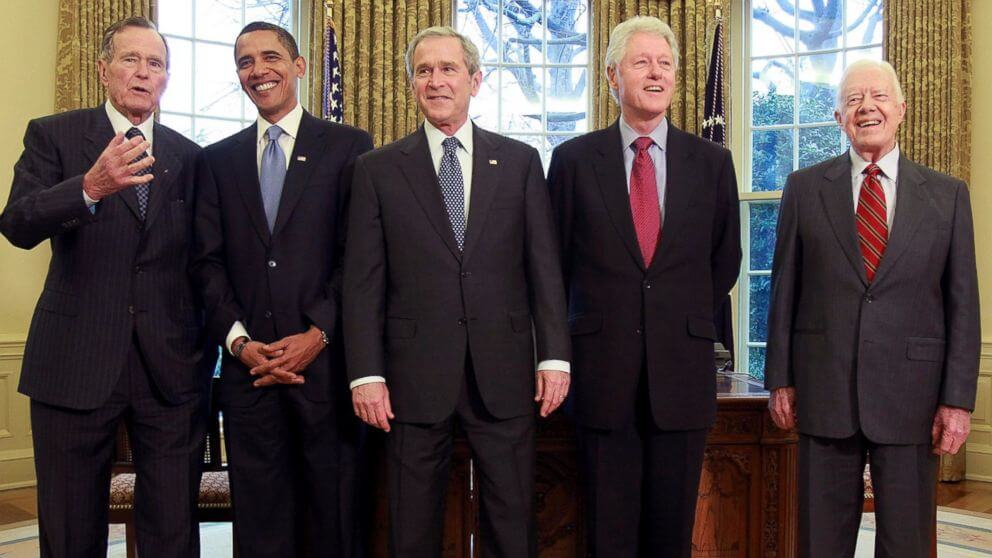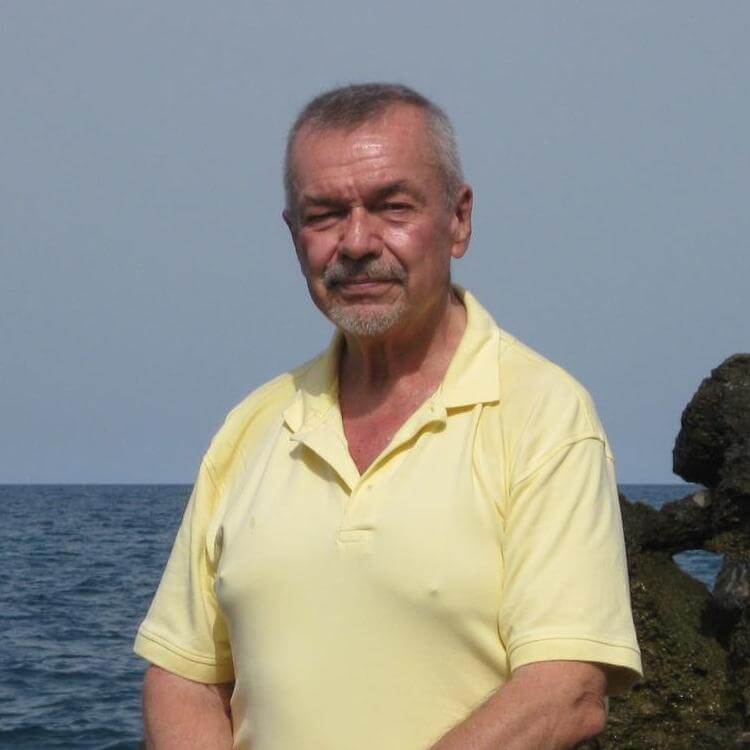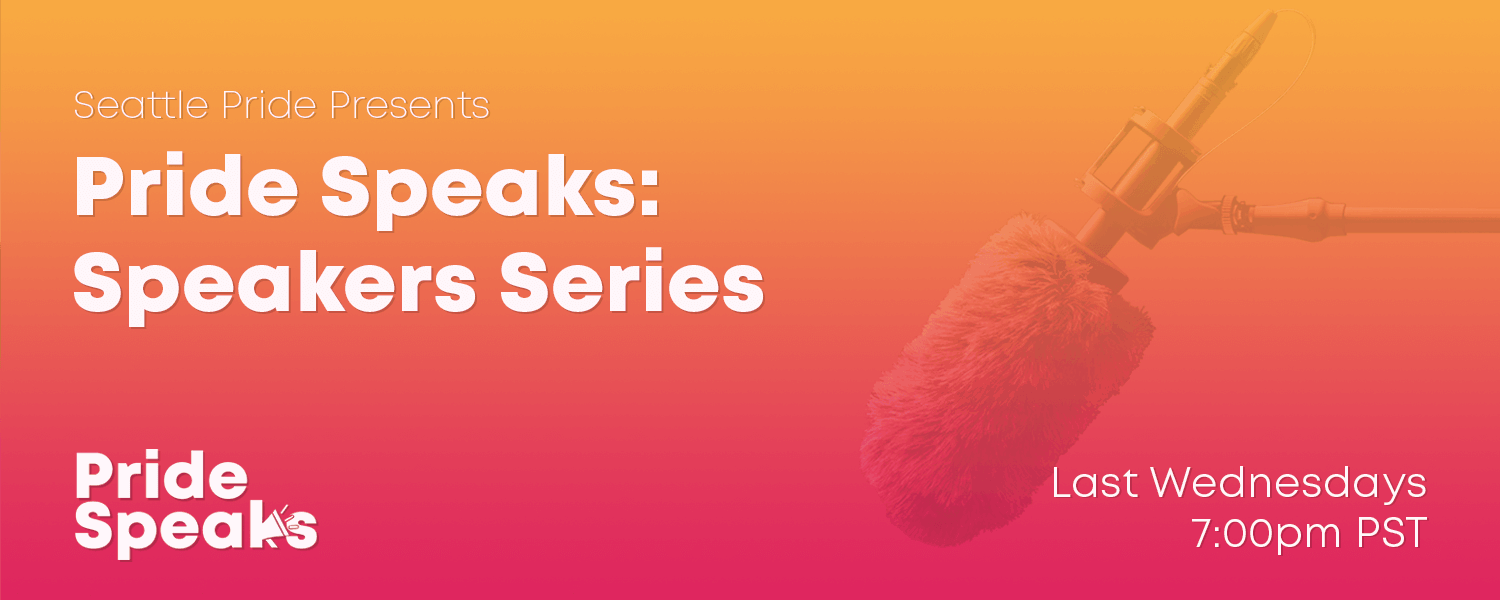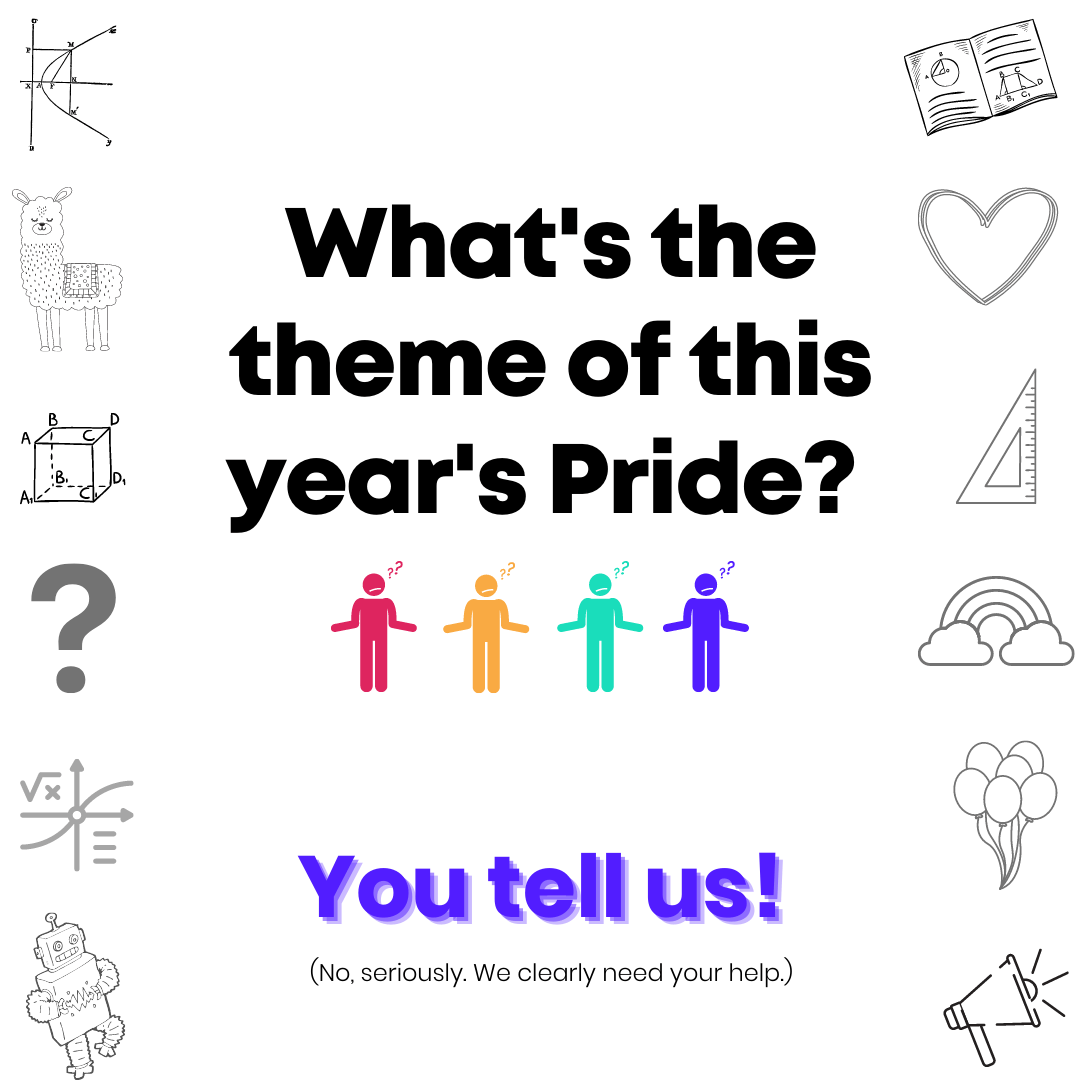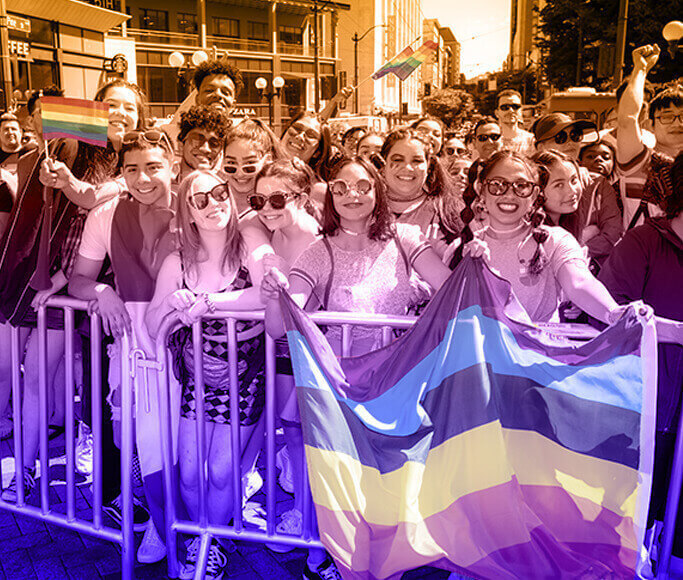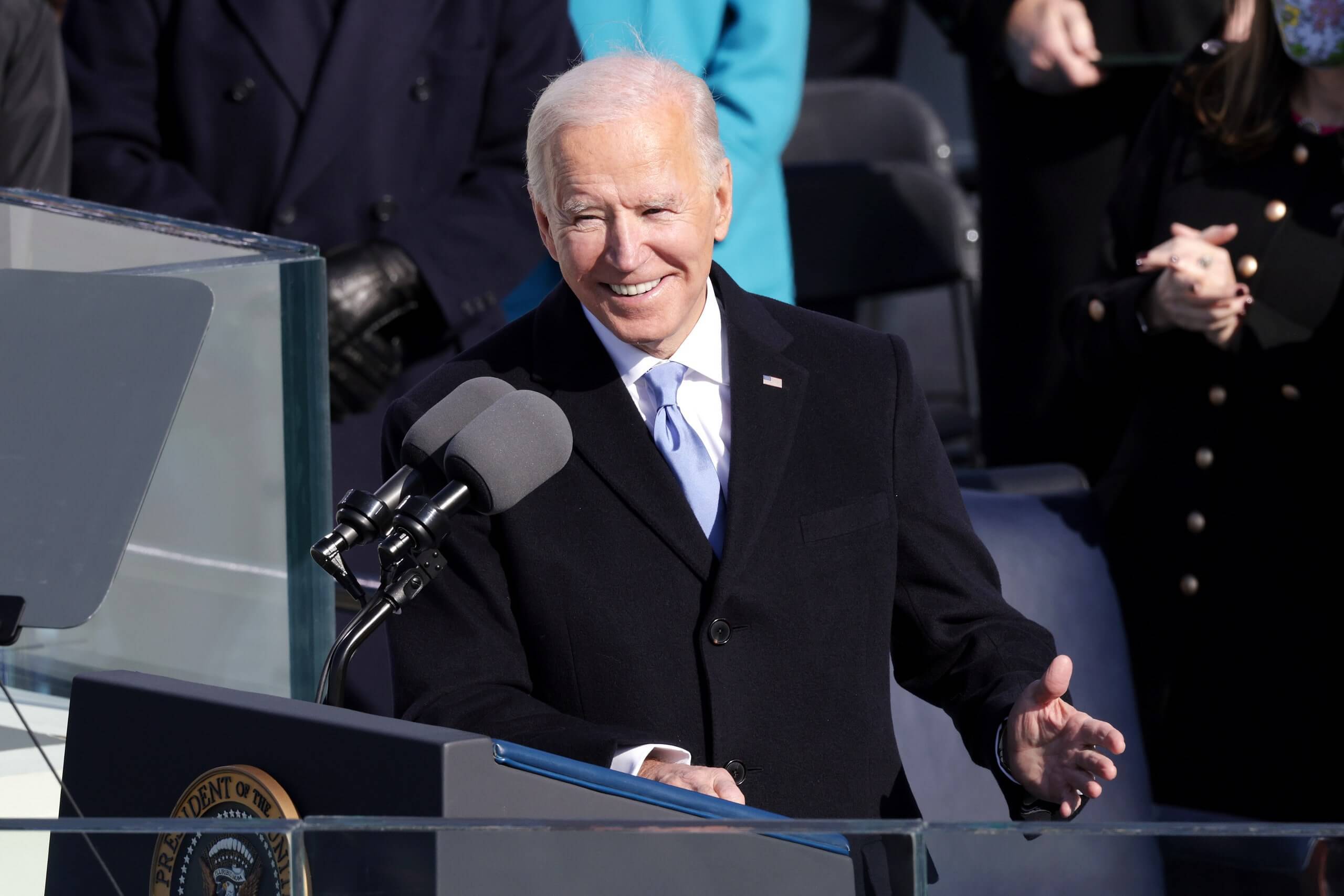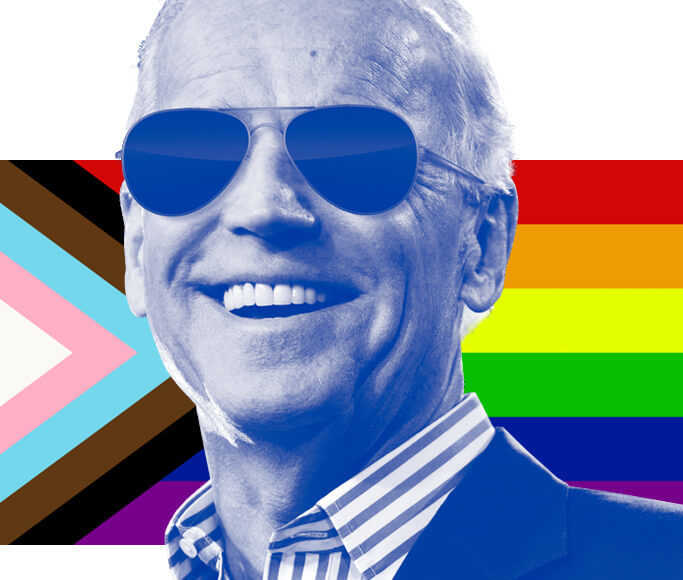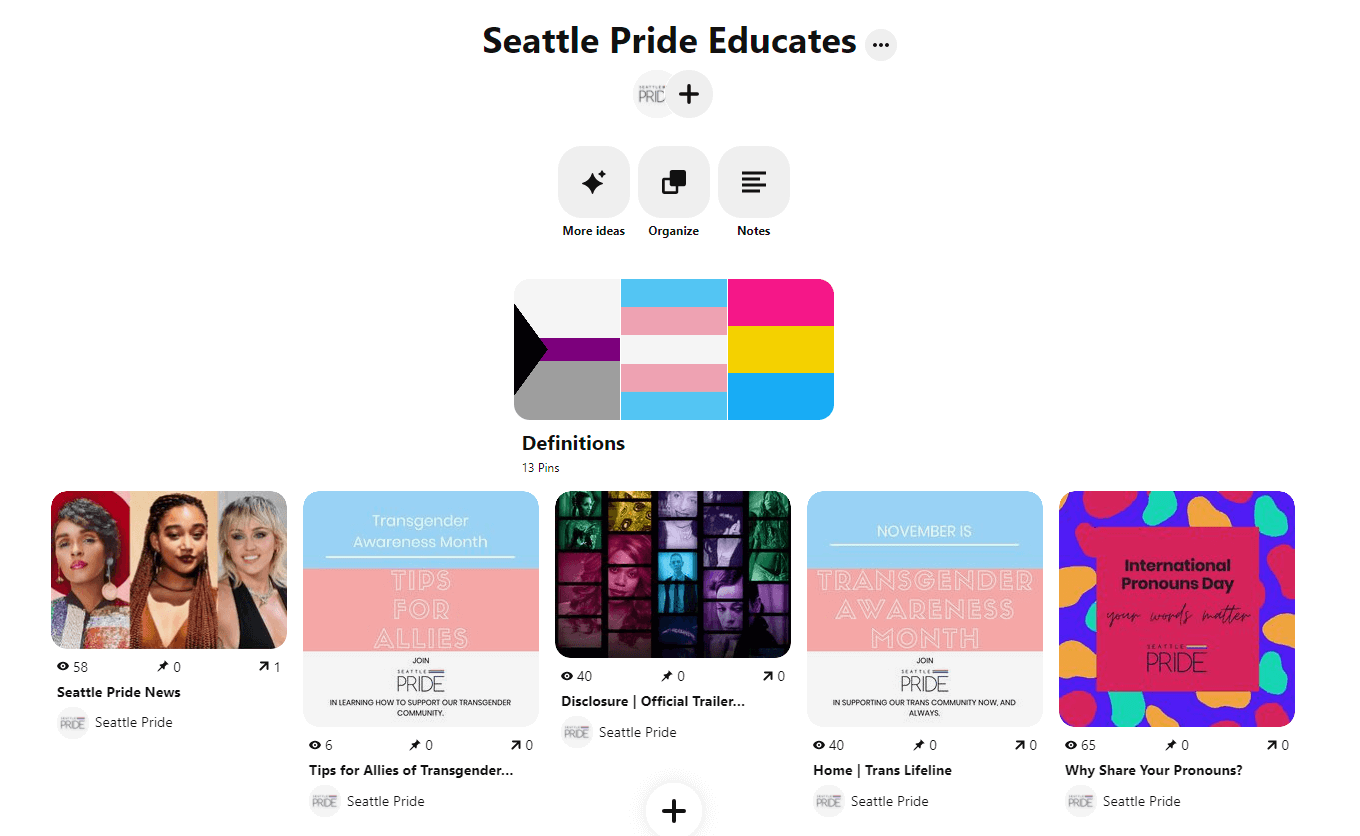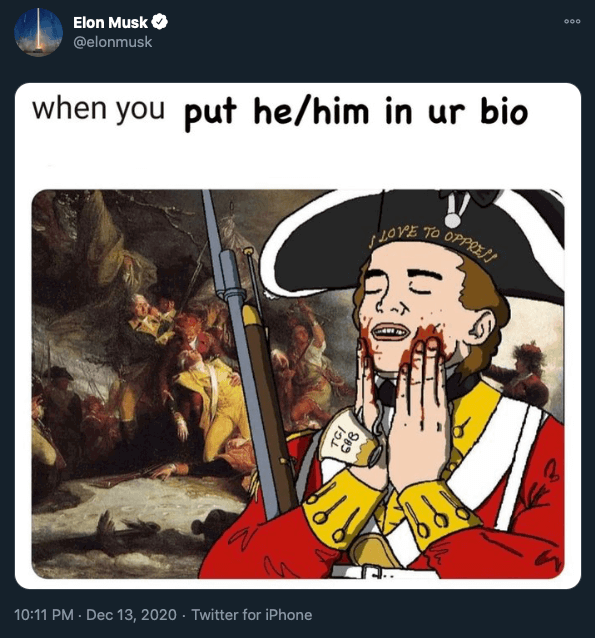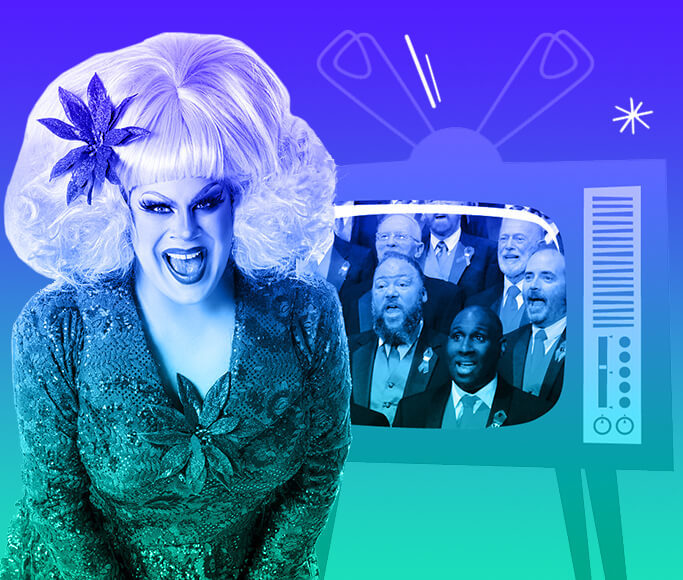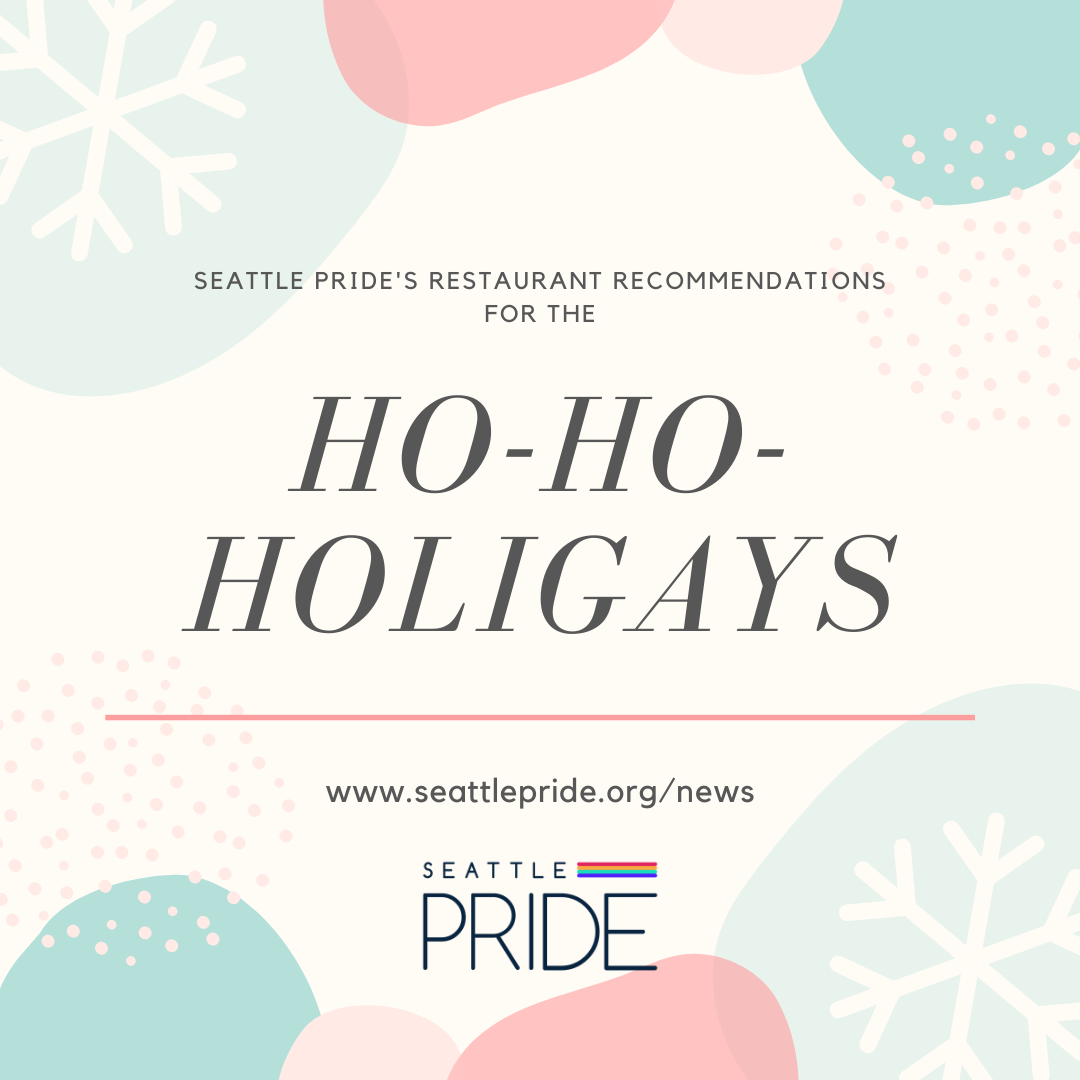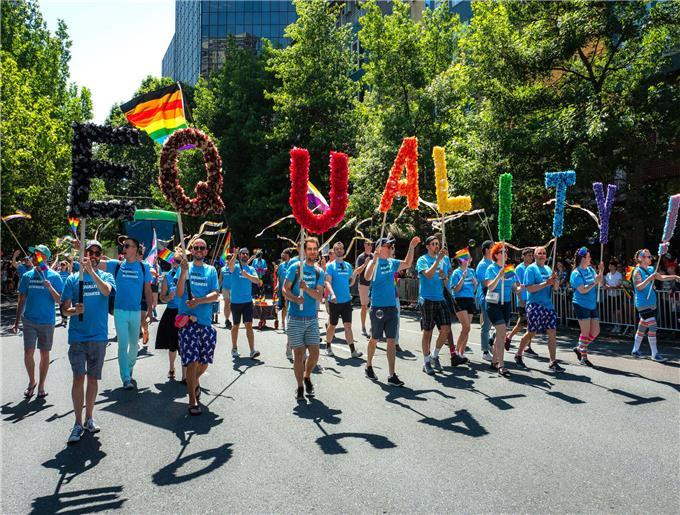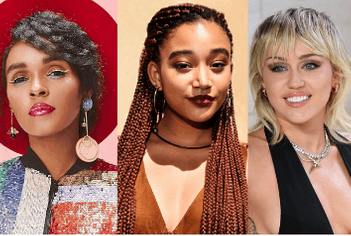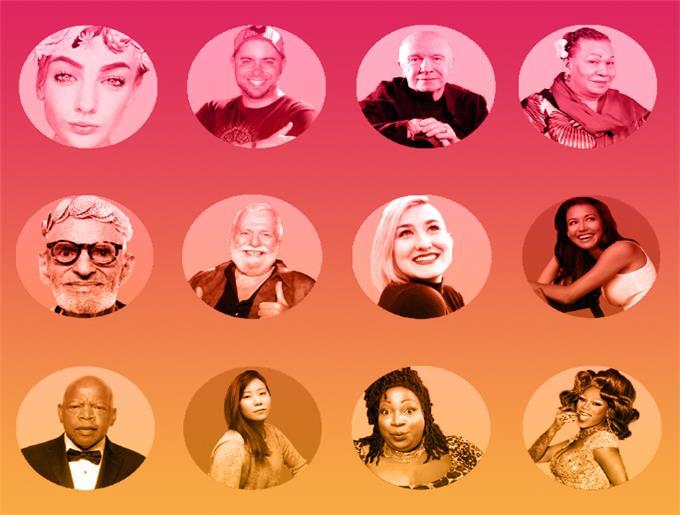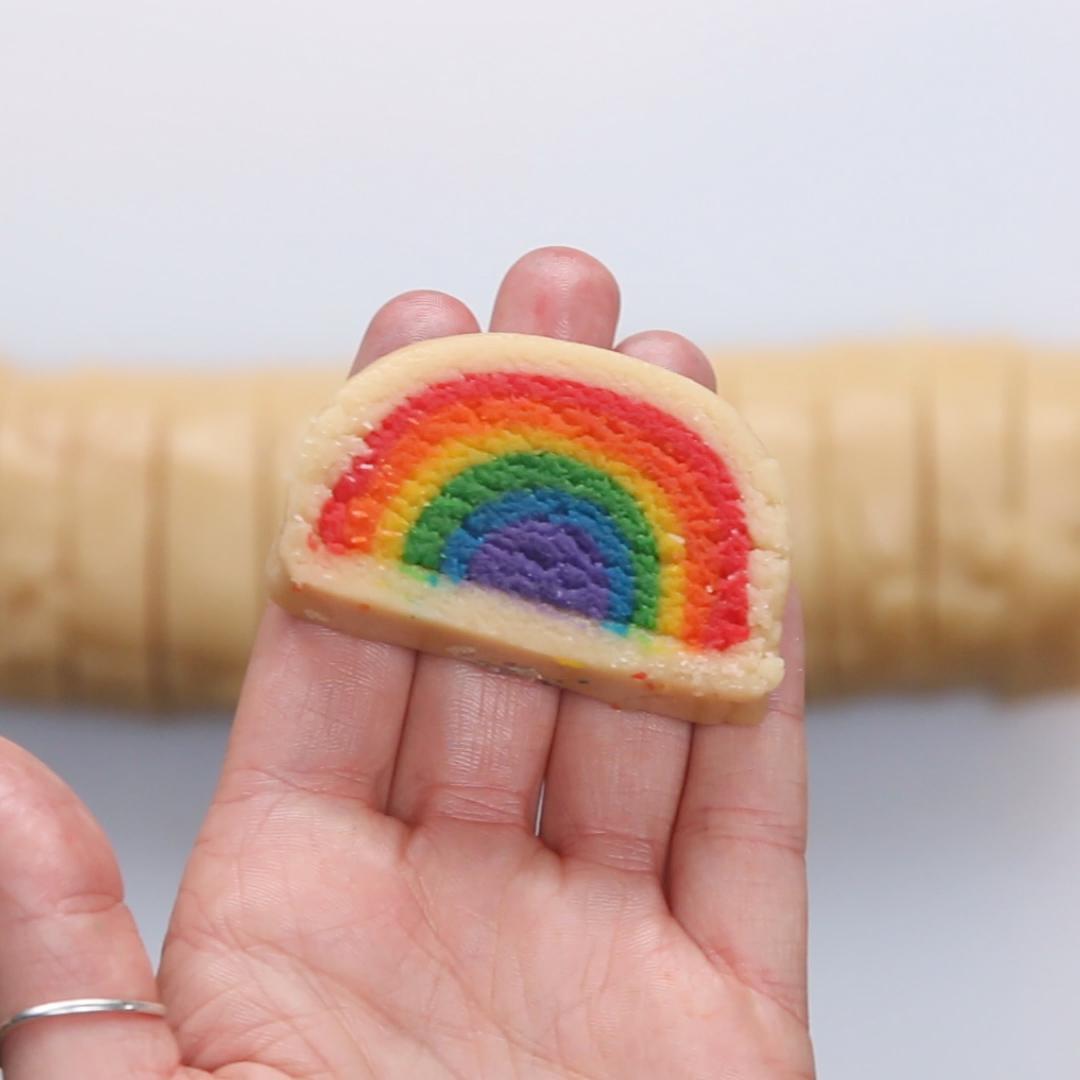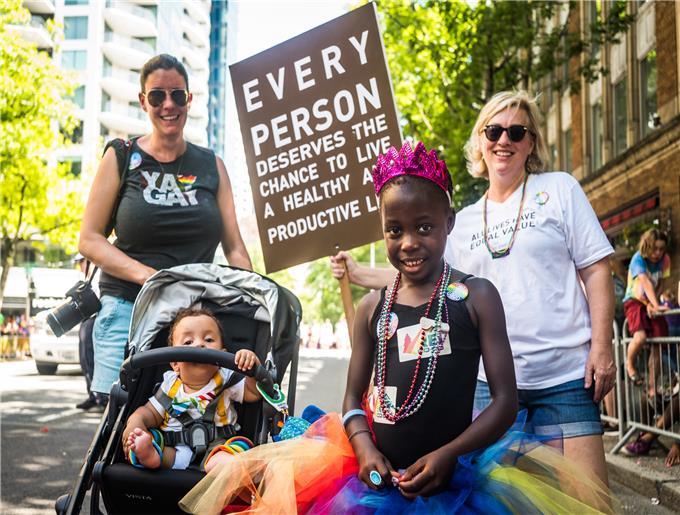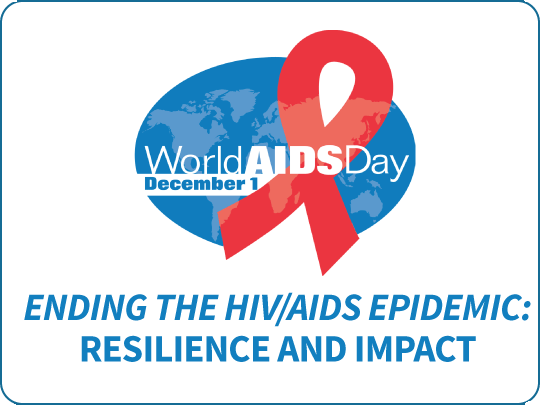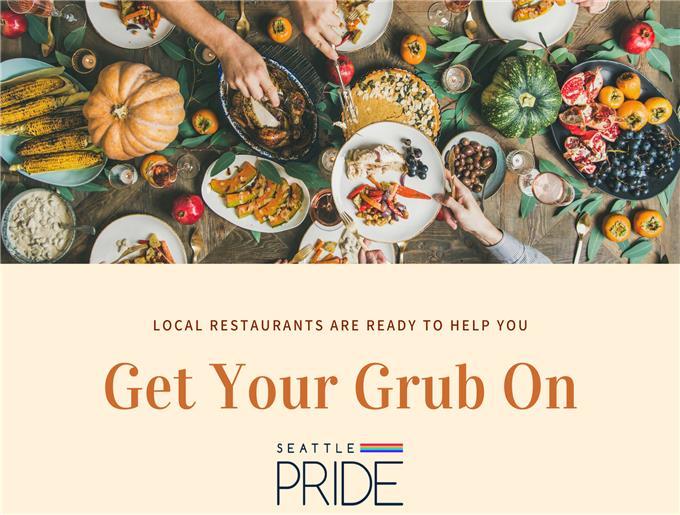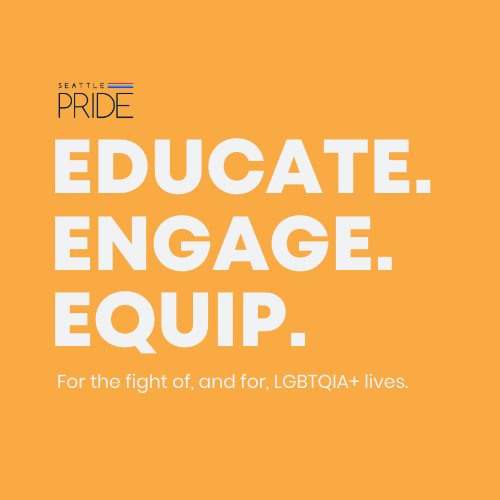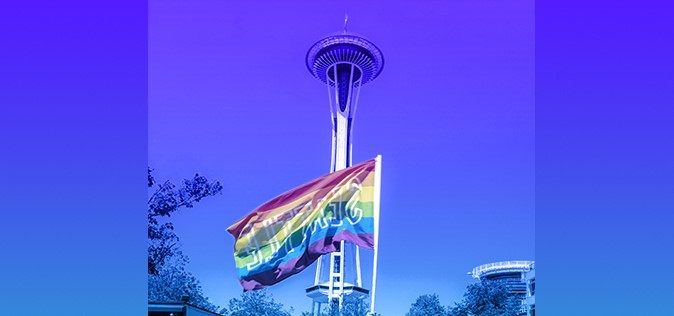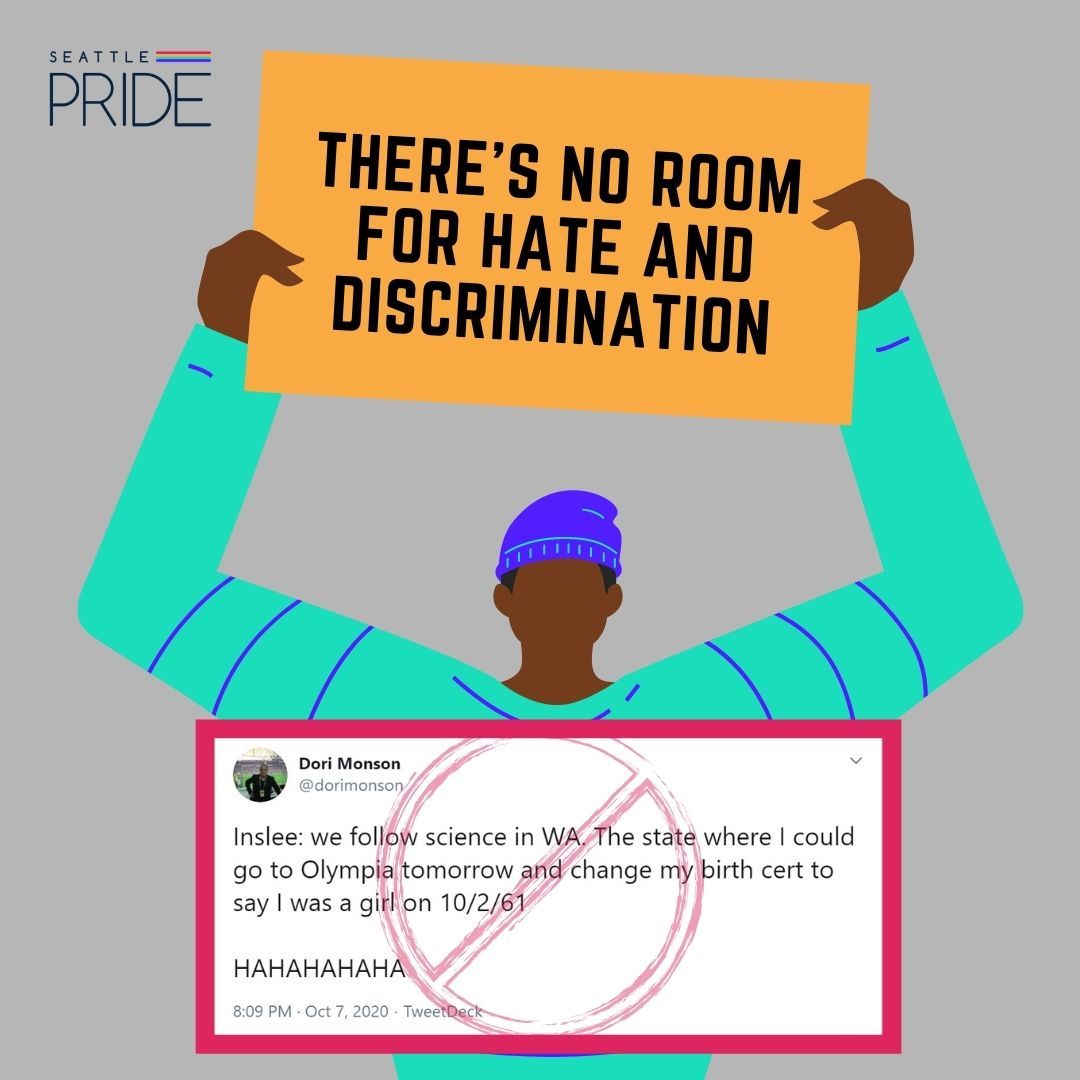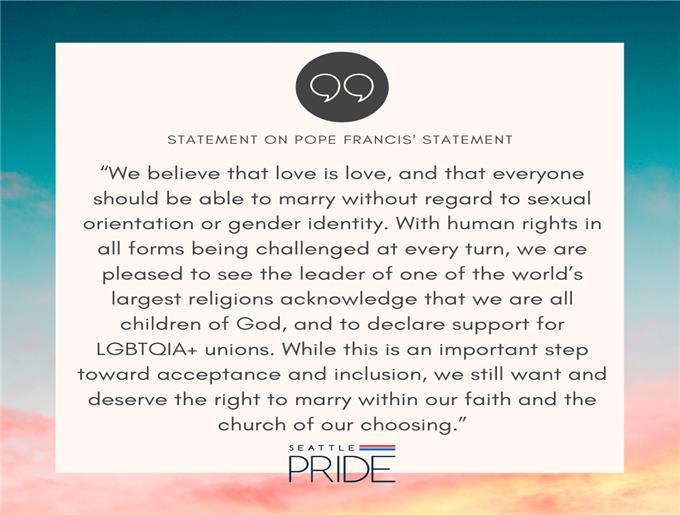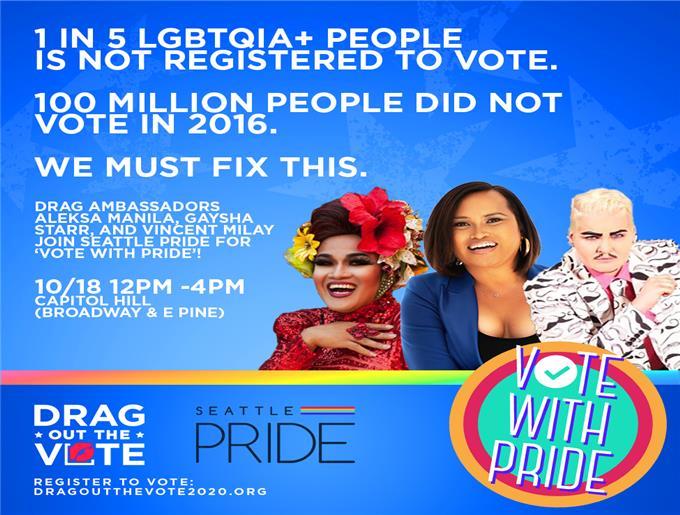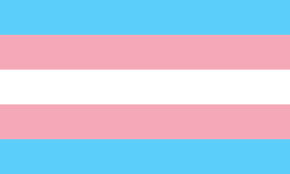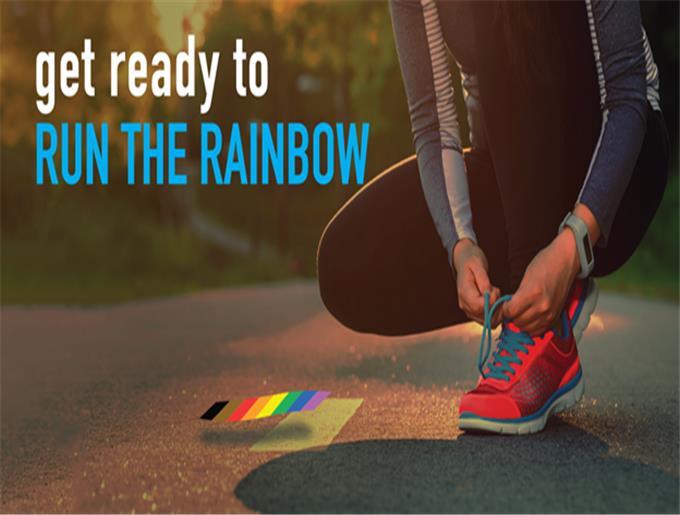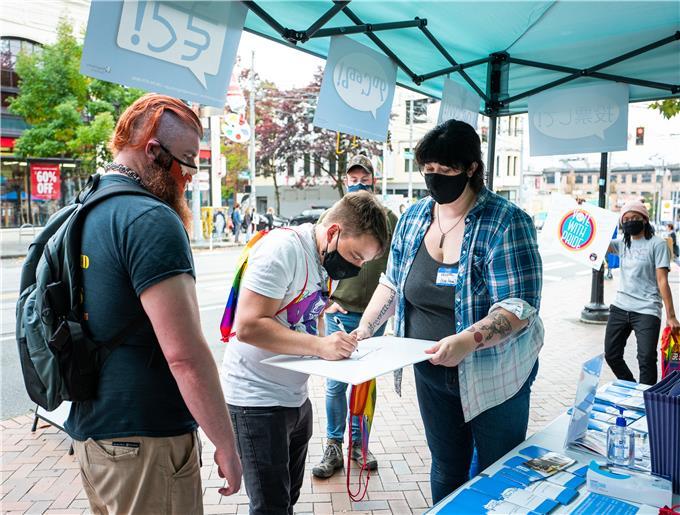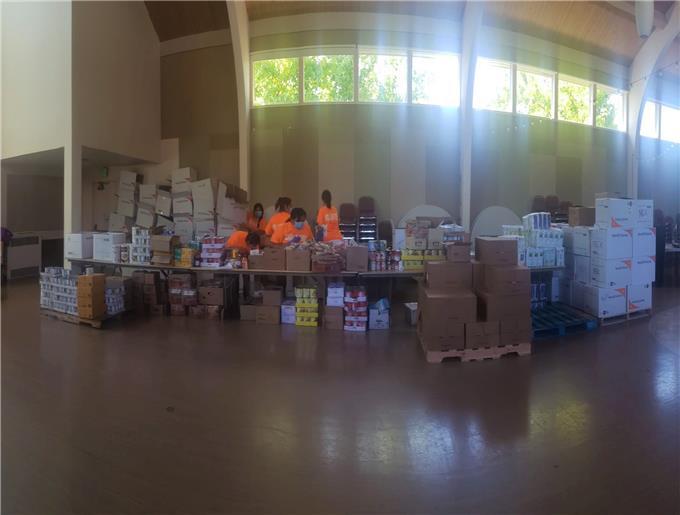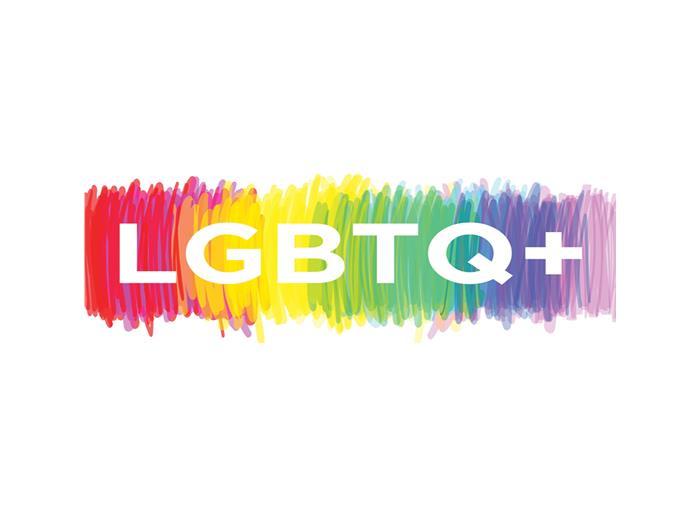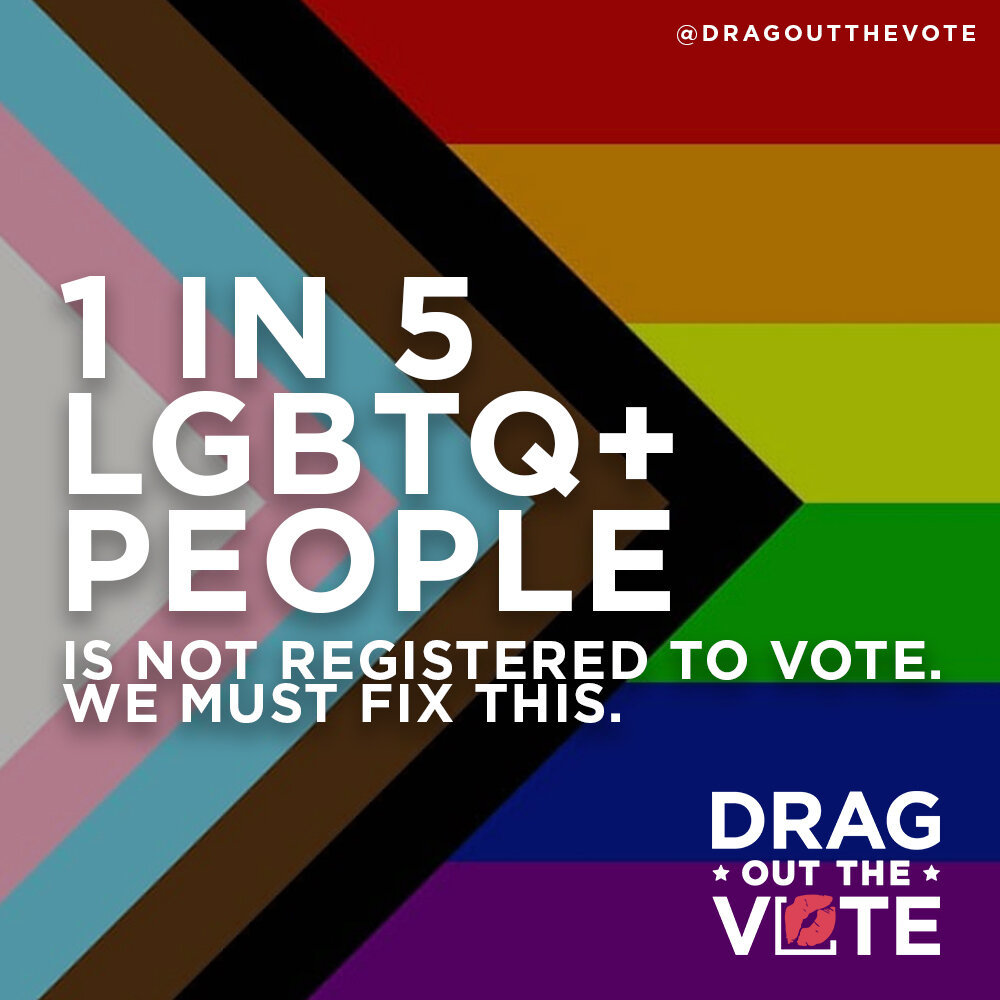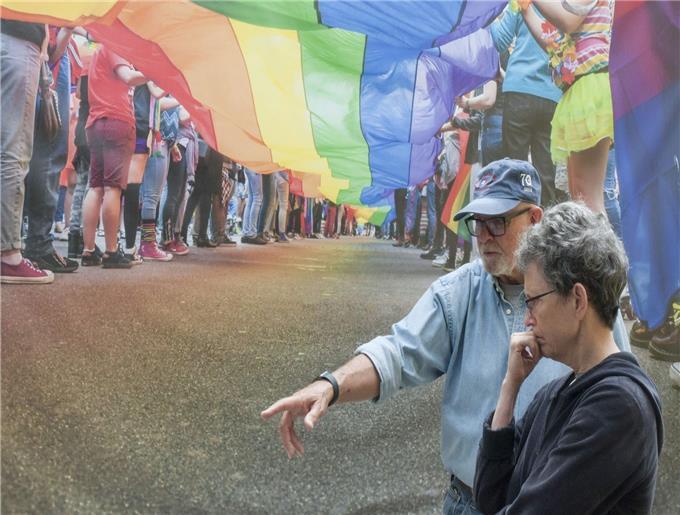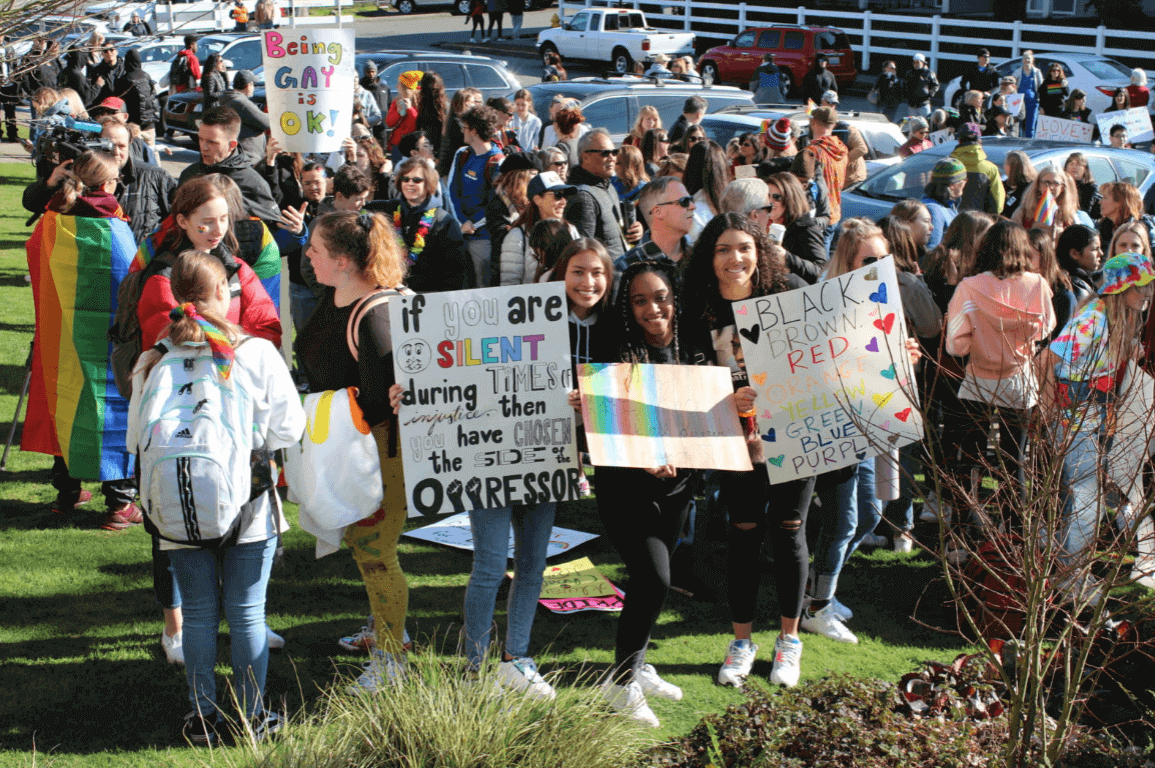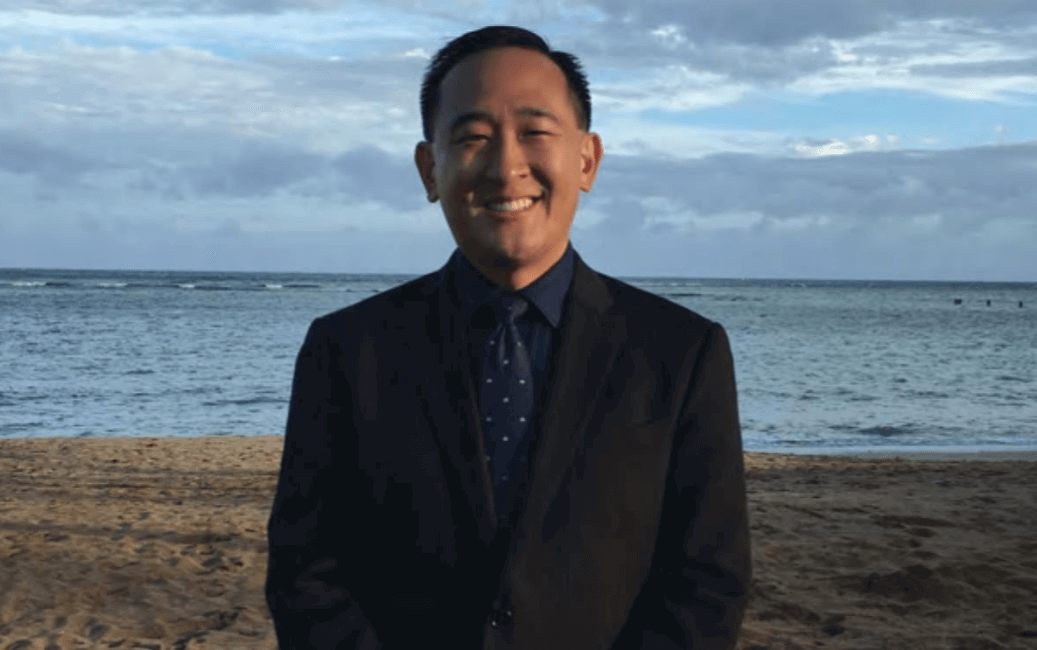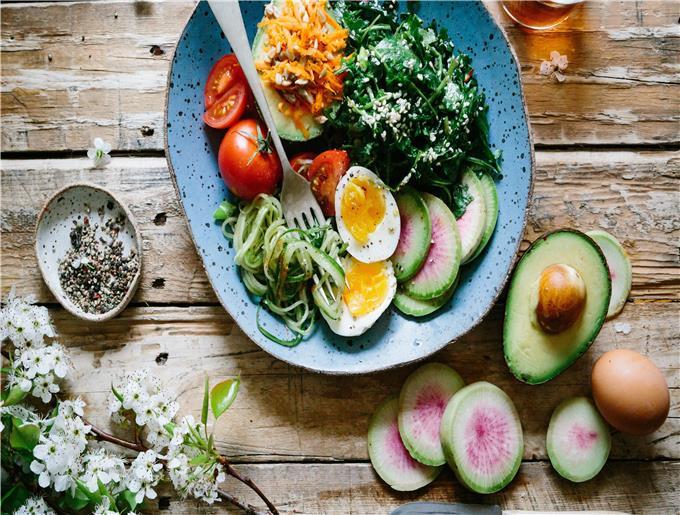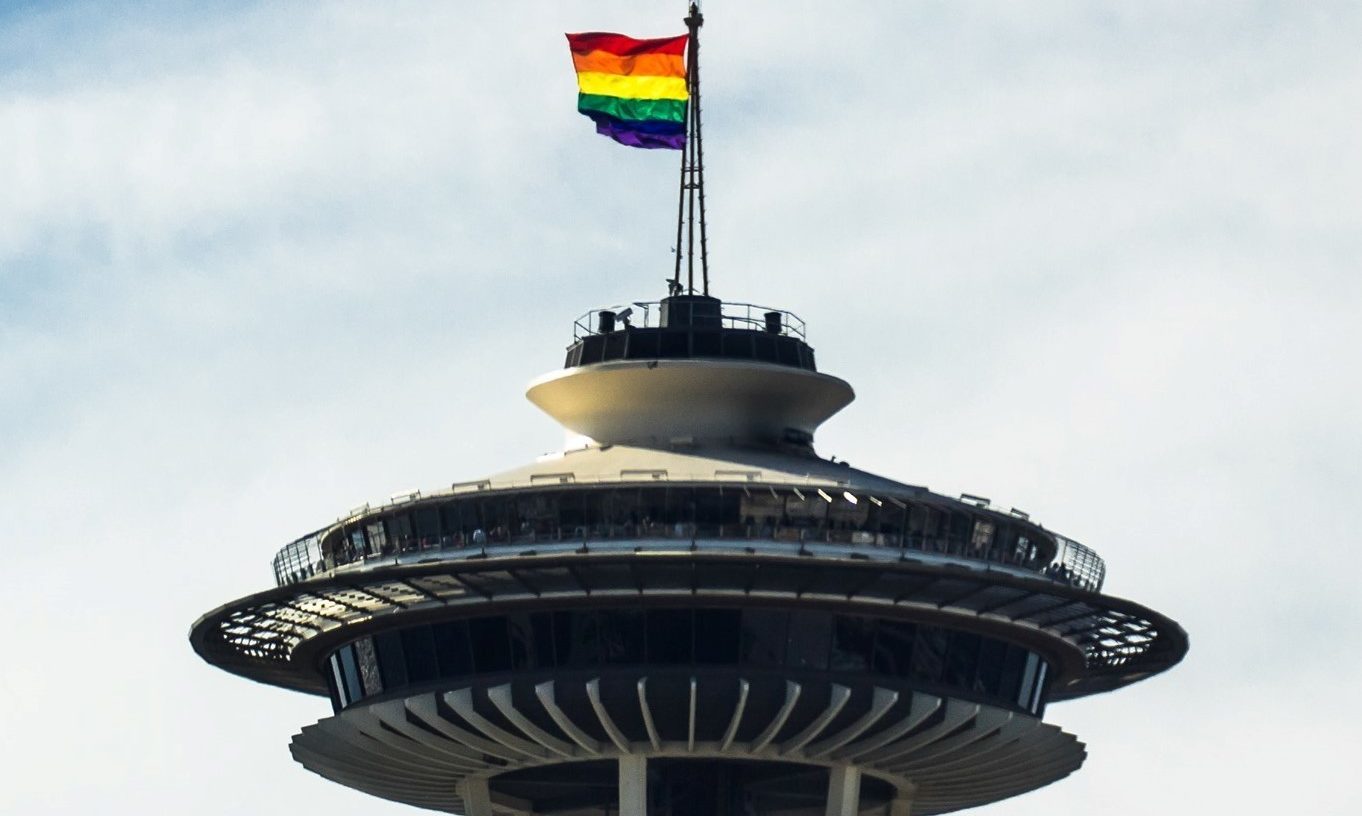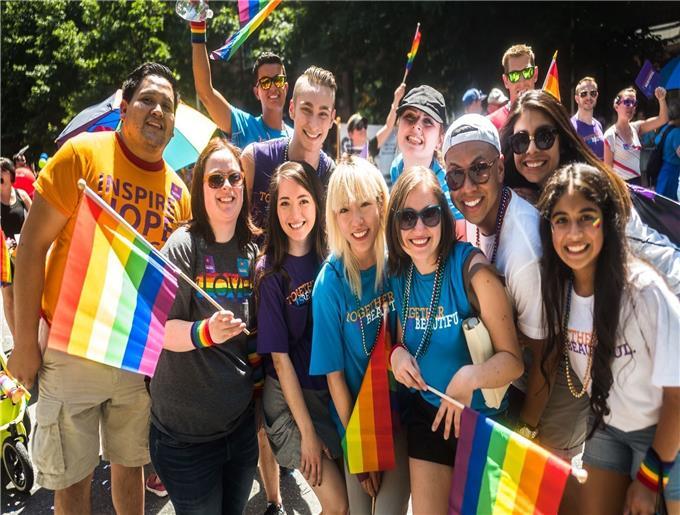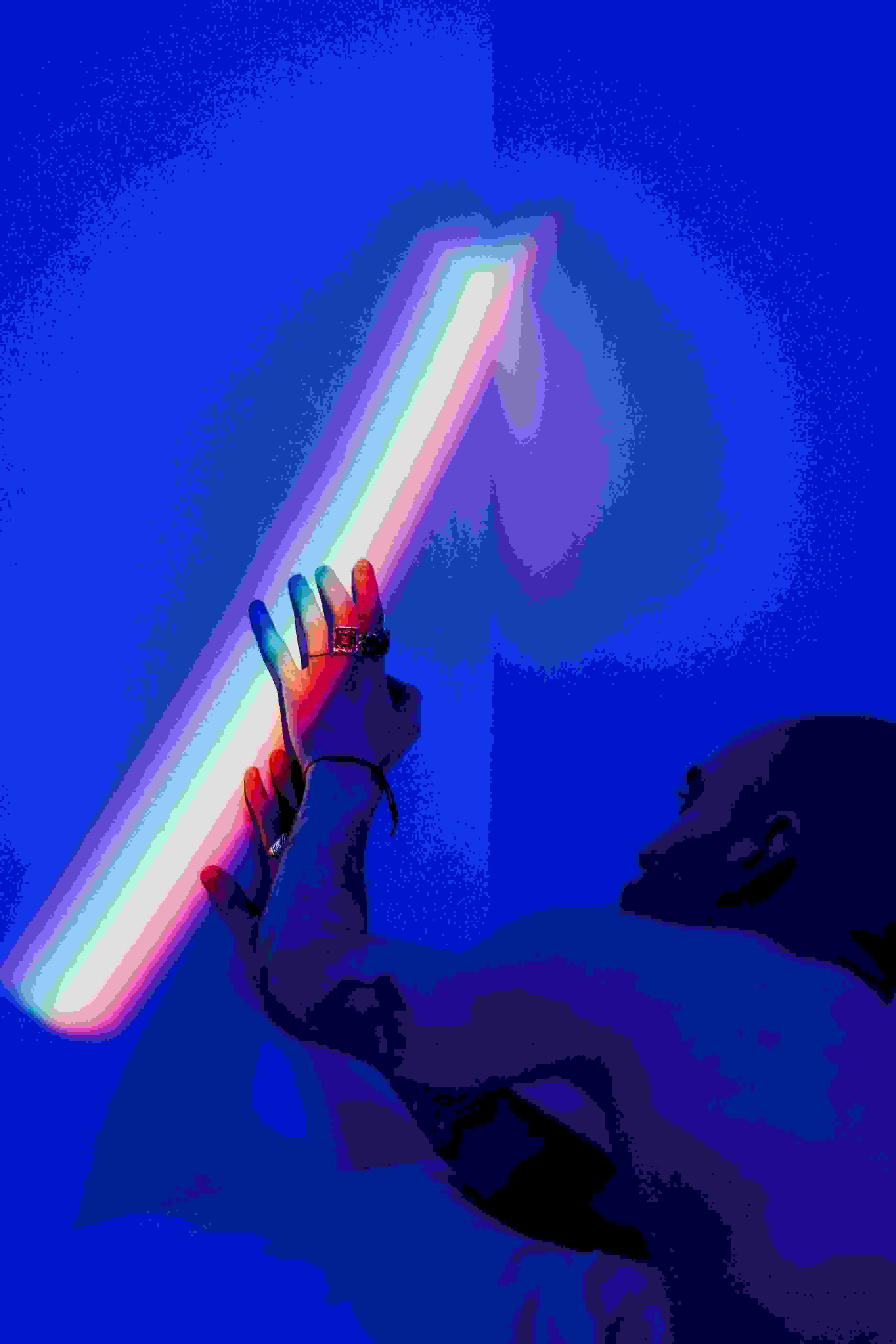
Suicide Prevention Awareness Month in the LGBTQIA+ Community & Resources
Sep 10, 2021 | Seattle Pride
Content warning: suicide, bullying, and discrimination
The COVID-19 pandemic has contributed to a collective mental health crisis rooted in existing social and economic challenges exacerbated by a shared sense of loss and isolation. Among the groups affected most critically are people of color, youth, and LGBTQIA+ individuals. This is especially true in those with overlapping identities.
The unique factors faced by the LGBTQIA+ community, especially for transgender individuals, contribute to disproportionate rates of suicidal ideation, incited by discrimination experienced regarding housing, employment, healthcare, and other areas of daily life.
September is Suicide Prevention Awareness Month, an effort to raise awareness and reduce stigma. It is also a reminder to promote resources for those in crisis. Serving on the board of directors with Seattle Pride has been an incredible opportunity to learn from my peers and the unique queer experiences we all bring to the table to promote diversity and inclusivity in our communities.
Suicide has touched my life in more ways than one, and I am far from alone in this. The LGBTQIA+ community experiences higher rates of suicidal ideation, whether passive (thoughts) or active (thoughts and intentions/plans to act on them). Why is that? What are some queer-inclusive resources for those having thoughts of suicide?
In recognition of this important day of awareness, let’s take a high-level look at the causes and effects of suicidal ideation in the queer community and some resources for those having thoughts of suicide.
What’s different for the LGBTQIA+ community?
In addition to the discrimination, bullying, and inequities that the community has experienced across generations, current global conditions and the US political climate deepen these challenges.
In what has been called a “record year” for anti-transgender legislation, anti-transgender medical care and sports bans are among the many discriminatory efforts lawmakers proposed in 2021, targeting not just the LGBTQIA+ community but youth in particular.
The Trevor Project’s National Survey on LGBTQ Youth Mental Health 2021 found that 42% of LGBTQ youth “seriously considered attempting suicide in the past year, including more than half of transgender and nonbinary youth.” In that same study, the organization shared how those same respondents found joy and strength, from watching LGBTQ people on TikTok to learning about the community’s history.
Where affirmation and representation are made possible, we nurture healthier and happier lives that counteract the discrimination and insecurities faced by these groups. Nearly 1,000 elected officials in 49 states are openly LGBTQ, doubling that number from four years ago. Nielsen reports that LGBTQ representation in media is above parity. This is not the case when looking at different intersecting identities like queer women, nonbinary people, and nearly all queer people of color. Further, a study published in 2019 by the Williams Institute found that, among transgender adults, 40.4% “reported attempting suicide at some point in their lifetimes.” 7.3% had attempted in the past year.
Despite disproportionate economic and healthcare impacts on the queer community and even more significant factors for BIPOC individuals, the LGBTQIA+ community outpaces the rest of the population in COVID-19 vaccinations—92% according to a Human Rights Campaign Foundation survey. The financial loss and social isolation of the community may have uniquely motivated quick vaccination. In particular, one study found that young people in the community were twice as likely to worry about their mental health amid the pandemic compared to their non-LGBTQIA+ peers.
It’s essential to recognize how much community and togetherness matter for us and how queer spaces nurture belonging, safety, and comfort. Queer spaces can be any number of things—welcoming family, a niche subreddit, the gayborhood, a dance floor, open arms, a Pride parade.
Mental health challenges and suicidal ideation are not new in our community, and we are living through new versions of those challenges, contributing to feelings of isolation, depression, and instability. Whether we’re part of the LGBTQIA+ community or allied, facing our challenges, or being there for others, it’s essential to recognize the signs of suicidal ideation and the resources available to us.
I am not alone. We are not alone. You are not alone.
It is okay to not be okay.
Dylan M. Austin
Board of Directors, Seattle Pride
LGBTQIA+ Inclusive Resources
To say there is a vast array of helplines and far more research than is summarized here is an understatement. My goal in writing this is to take a big-picture look at the problem and list resources that are queer-focused (or at least queer-friendly and inclusive). Another condition was that these services are free, available with accessibility in mind, and have broad hours of operation. Additionally, I considered accessibility in interpretation and language. For the safety of users, confidentiality was a must, and denoting the option to use these services without the response of traditional policing where possible was top of mind.
National Suicide Prevention Lifeline
(800) 273-8255
For Deaf + Hard of Hearing/TTY Users: Use your preferred relay service or dial 711 then 1-800-273-8255.
Hours: Available 24 hours.
Languages: English, Spanish, Tele-Interpreters service at crisis centers, supporting 150+ languages
https://suicidepreventionlifeline.org/ (online chat available)
“The Lifeline provides 24/7, free and confidential support for people in distress, prevention and crisis resources for you or your loved ones, and best practices for professionals.”
The Gay, Lesbian, Bisexual and Transgender National Hotline
(888) 843-4564
https://www.glbthotline.org/hotline.html
Hours: vary, specified on site
“We provide a safe space that is anonymous and confidential where callers can speak on many different issues and concerns including, but limited to, coming out issues, gender and/or sexuality identities, relationship concerns, bullying, workplace issues, HIV/AIDS anxiety, safer sex information, suicide, and much more.”
The GLBT National Youth Talkline
(800) 246-7743
https://www.glbthotline.org/talkline.html
Hours: vary, specified on site
“The LGBT National Youth Talkline is staffed by highly trained volunteers who identify somewhere on the LGBTQ spectrum, from all ages, walks of life and from all over the United States.”
Trans Lifeline
(877) 565-8860
Hours: “The Hotline is under construction, operating at significantly reduced capacity starting Aug 1: Hours: 5 pm ET / 2 pm PT – 1 am ET / 10 pm PT, 7 days a week.” [*Message posted to site as of September 2021.]
Languages: English, Spanish
“Trans Lifeline provides trans peer support for our community that’s been divested from police since day one. We’re run by and for trans people.”
The Trevor Project
(866) 488-7386
Text START to 678-678
Hours: 24/7
http://www.thetrevorproject.org/ (online chat available)
“The Trevor Project is the leading national organization providing crisis intervention and suicide prevention services to lesbian, gay, bisexual, transgender, queer & questioning (LGBTQ) young people under 25.”
Crisis Text Line
Text START to 741-741
Hours: 24/7.
Languages: English, Spanish
https://www.crisistextline.org/
“Crisis Text Line is here for any crisis. A live, trained Crisis Counselor receives the text and responds, all from our secure online platform. The volunteer Crisis Counselor will help you move from a hot moment to a cool moment.”
911 Alternatives for Those in Crisis
Founded in June 2020, Don’t Call the Police is “an online directory of local resources available as alternatives to contacting law enforcement,” meant to address comfortability and safety levels with police response to crisis calls, favoring community-based solutions and de-escalation, rather than officers with guns. Olympia and Seattle are included in the directory.
Seattle Pride’s Mission is to “create unity, honor diversity, and achieve equal human rights throughout our region and the world.” Over the years, we’ve come to understand that Pride parades and other celebrations are crucial. What we do every day creates visibility, representation, and community. But they’re not enough. We’re continually expanding our advocacy and allyship efforts year-round to promote diversity and inclusivity—and to call our community to action.
Learn more about our calendar of events and how to get involved on our Events page, here: https://www.seattlepride.org/e...

